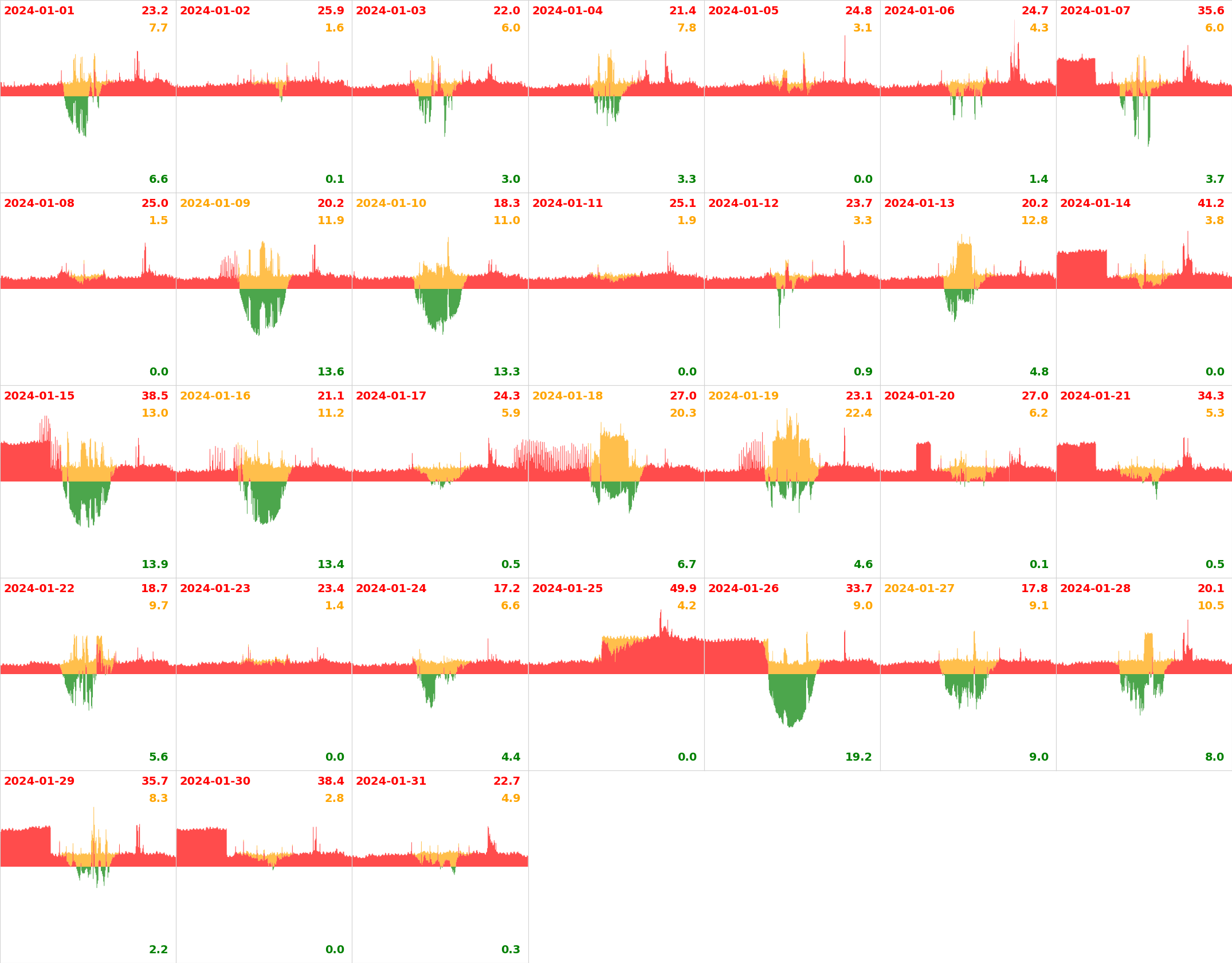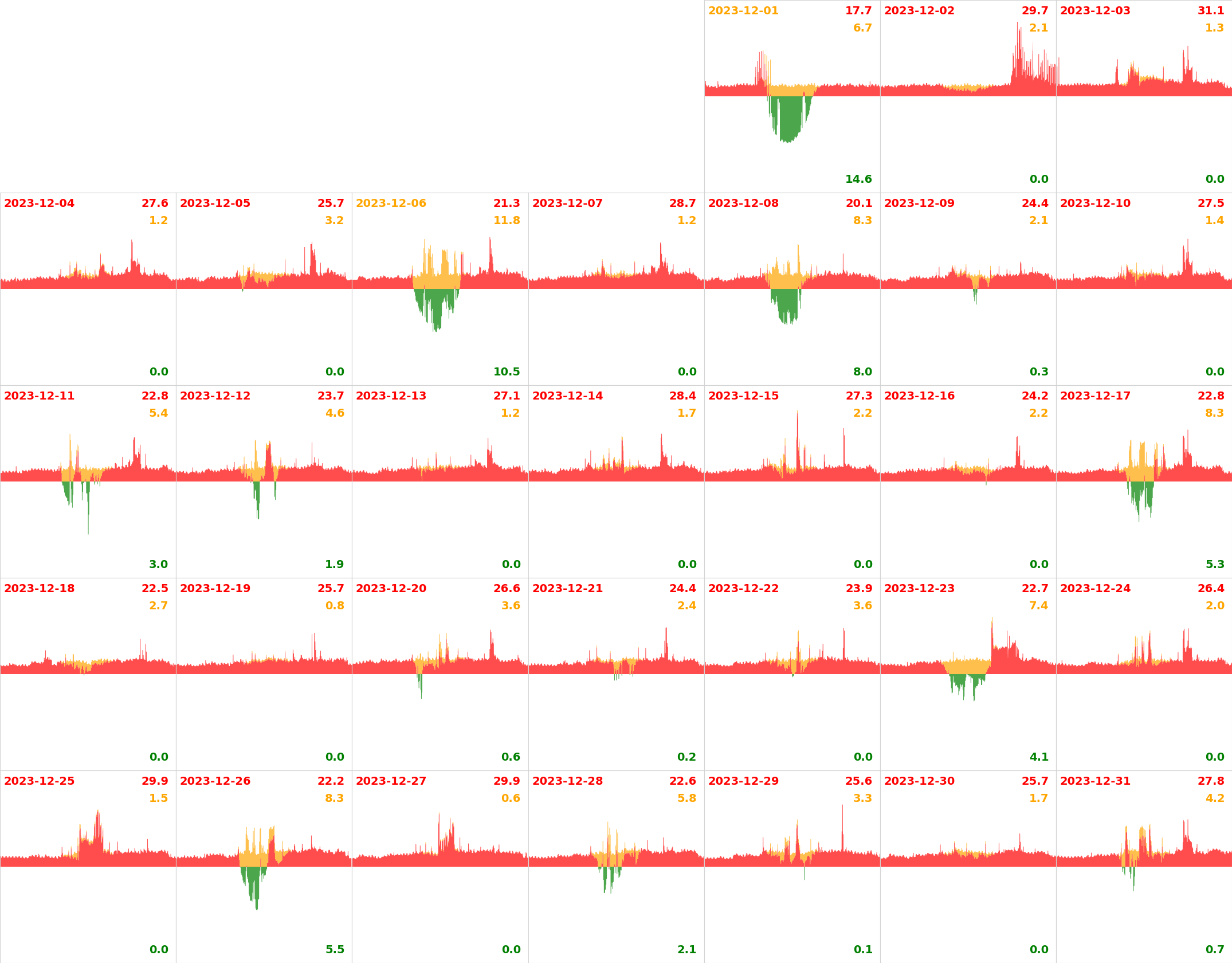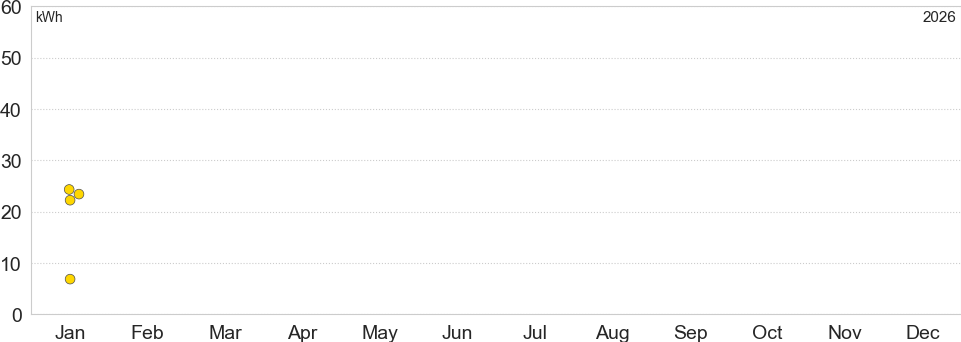
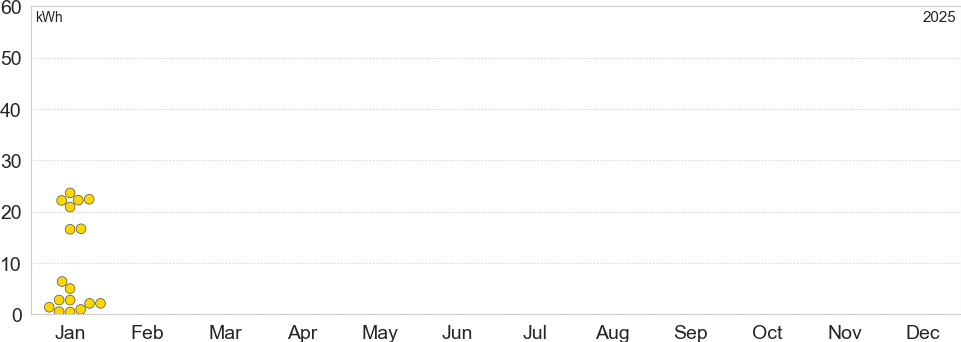
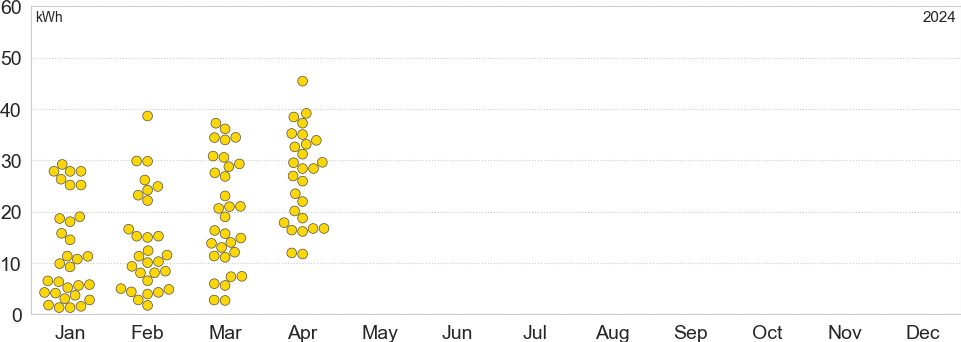
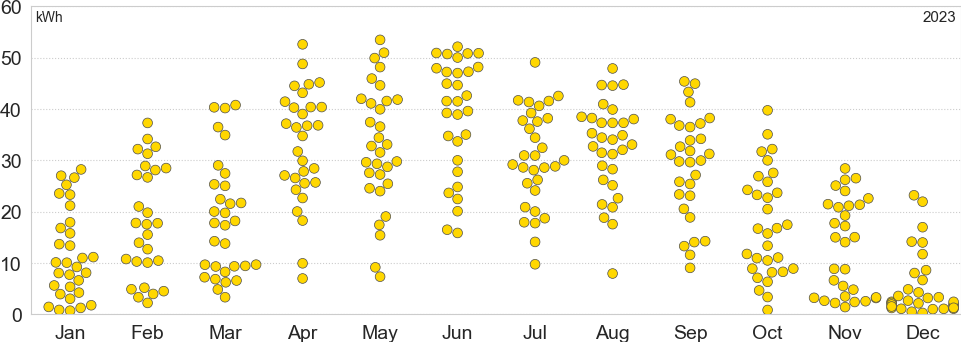
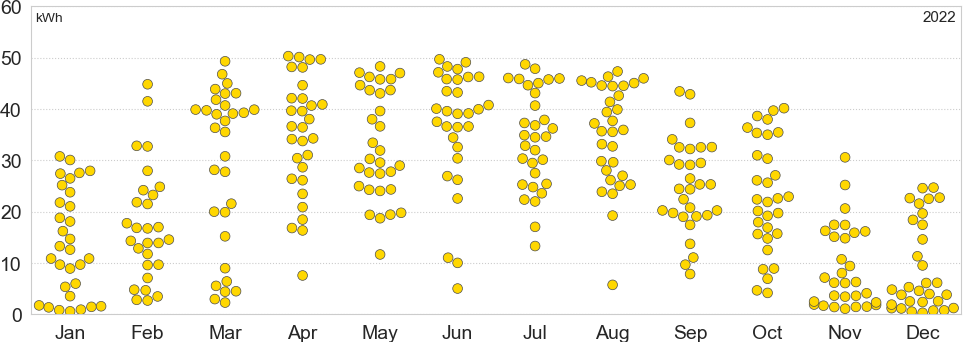
Graphs of the electricity generation statistics gathered from our solar PV generation system.
Our cumulative annual power generation in MWh (bars), with shading indicating the contribution of the respective months. (Generation started on 9 Jan 2014.)
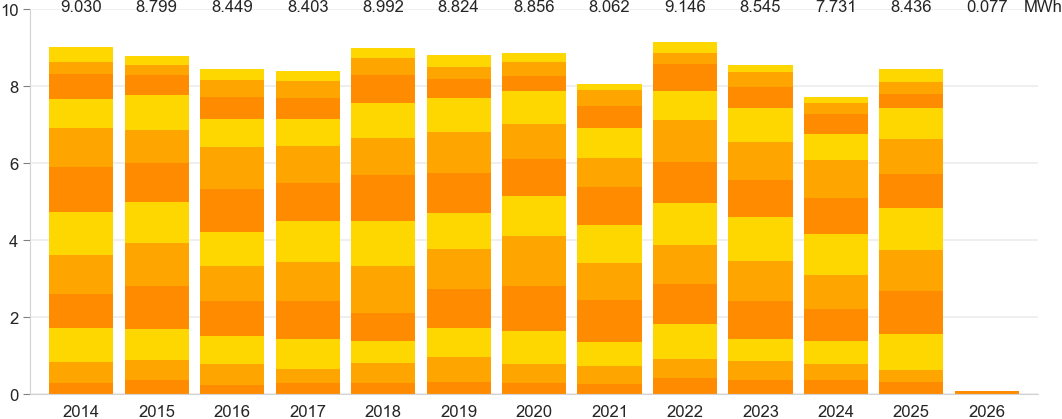
Our annual power generation in MWh, with each month’s contribution base-aligned, to allow comparison across months. (Generation started on 9 Jan 2014.)
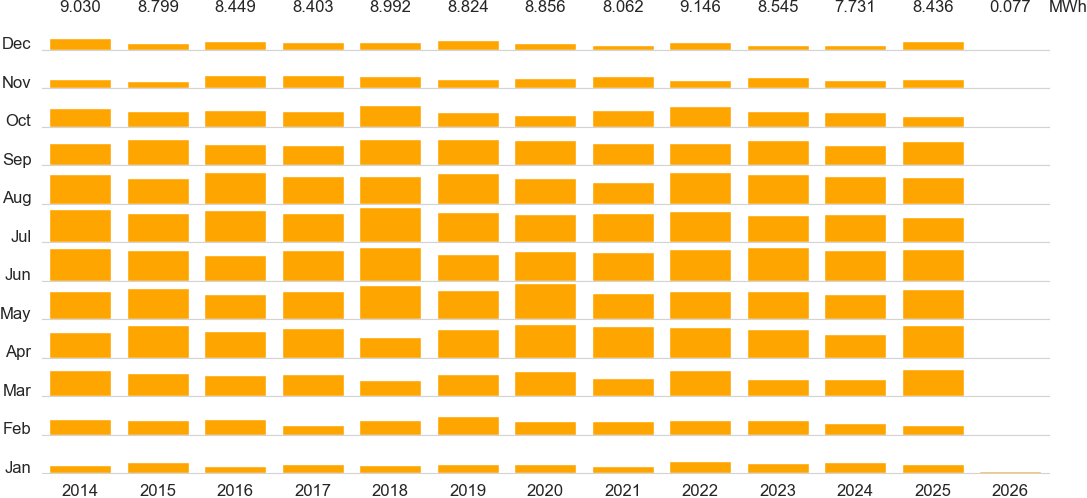
Our daily power generation in kWh (bars), along with minimum (dot-dashed), lower quartile (dashed), median (solid), upper quartile (dashed), maximum (dot-dashed) running averages over the previous 14 day sliding window.
On 29 April 2016 a quarter of the panels stopped generating. On 7 May 2016, a further quarter of the panels were taken offline for a short while around 11am, to help diagnose the fault. On 16 May the whole array was switched off for a short while, while panels were diagnosed and reconfigured; it was switched back on with all but one panel working. On 2 June 2016 the failed panel was replaced.













Our daily power generation in kWh, per month, using a jitter plot (some jitter is applied to the horizontal position, to prevent overlapping).





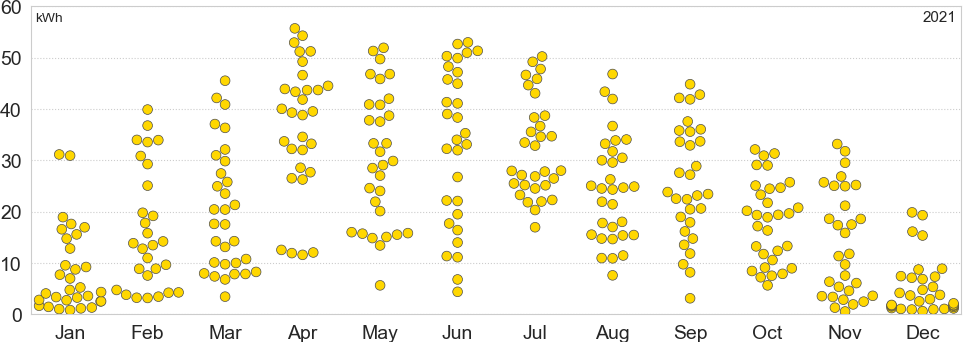
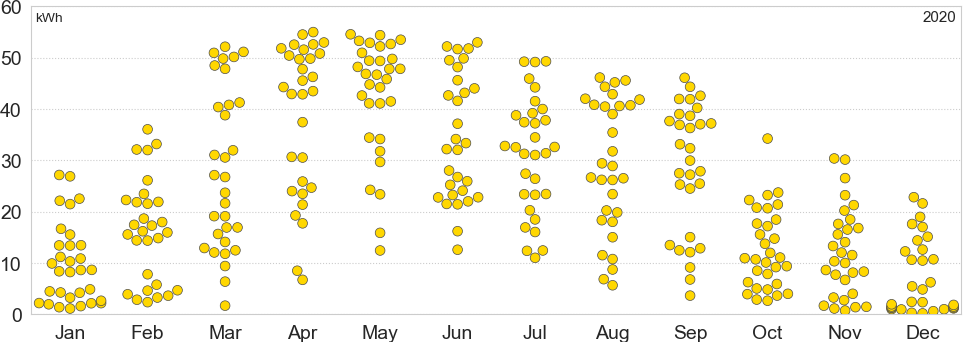
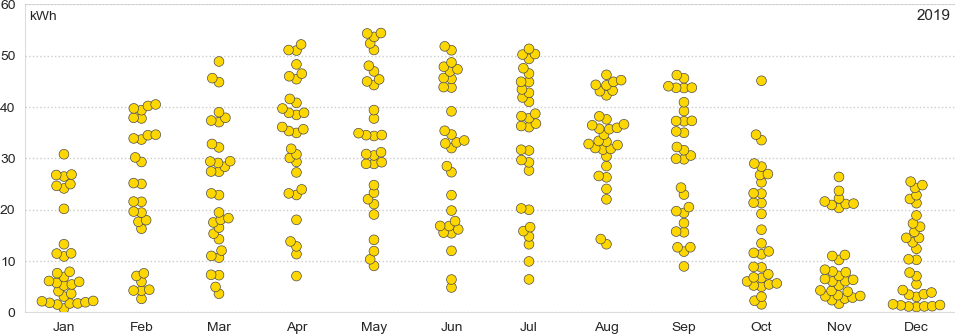
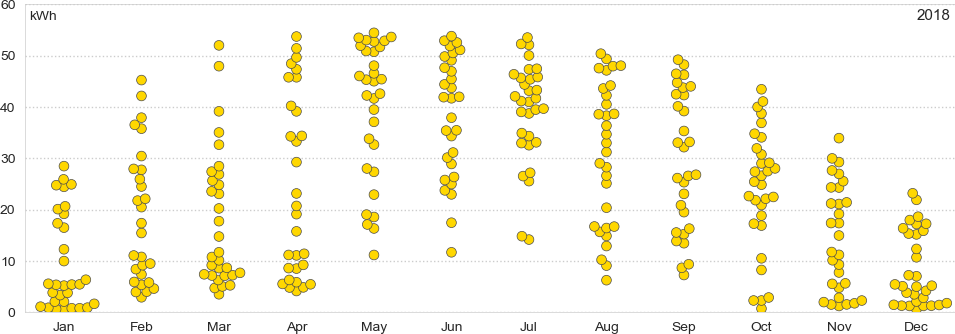
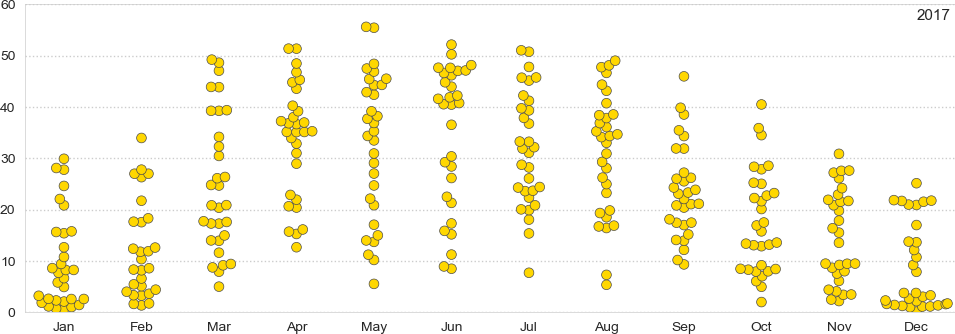
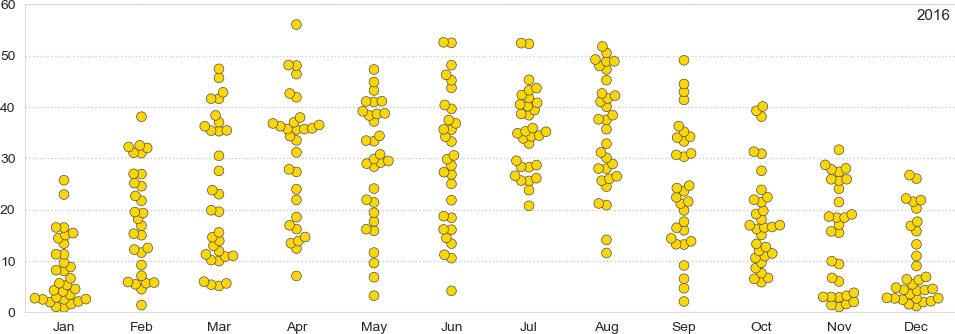
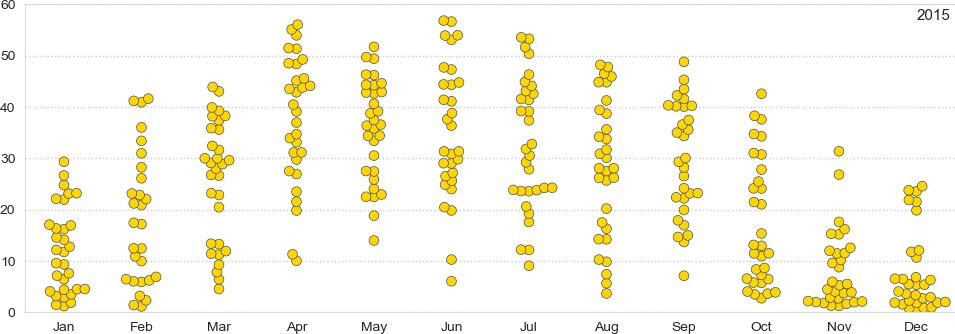
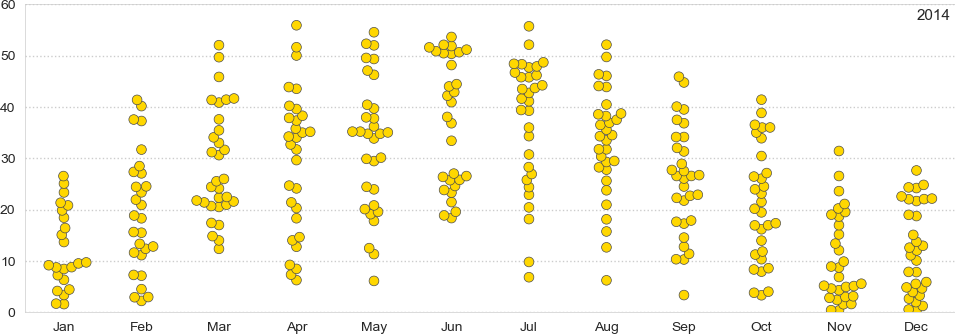
Our daily power generation in kWh, per month, using violin plots (a notched box and whisker plot—where the box shows the inter-quartile range, with 95% confidence interval notches; whiskers show data within 1.5*IQR—plus a kernel density plot). The final, partial, month tends to have larger notches, because it has less data.
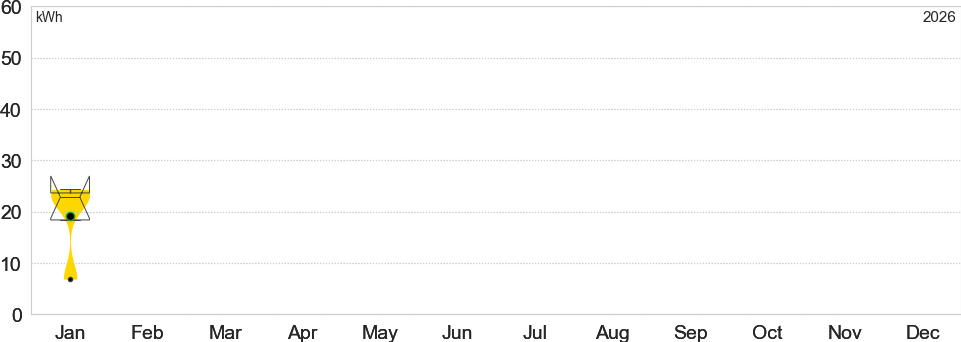
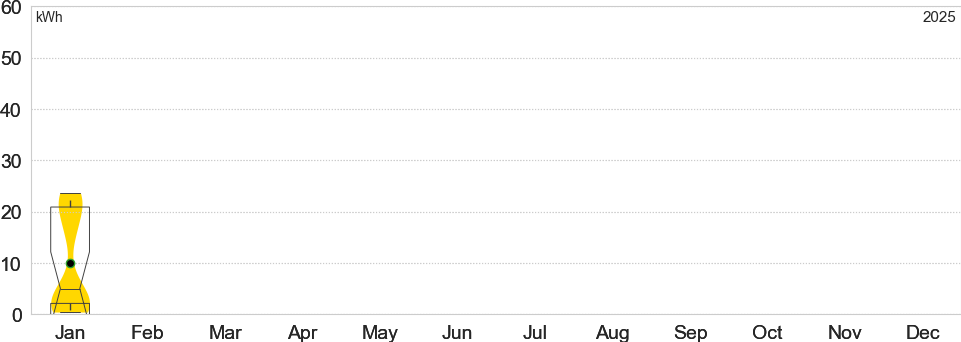
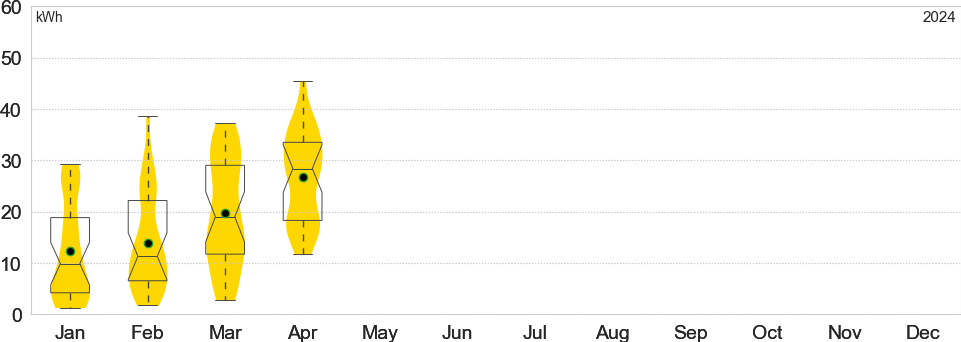
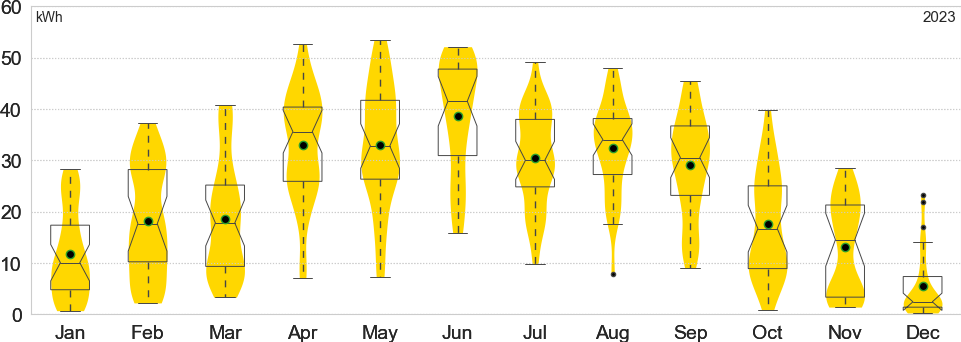
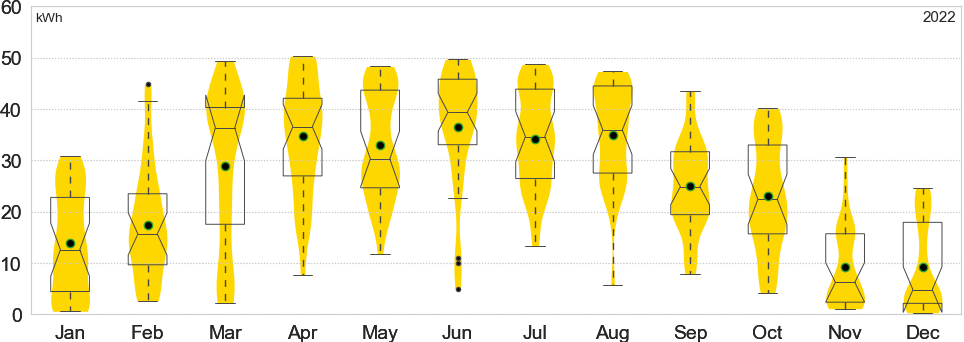
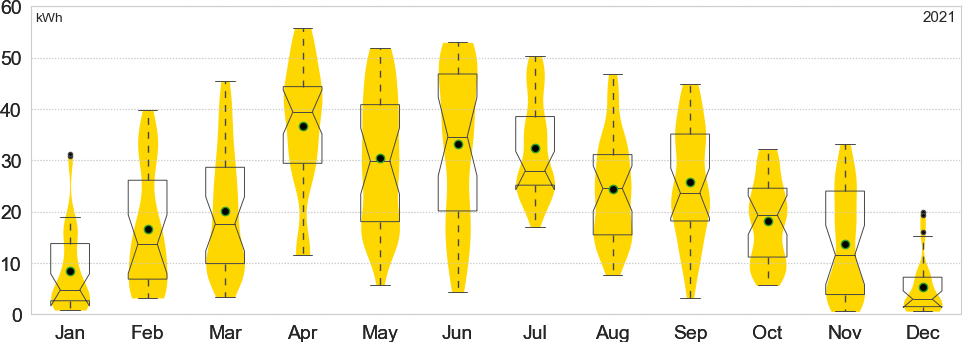
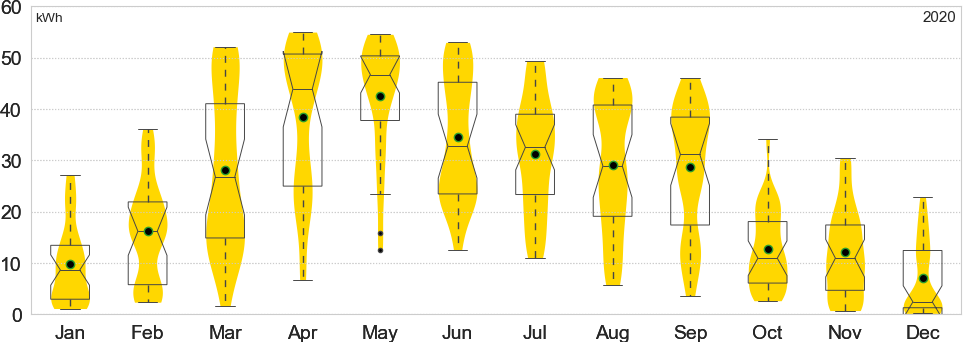
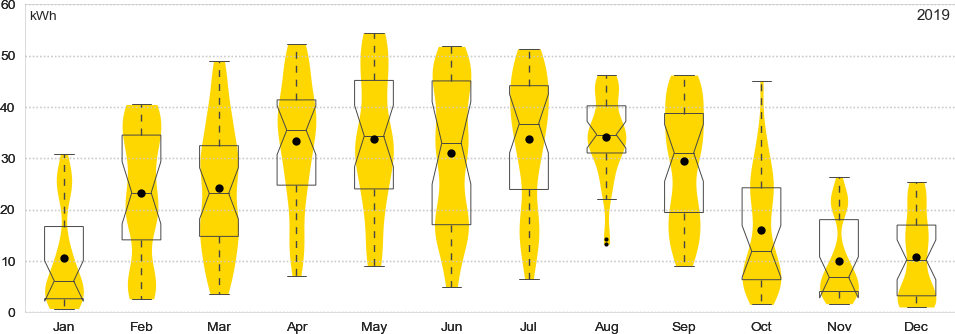
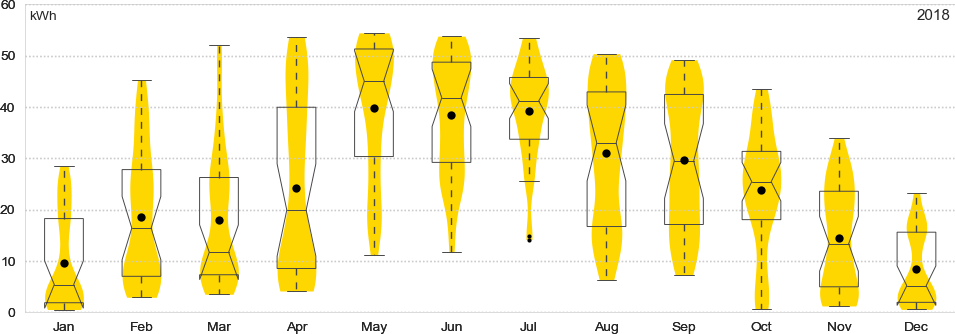
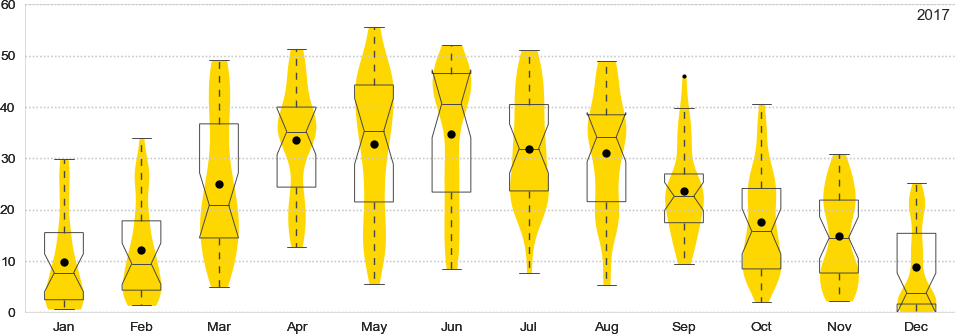
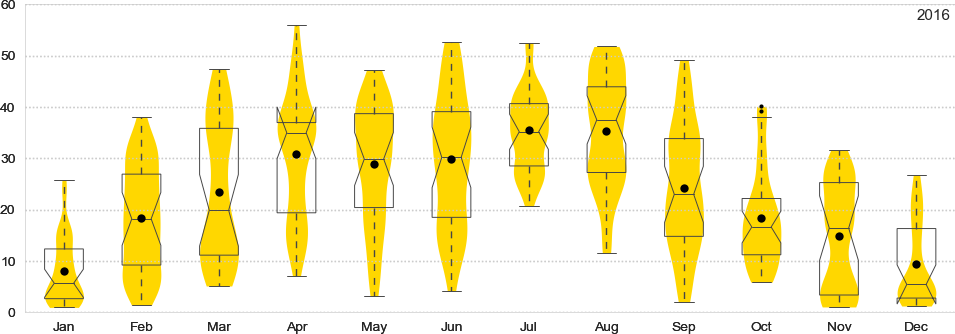
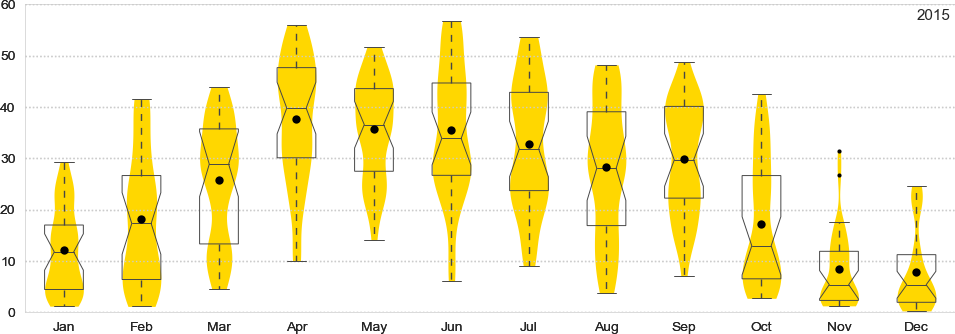
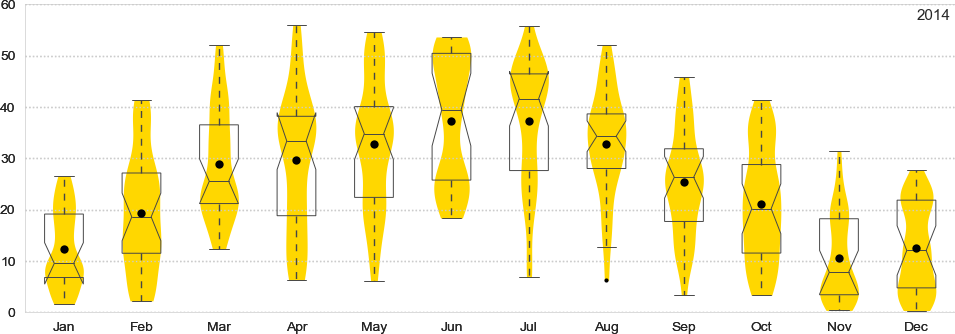
The vertical time axis runs from 3:00am to 9:00pm GMT. There is one column of data per day. Data is gathered every 5 minutes.
Each pixel represents the energy generation at the sample point. The colour indicates the energy generation in the relevant interval: darker colours indicate more energy.
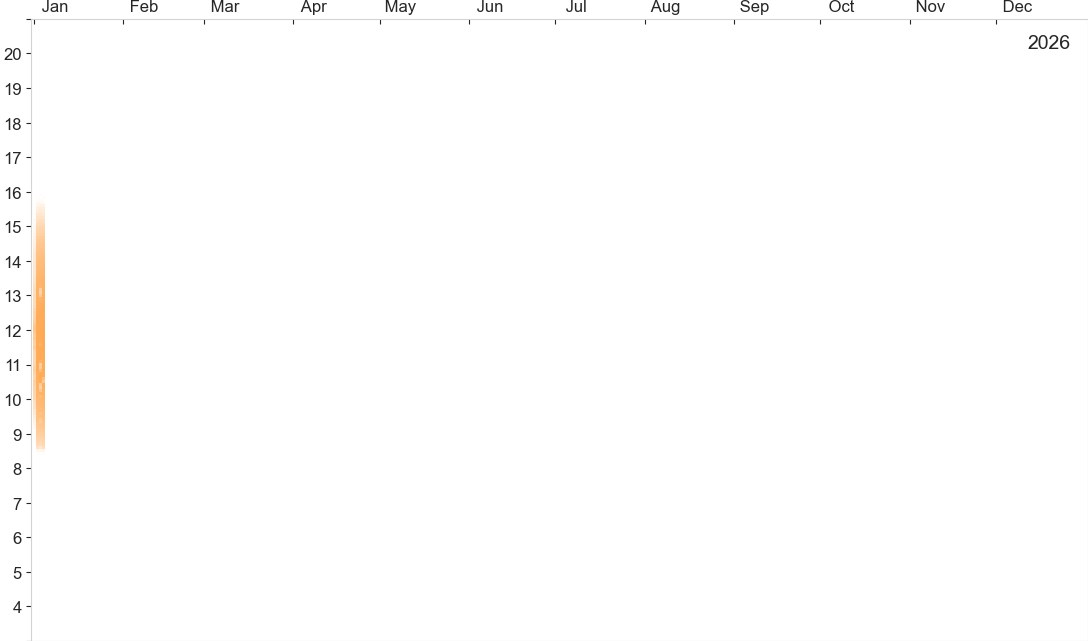
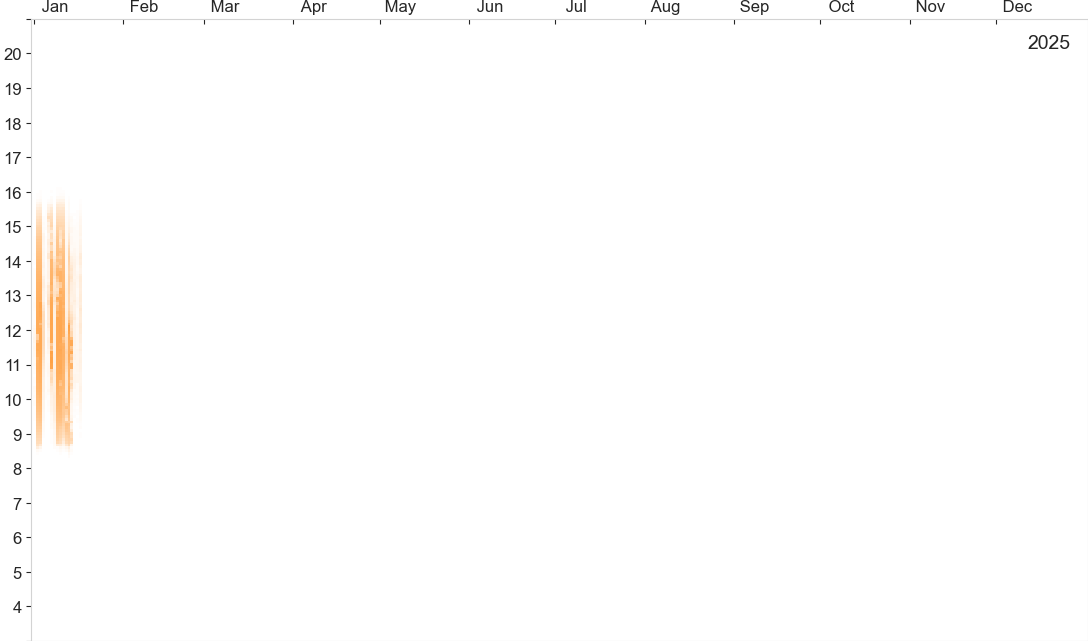
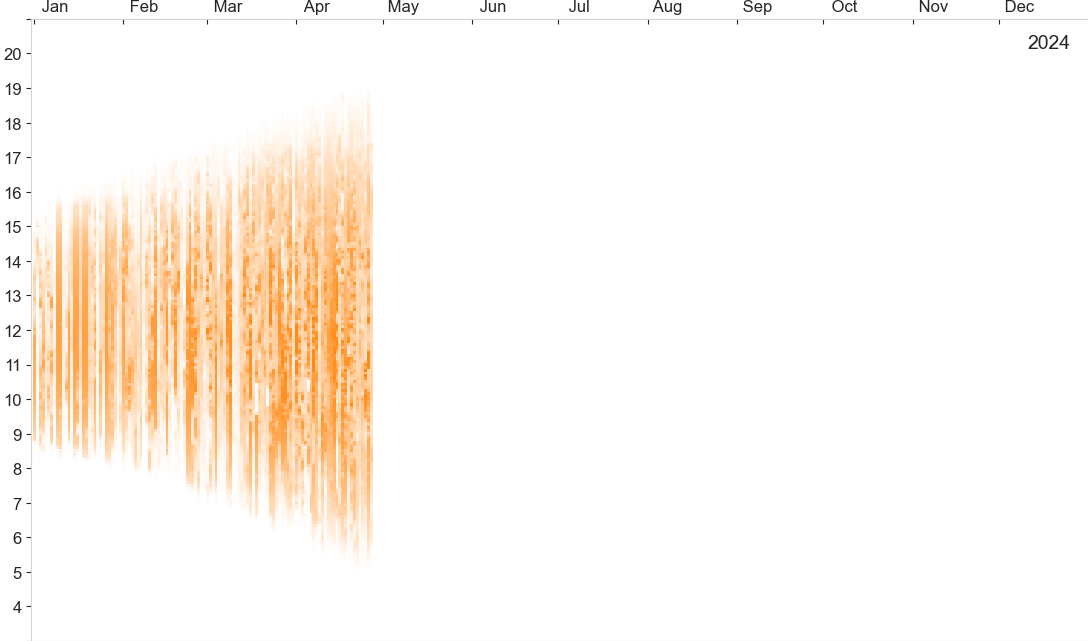
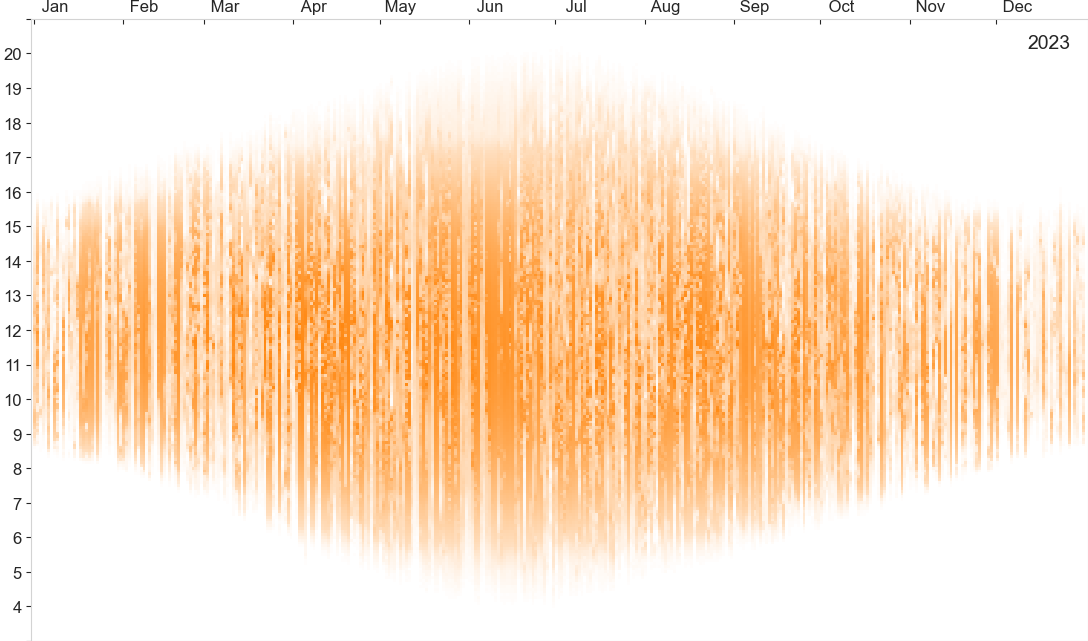
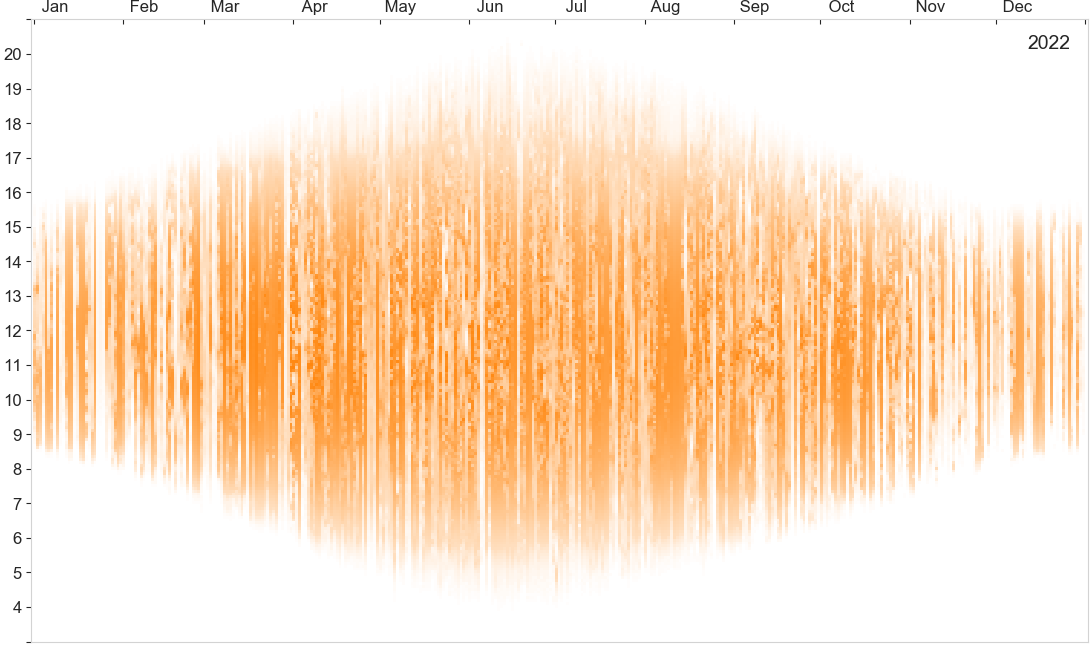
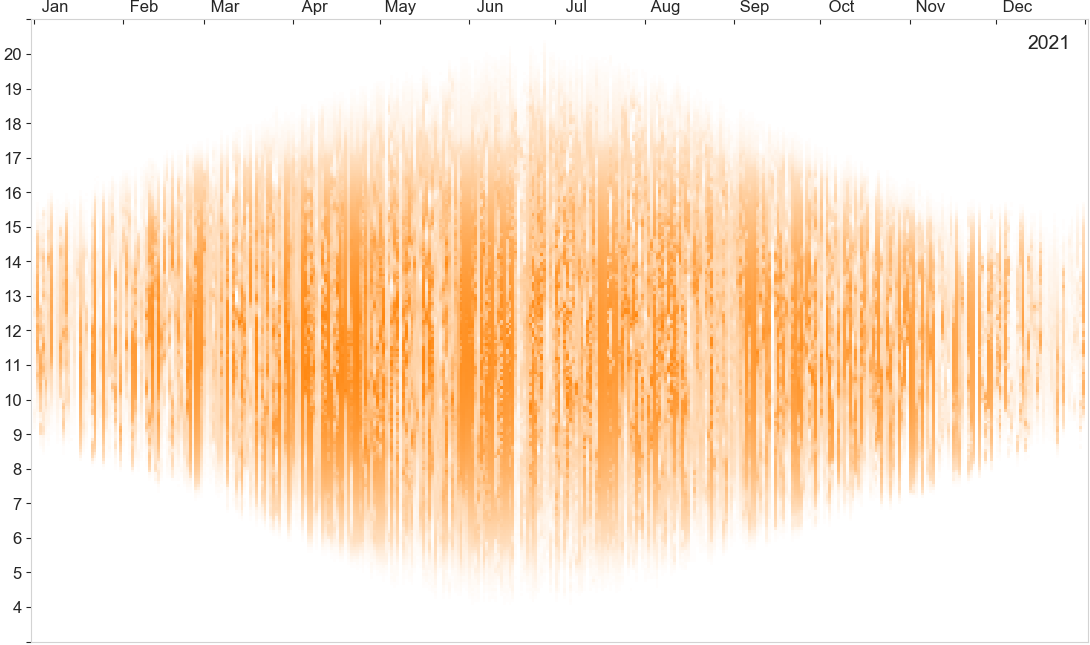
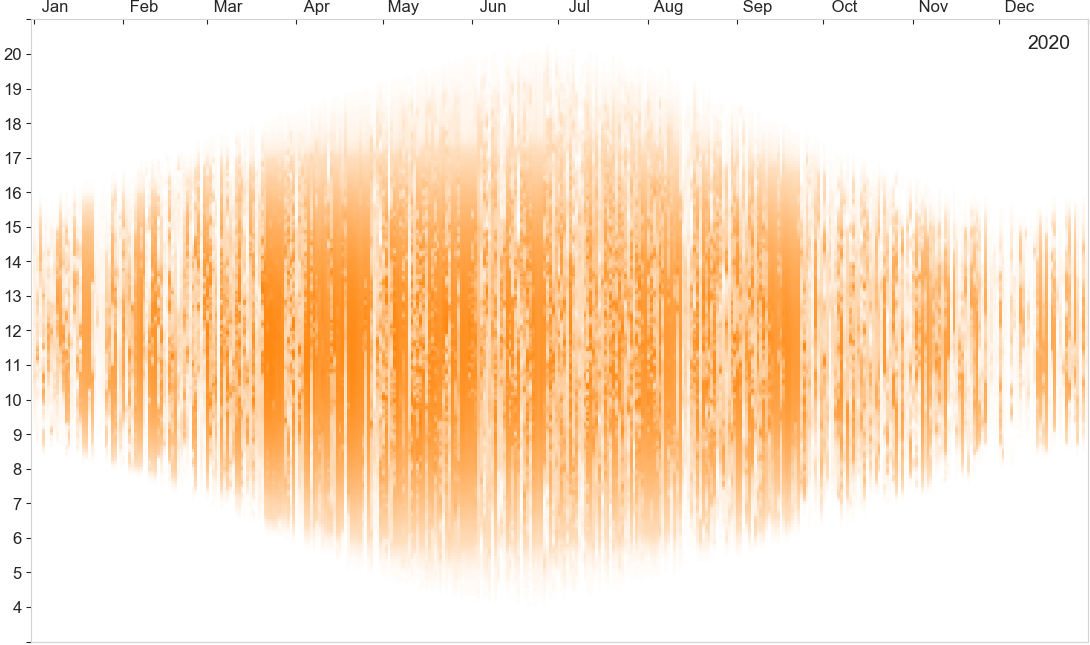
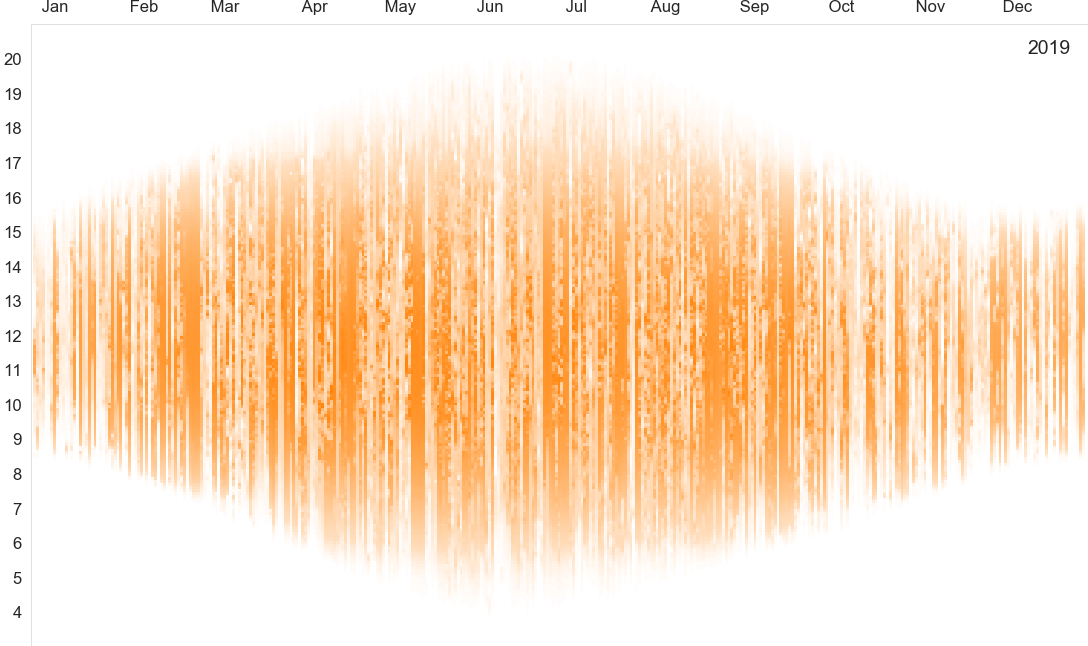
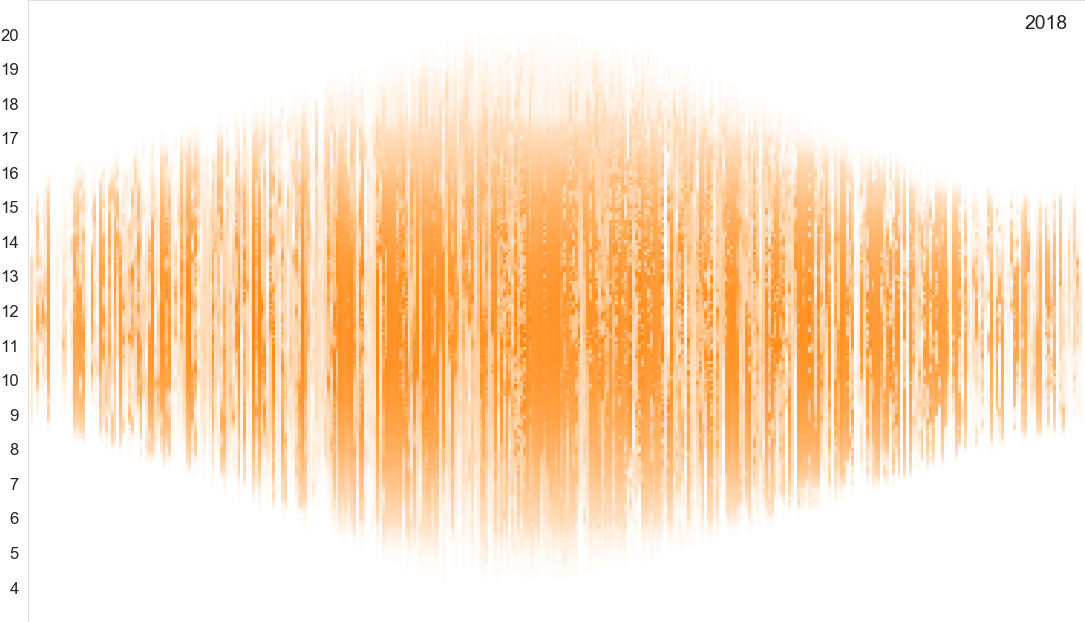
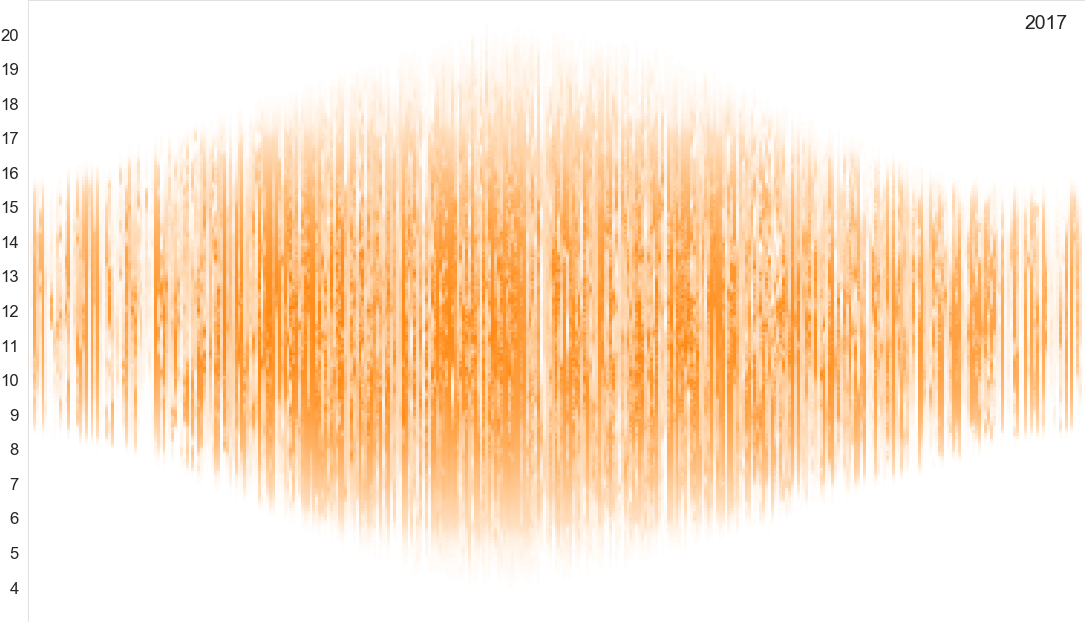
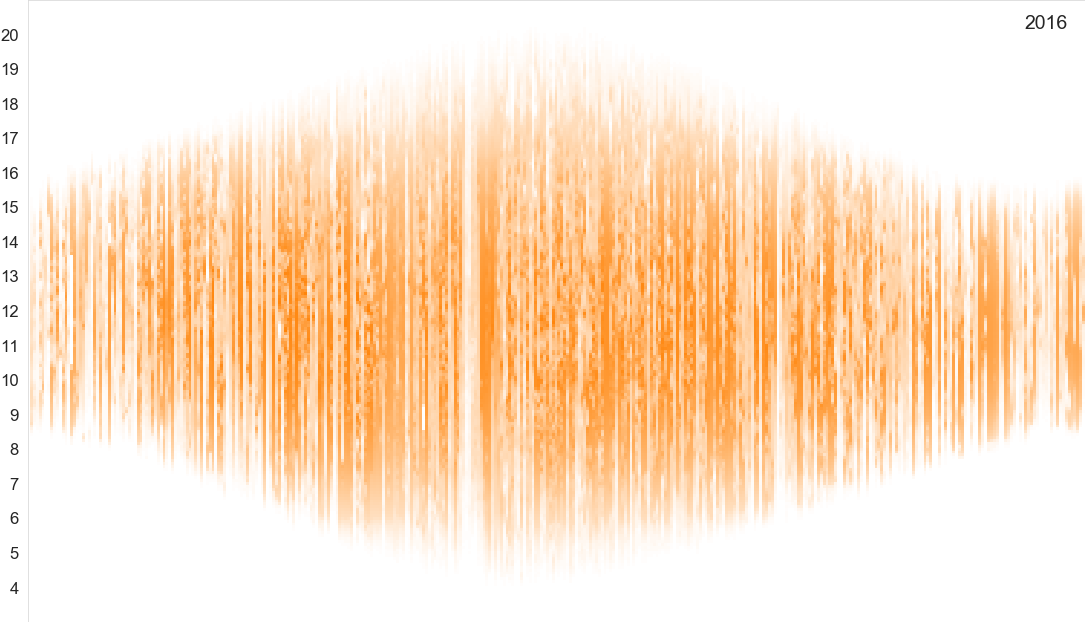
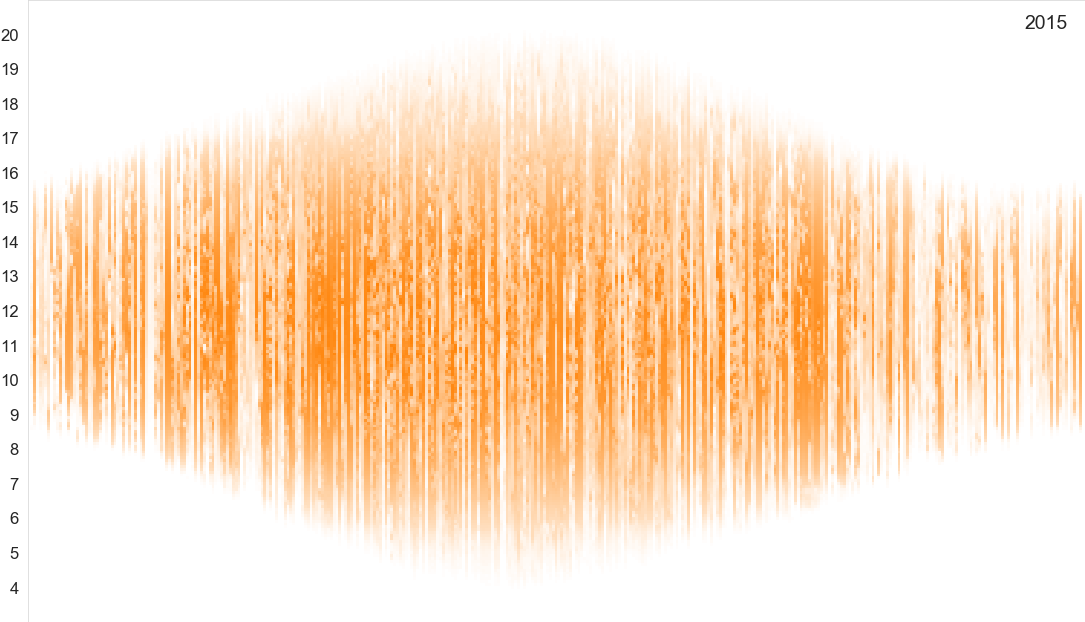
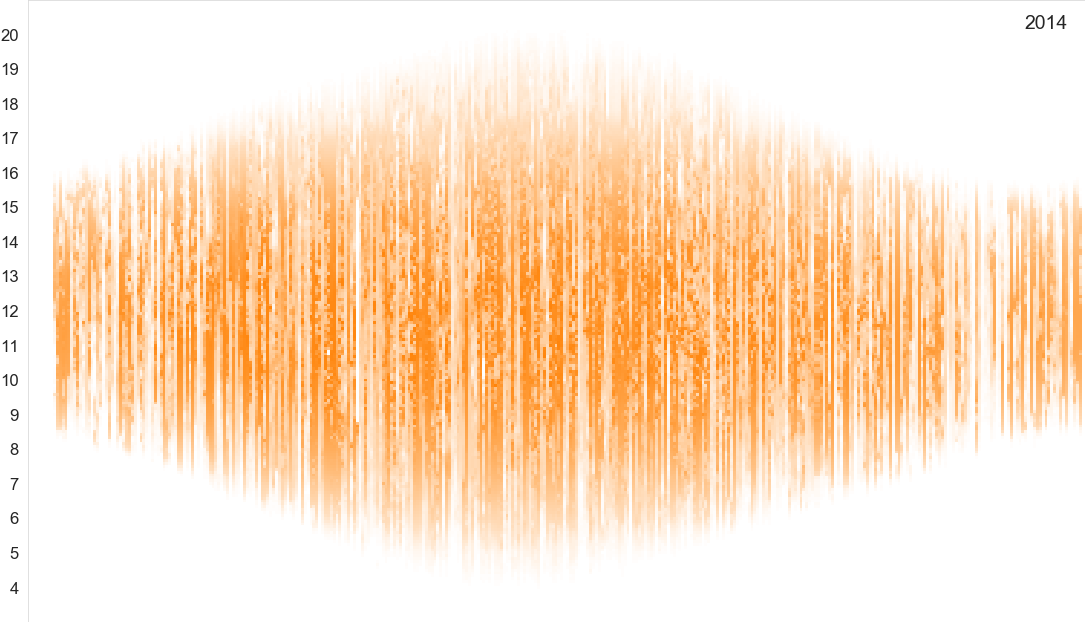
Data is gathered at 5 minute intervals. The horizontal time axis runs from 3:00am to 9:00pm GMT. The vertical axis runs from zero to 8kW. The orange regions indicate the minimum, lower quartile, median, upper quartile, and maximum generation at that time, over the month. The line indicates the actual generation at that time (or the monthly mean, for the monthly average plots). The number in the top right is the total generation in kWh that day (or the monthly mean, for the monthly average plots).
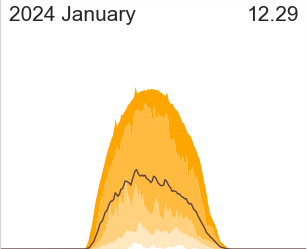
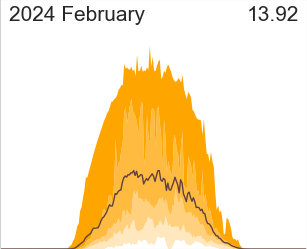
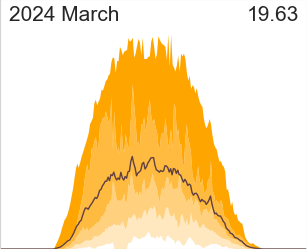
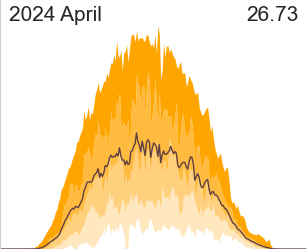
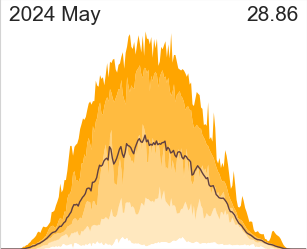
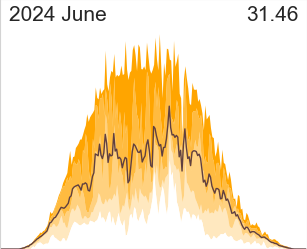
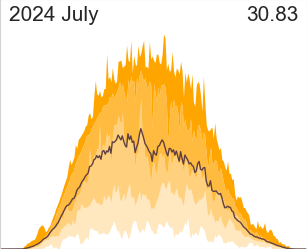
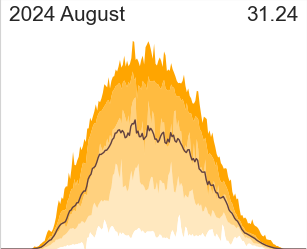
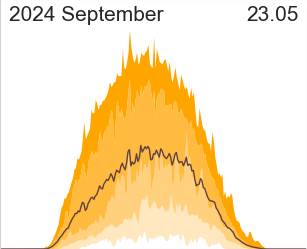
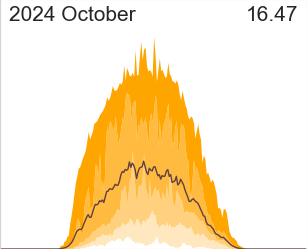
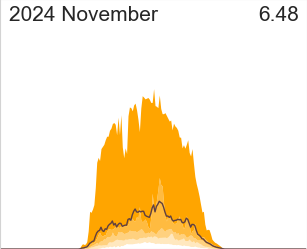
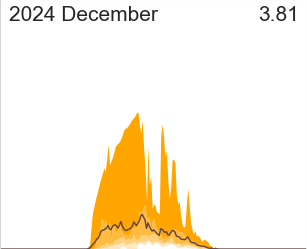
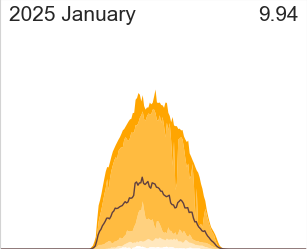
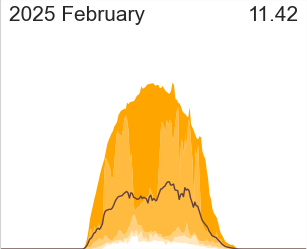
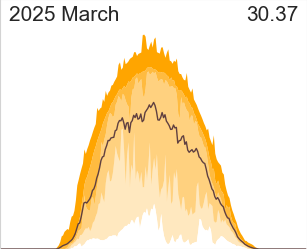
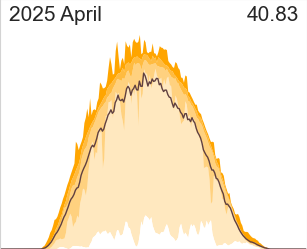
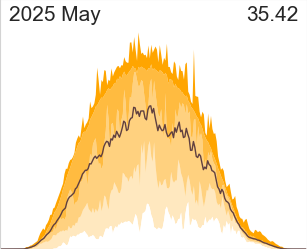
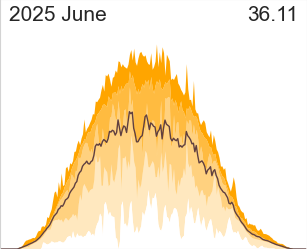
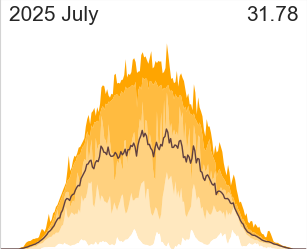
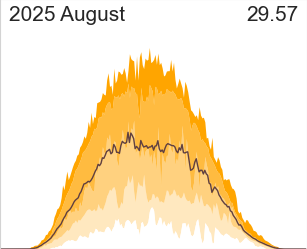
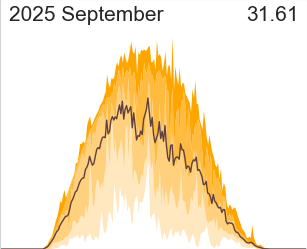
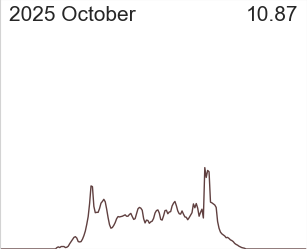
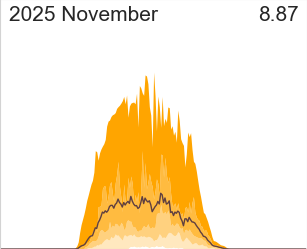
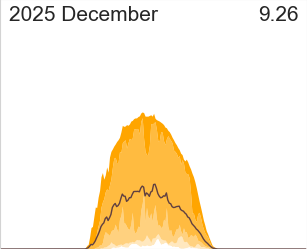
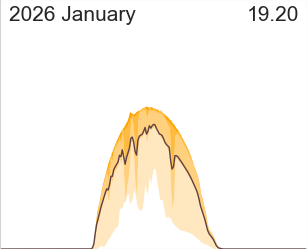





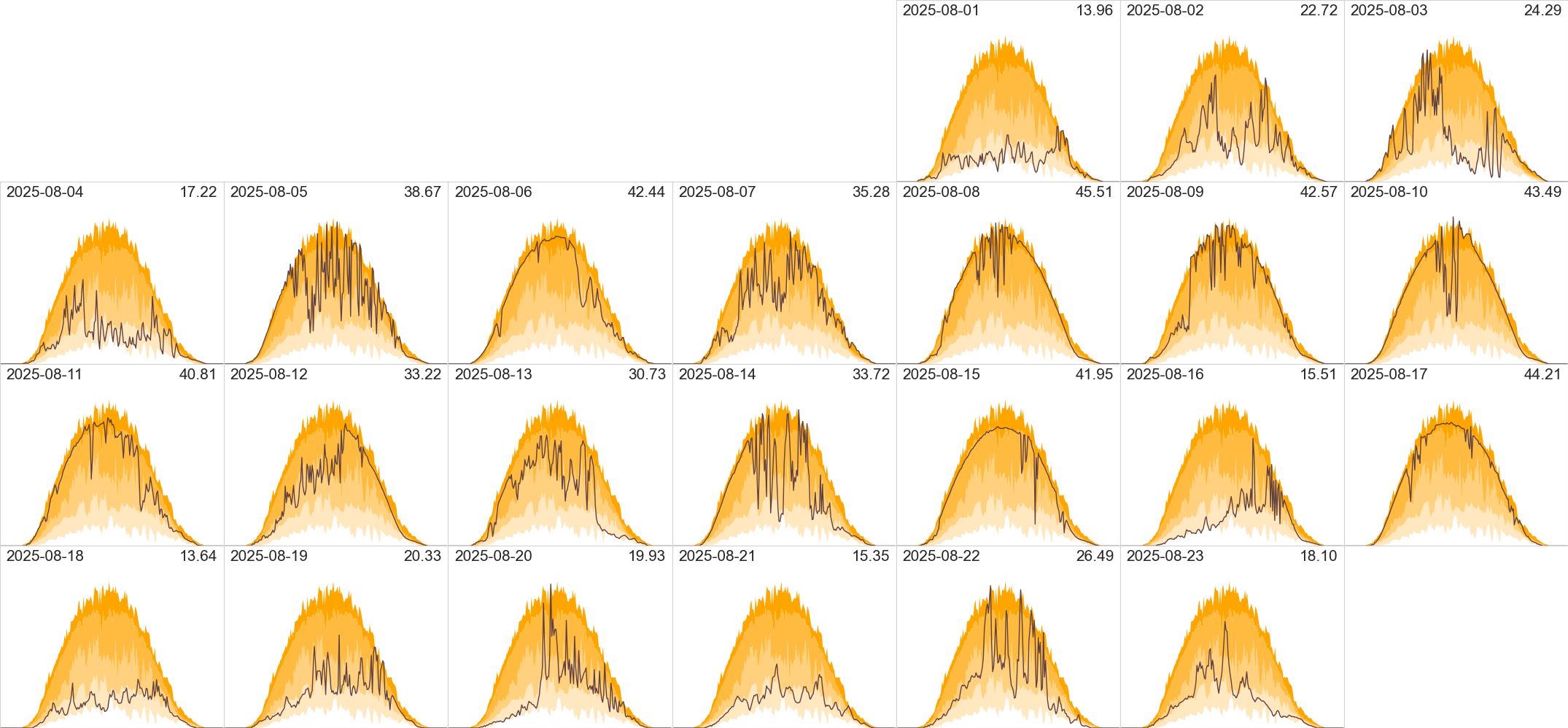
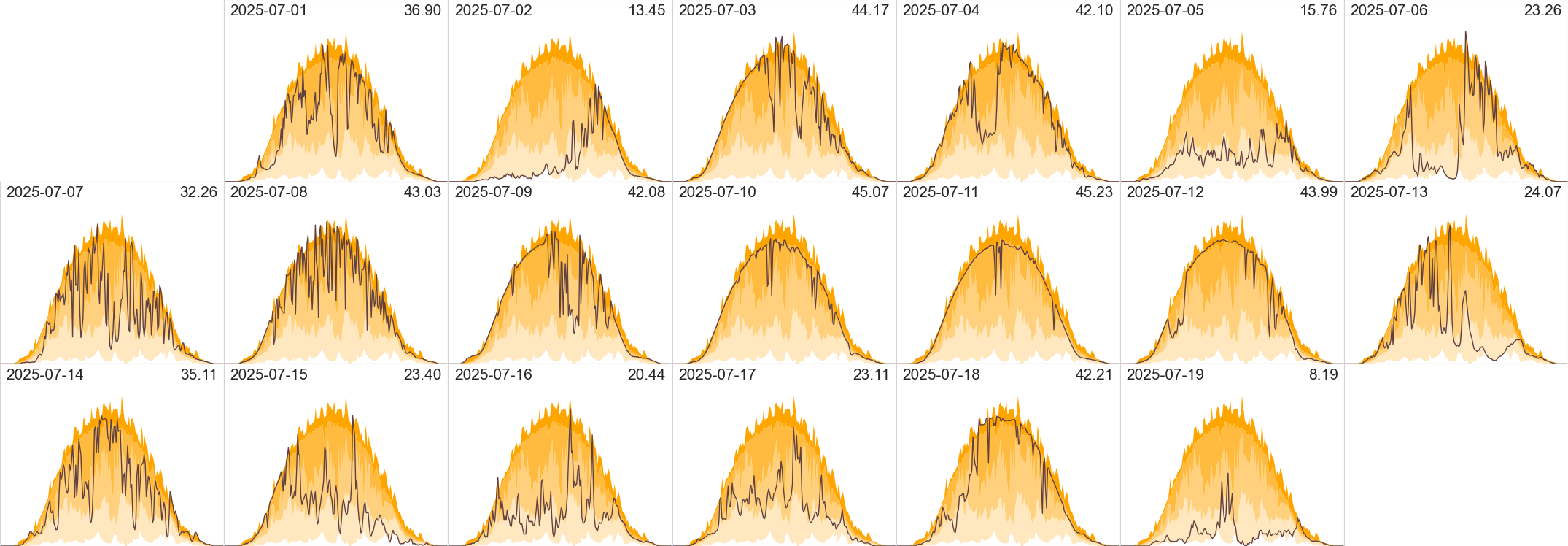
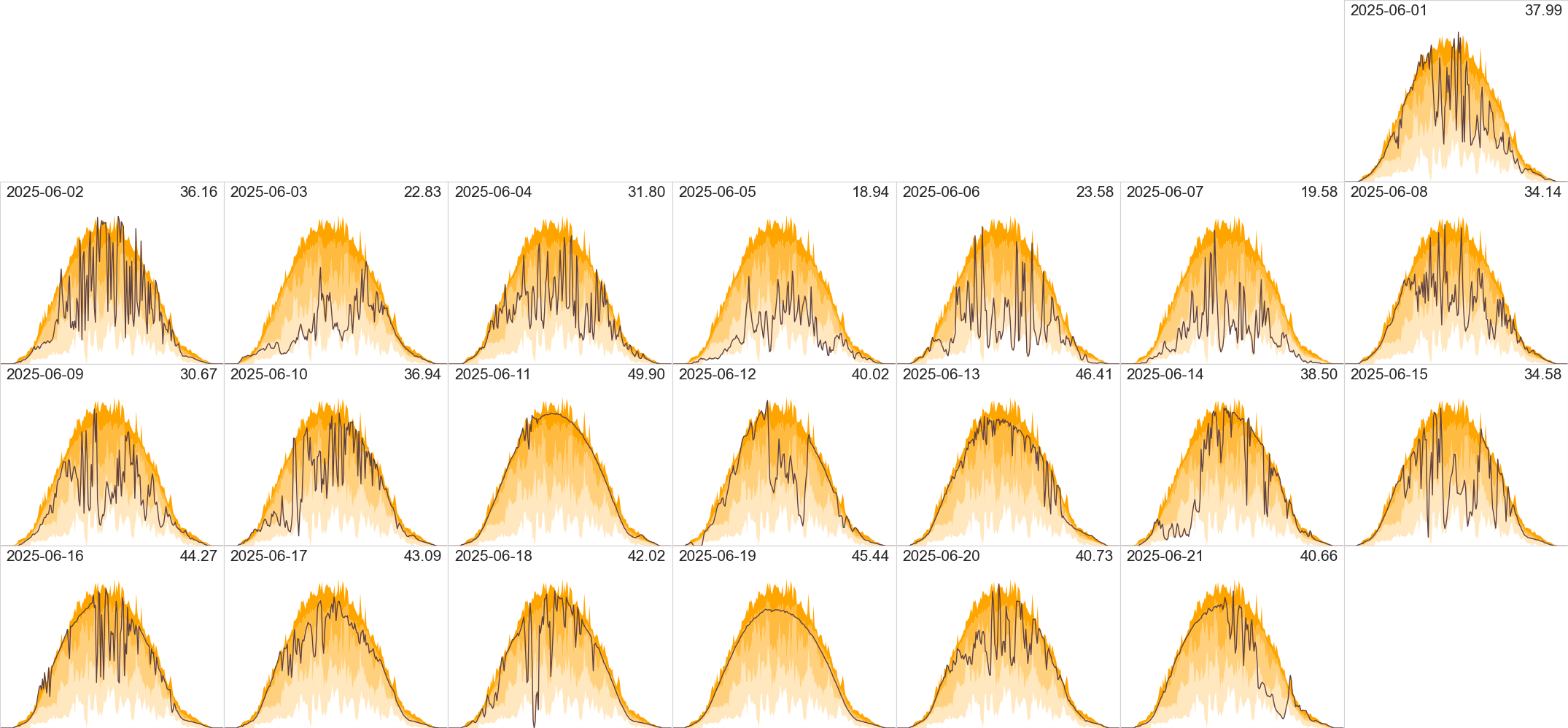
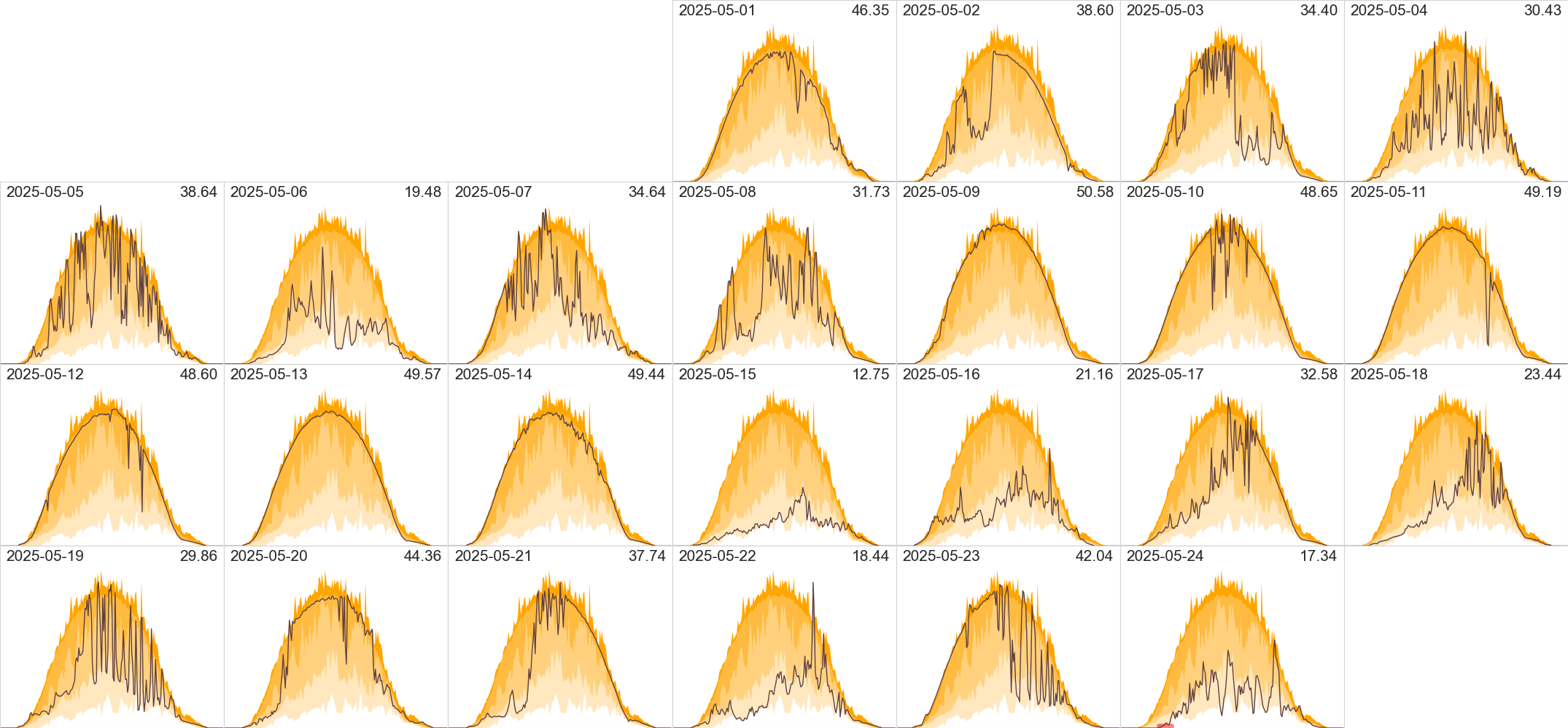
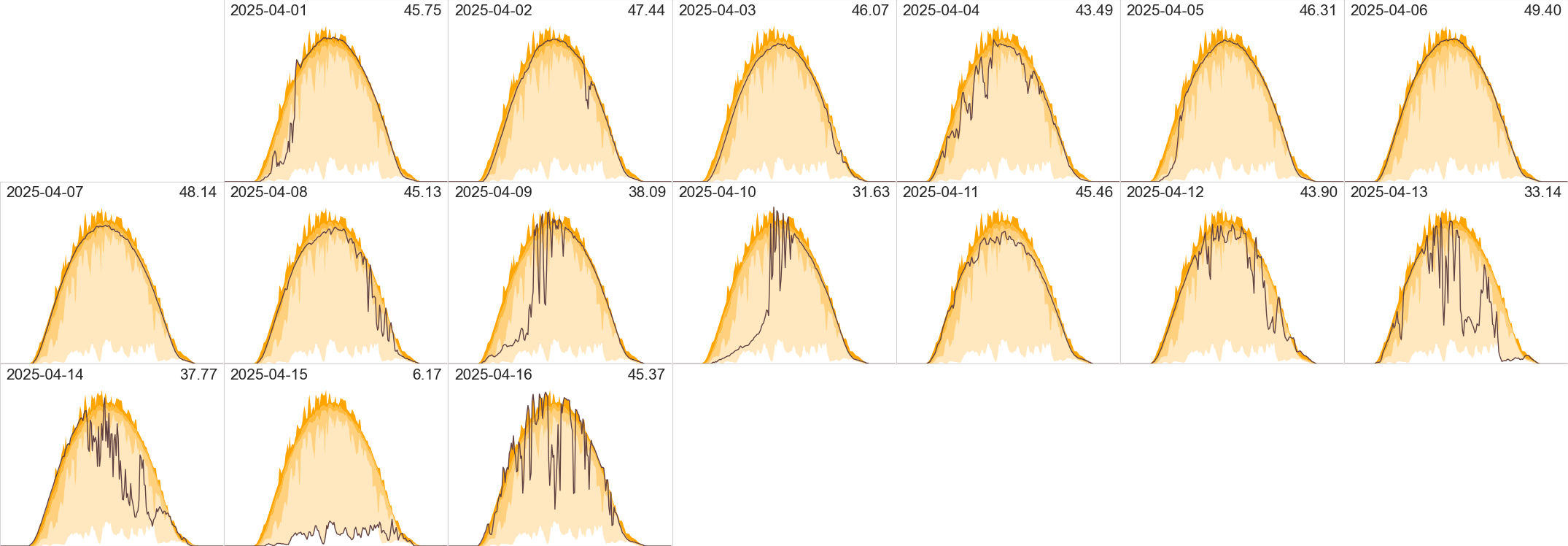
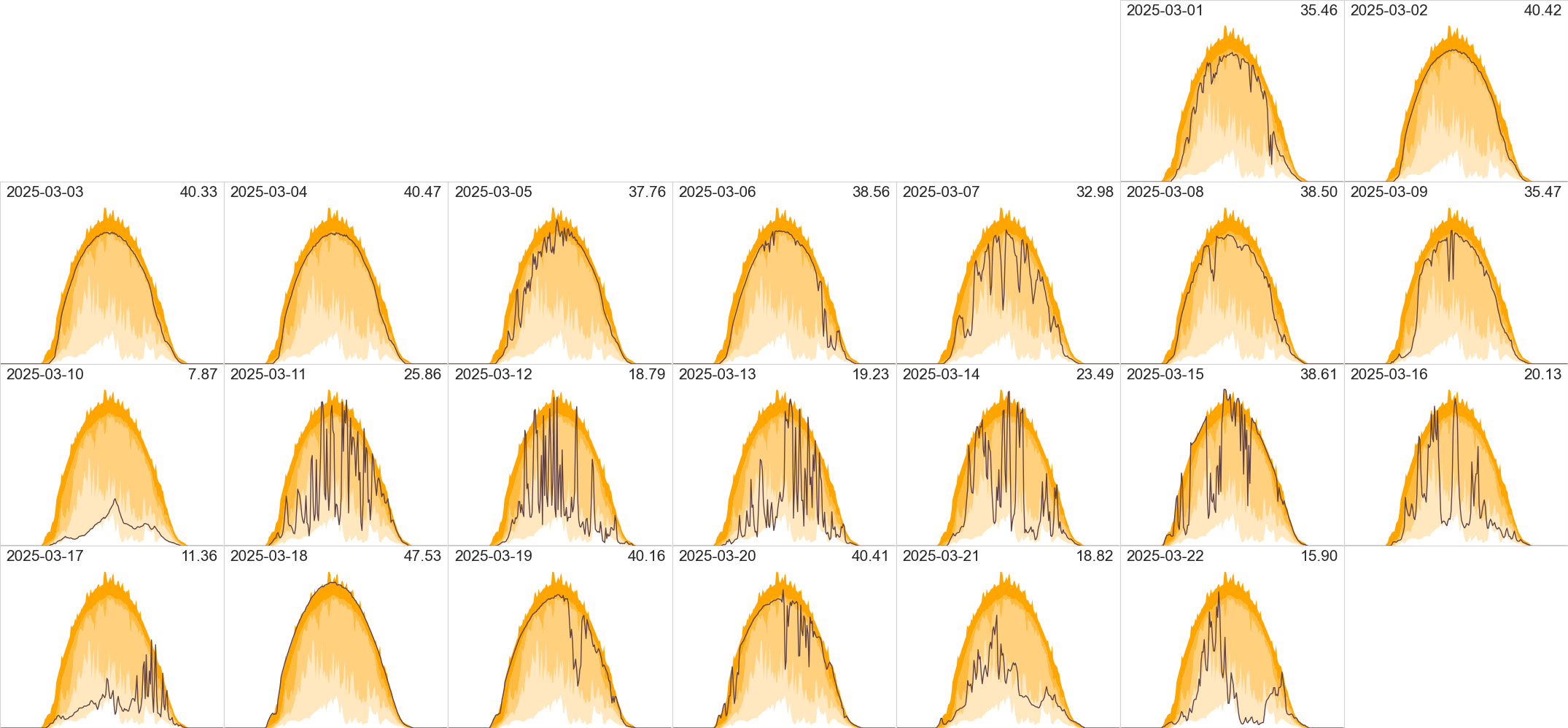

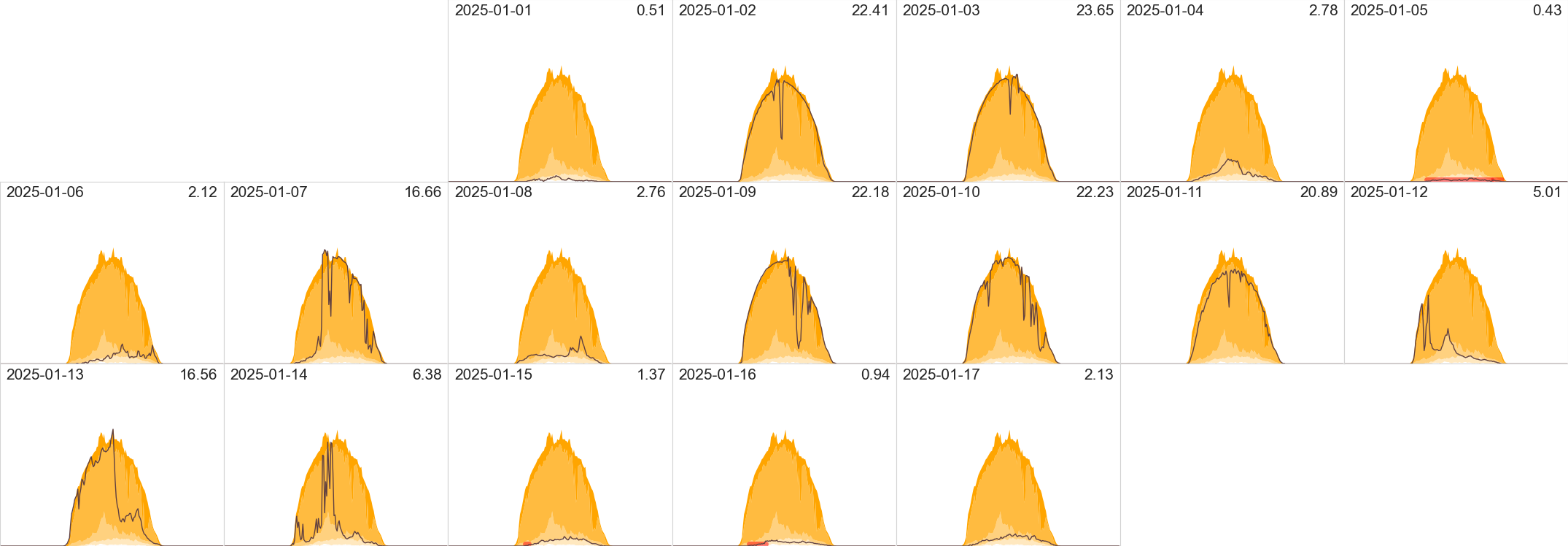
4 Dec the power was off for about an hour as an upgrade to the system was installed that allows us to keep using the battery/PV if there is a power cut. 28 Dec half of the panels stayed off all day (a day of cold, foggy weather: the panels that came on generated hardly anything!). 29 Dec started cold and misty, then got sunnier; half the panels waited until the sun warmed them up before coming on.
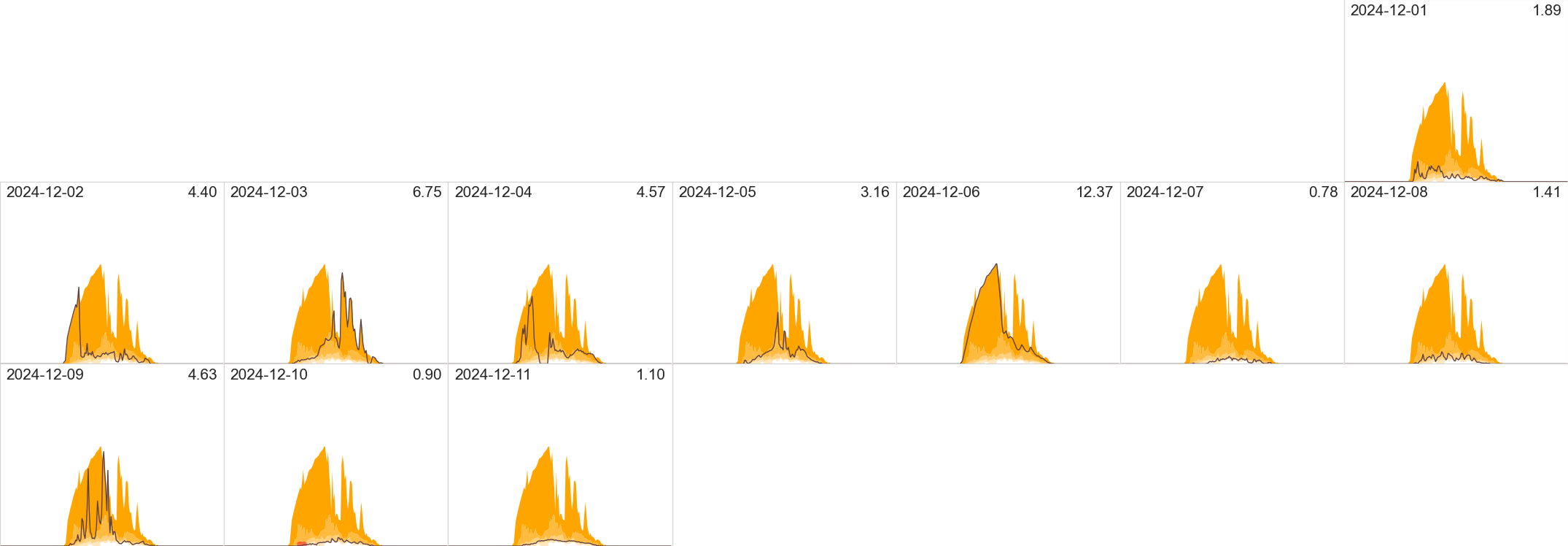
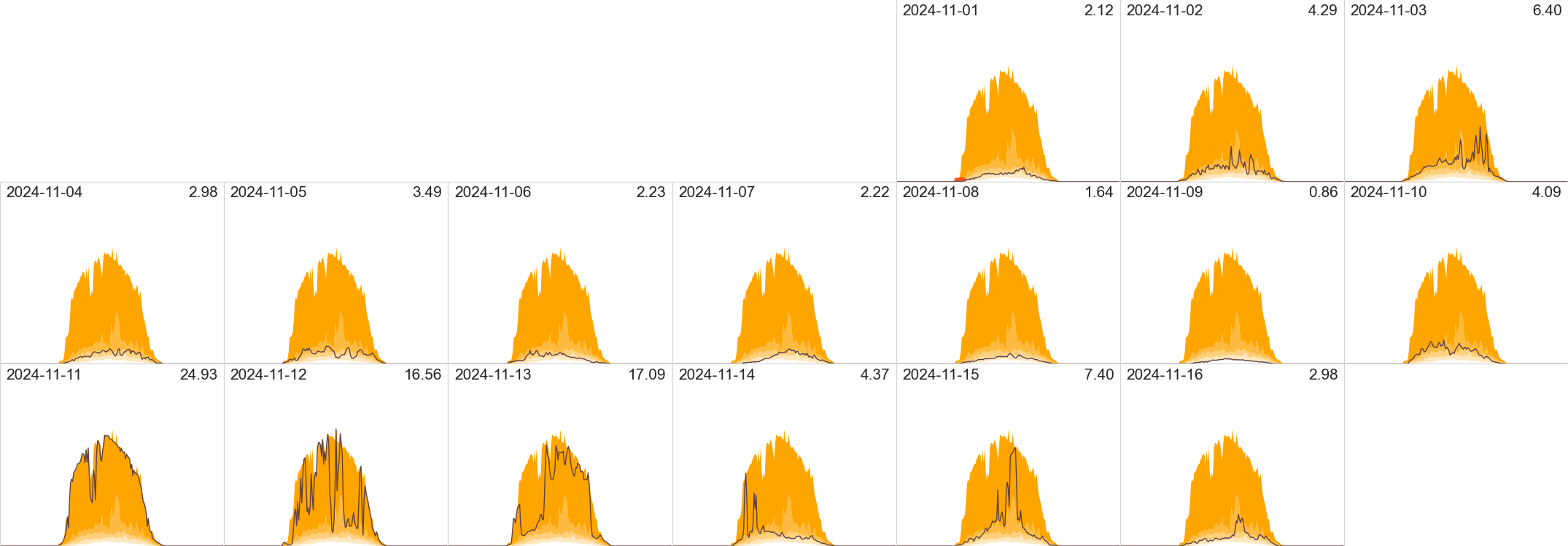
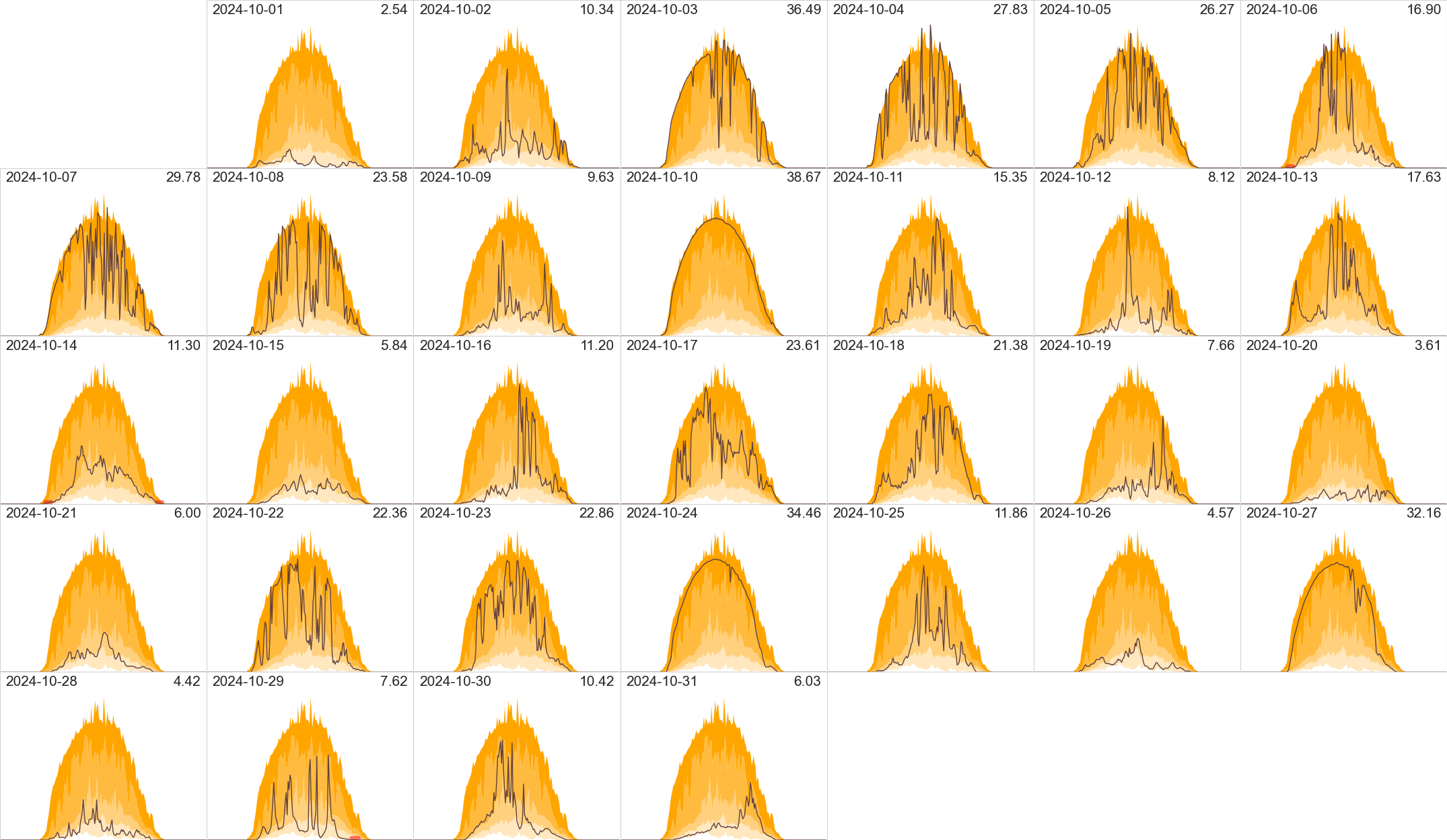
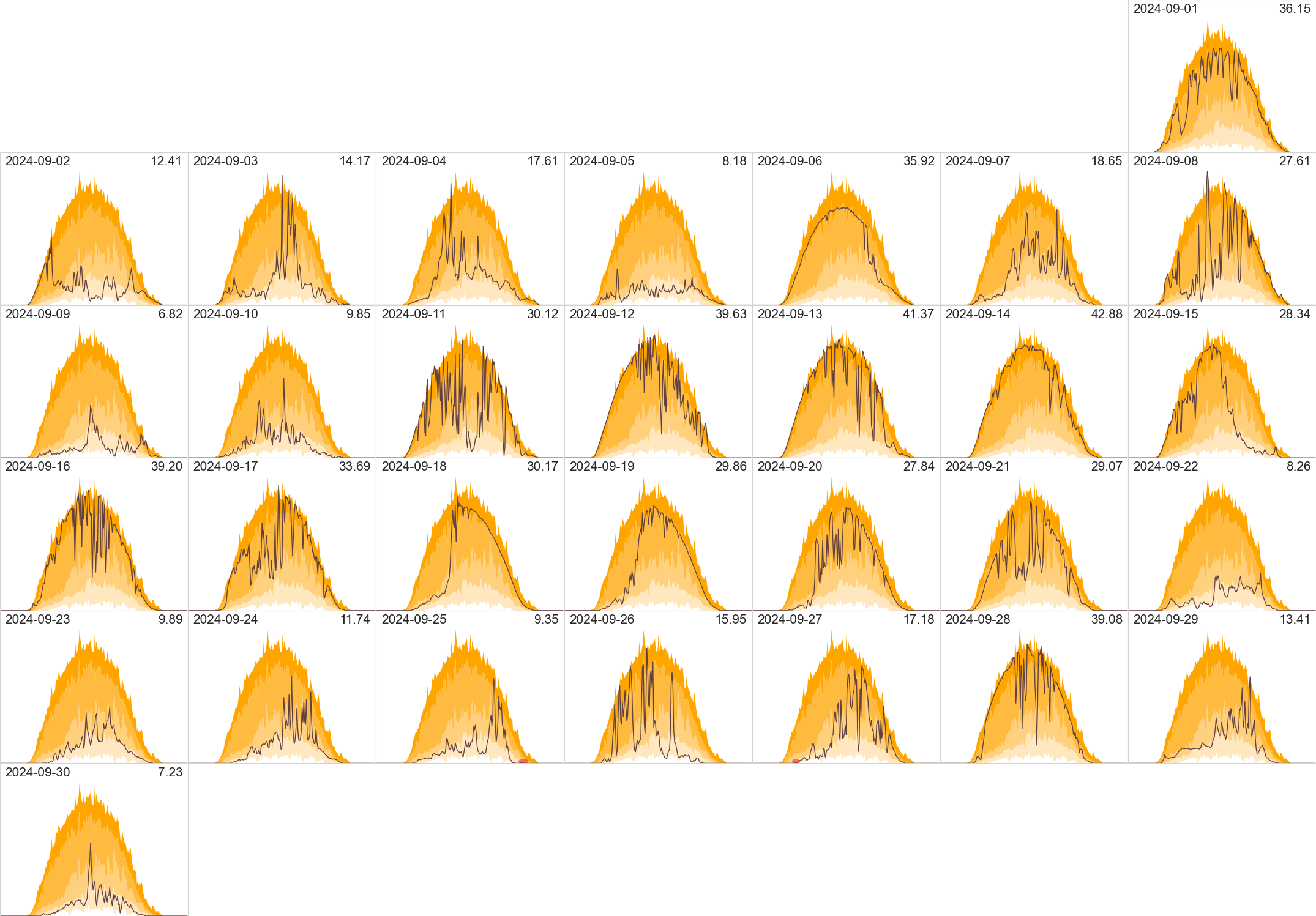
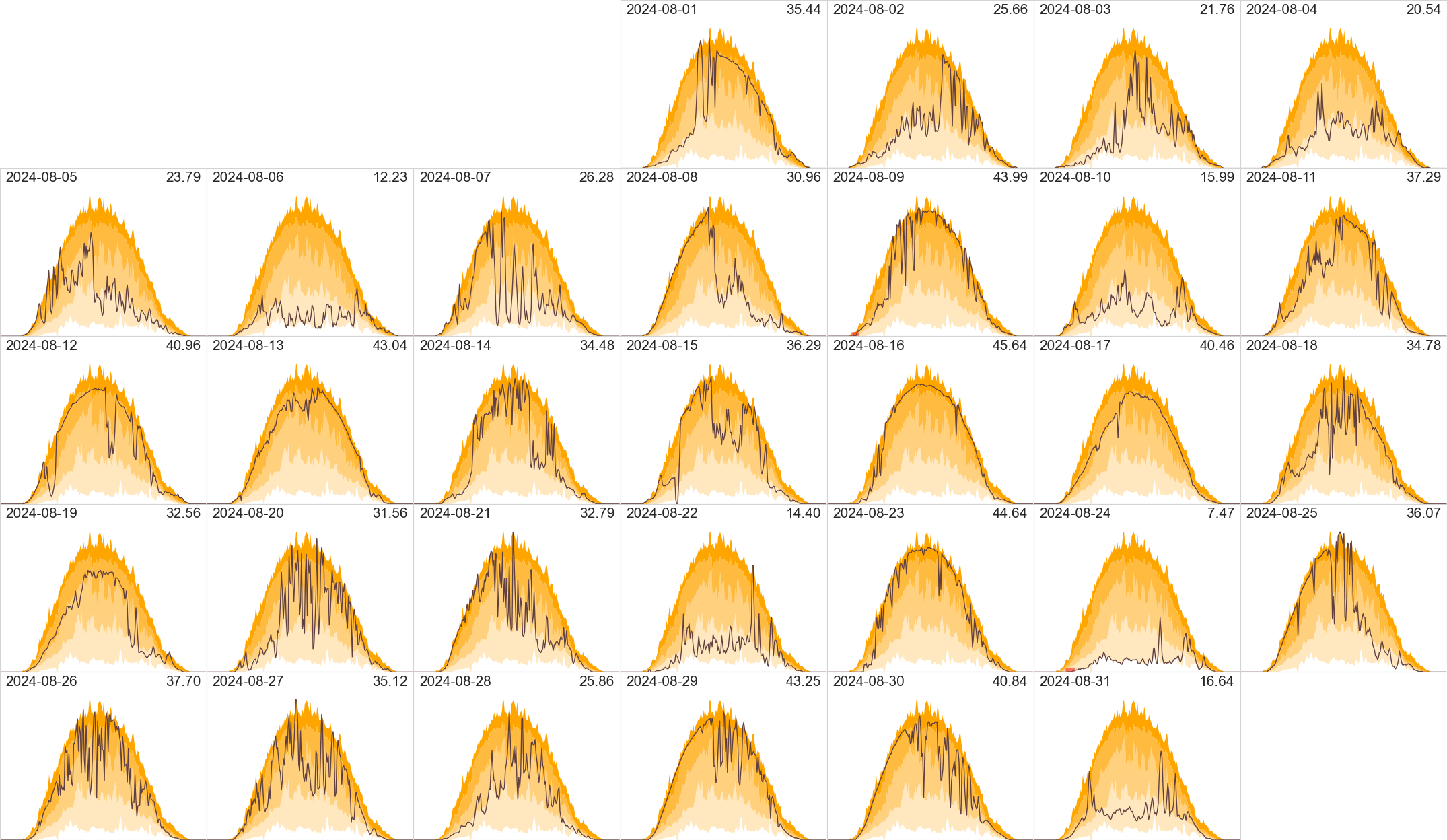
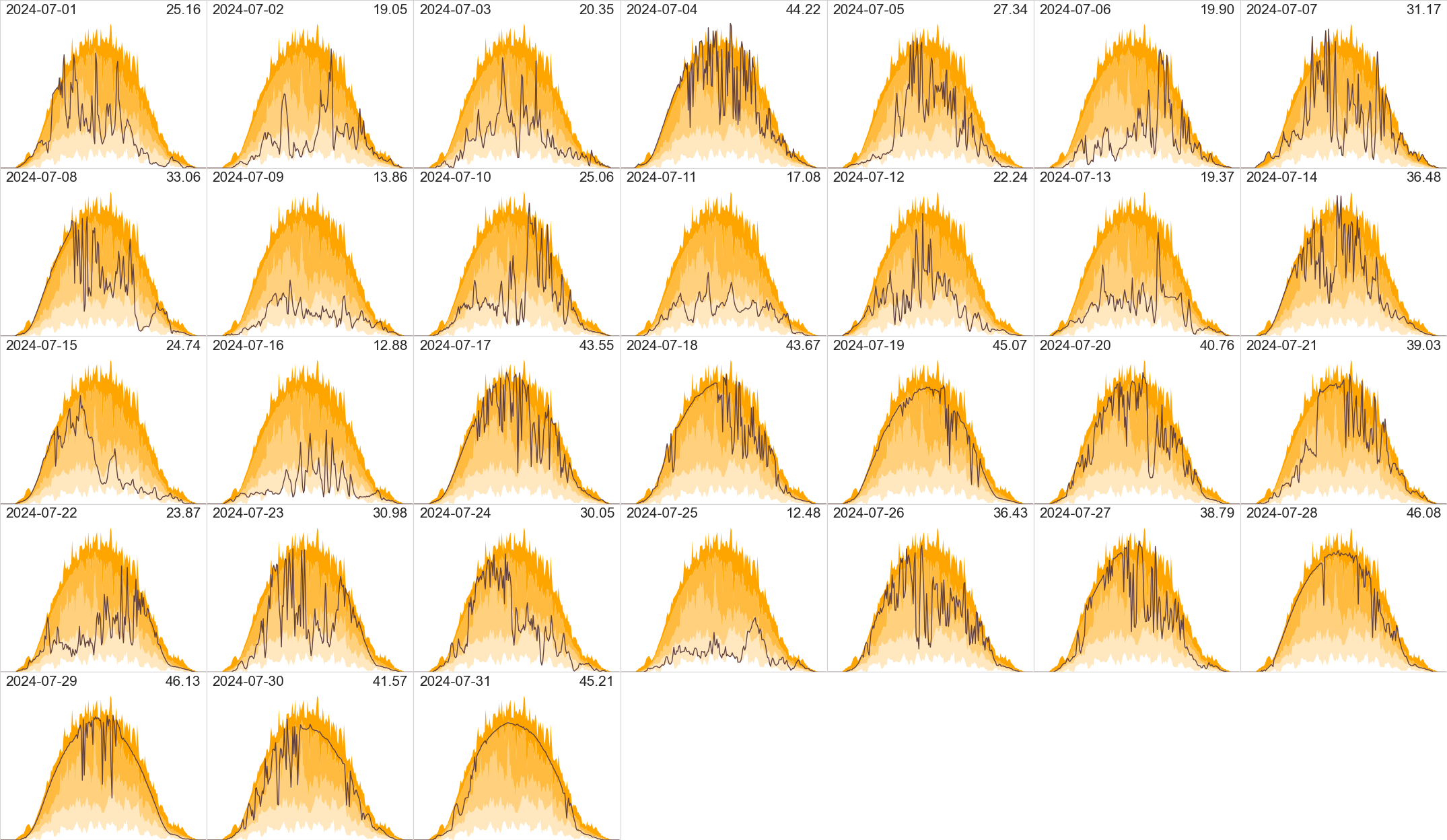

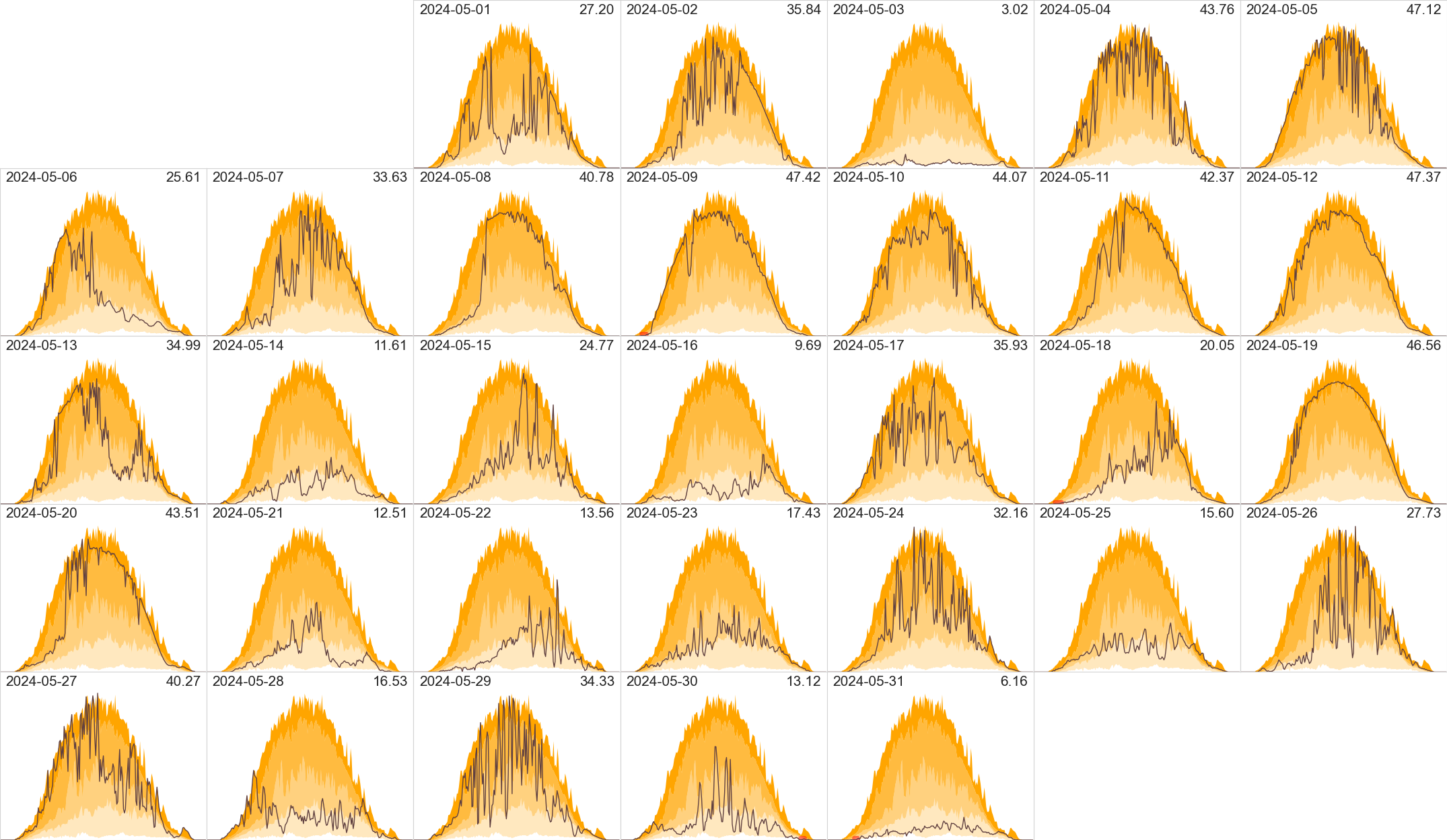
On the 5th the solar PV was switched off for about half an hour, while some wiring for the new secondary PV system was adjusted.
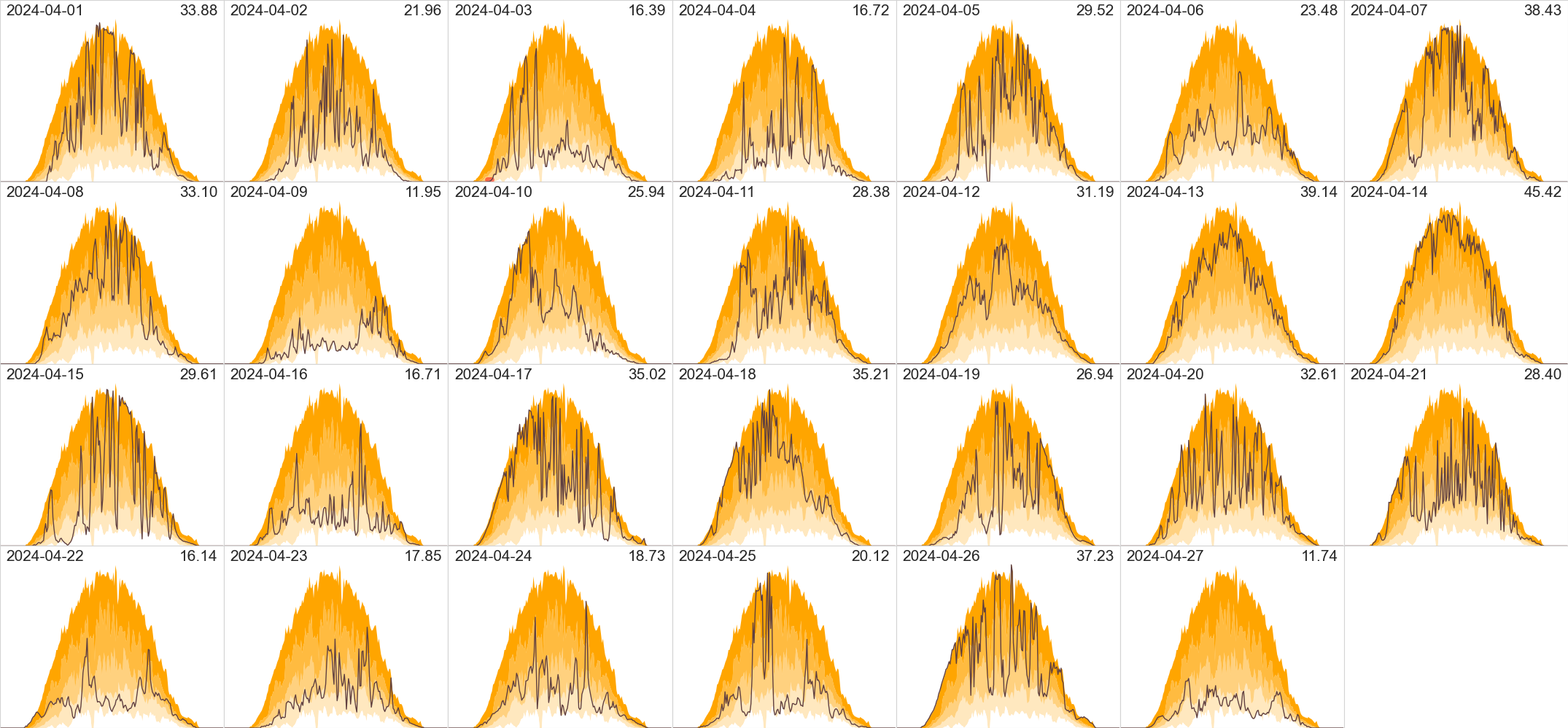
On the 18th the solar PV was switched off for about an hour, while the new secondary PV system was wired in. On the 22nd, all power was off for about half an hour while the new storage batteries and Zappi EV charger were wired in to the mains.
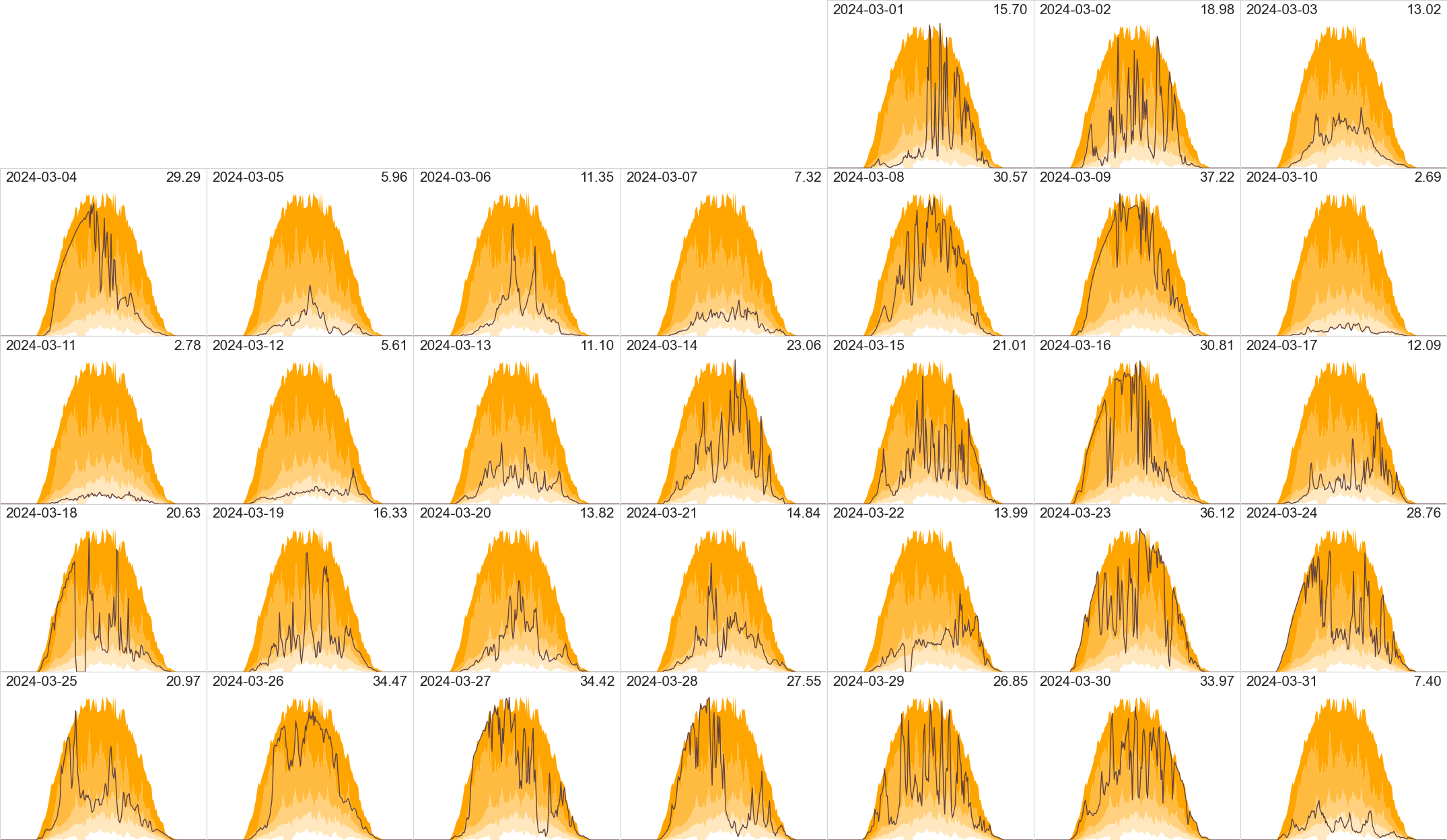
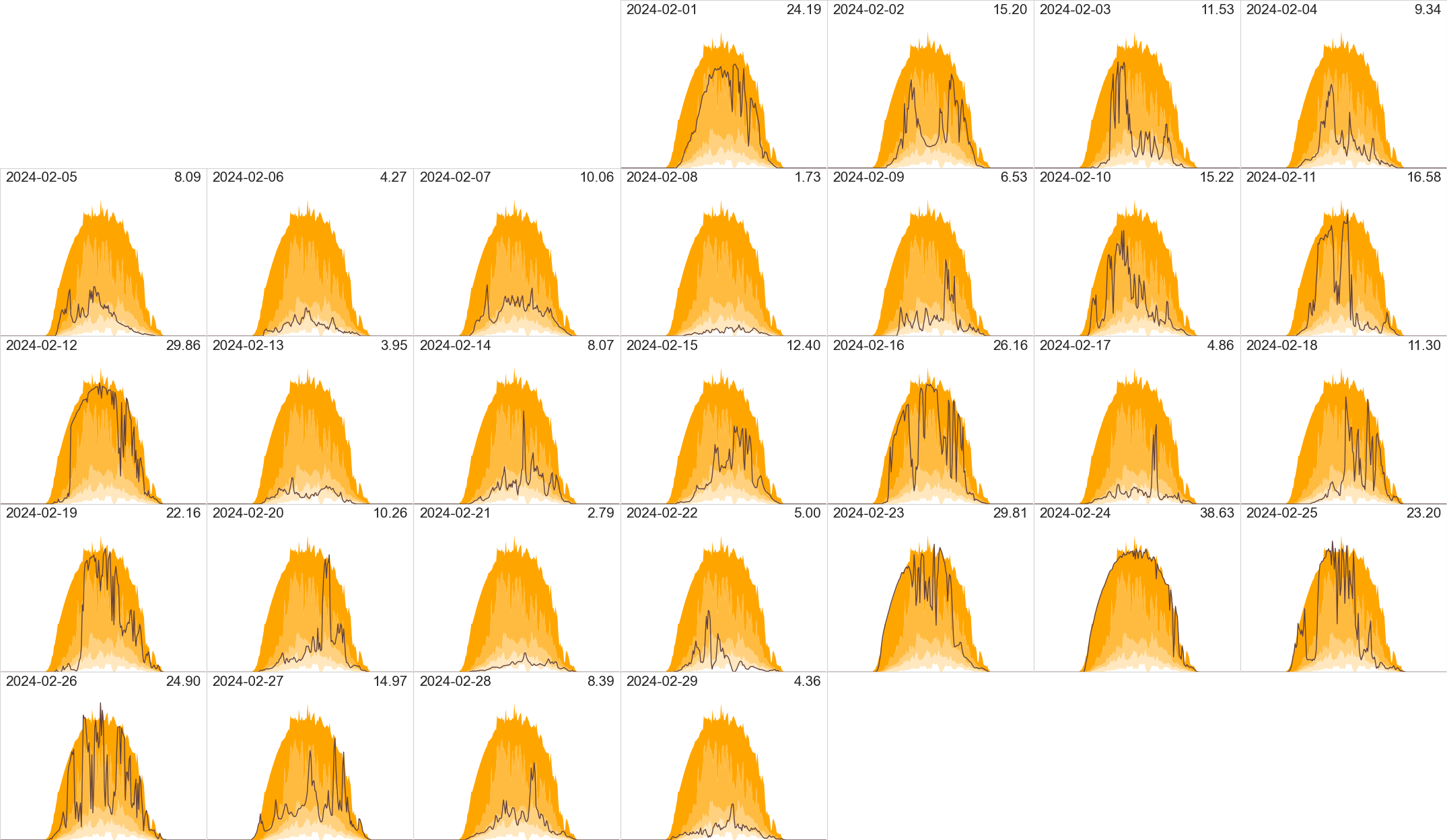
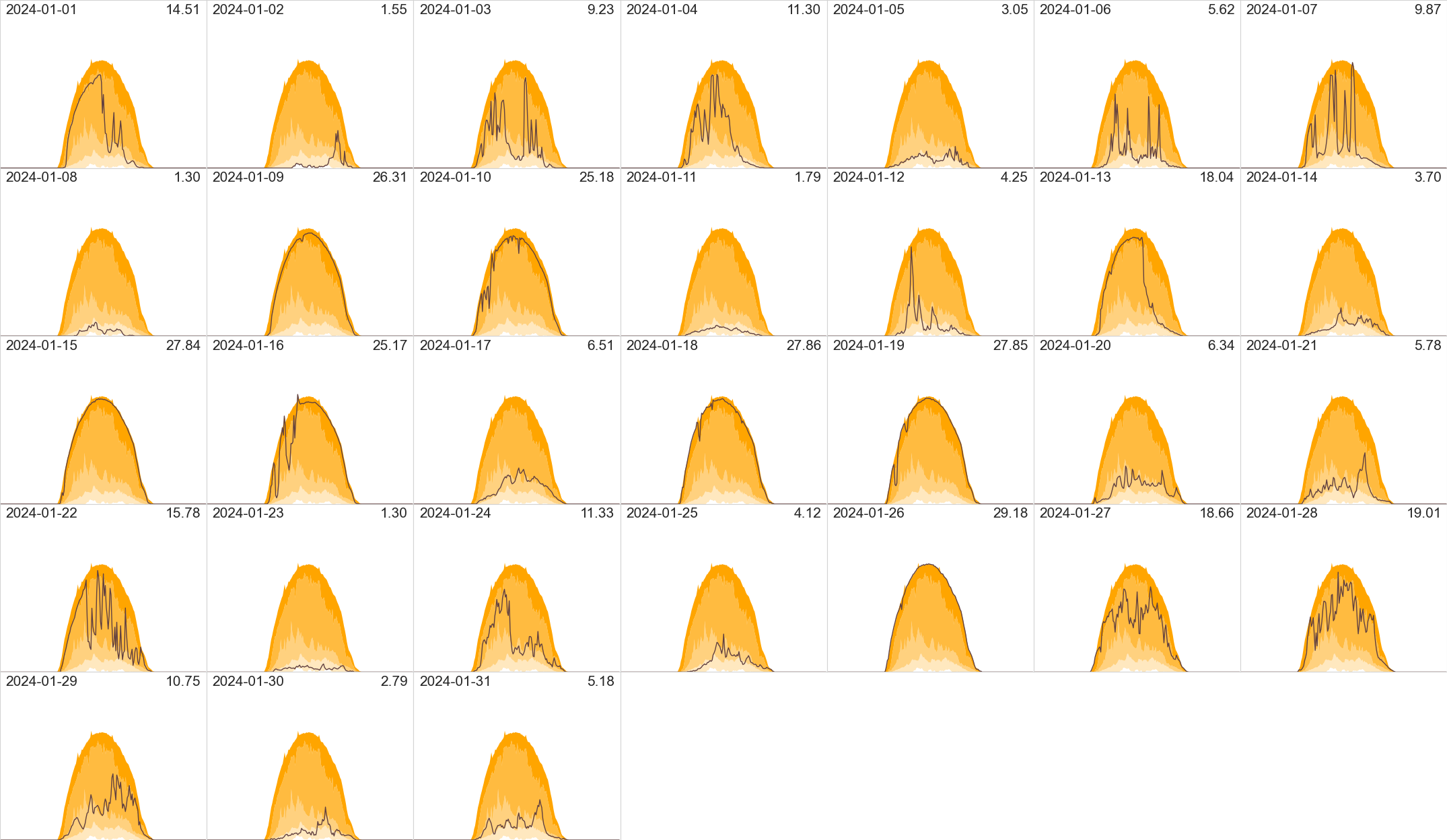
From April 2024, in addition to the 7.6kW PV panels on the house (facing south), we have a further 4kW of PV panels on the garage (facing west), a 20kWh battery, and a 7kW car charger. The data from all this is quite complex; the charts below show the following daily stats:
Input and output should balance: the total power above and below the axis should be mirrored. Any small differences are due to data being gathered from three different sources at three different temporal resolutions.
We are on an EV tariff, so grid electricity is cheaper between midnight and 7am than during the day. So the aim is to use the battery during the day: firstly charging it from excess PV, then charging overnight as necessary. Perfect usage would have no red above the axis between 7am and midnight, but occasionally the battery goes flat before midnight: the “AI” deciding how much to charge it isn’t that clever.





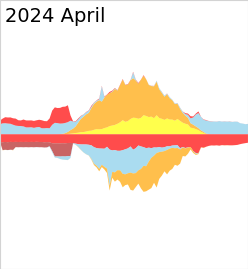
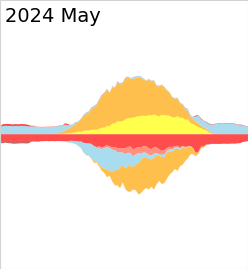
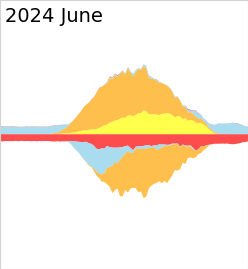

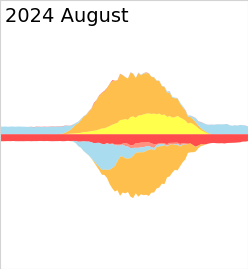
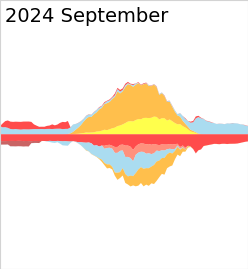
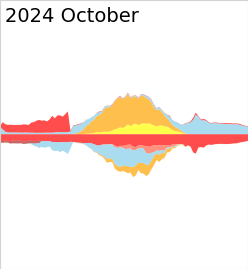
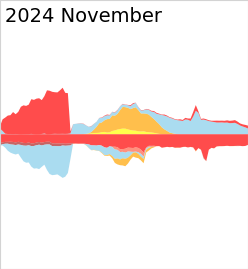
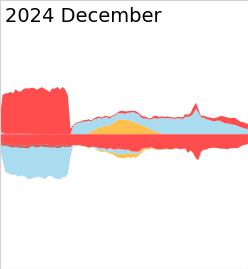
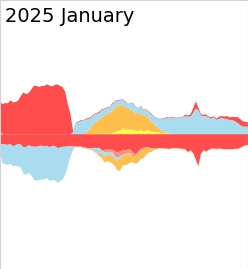
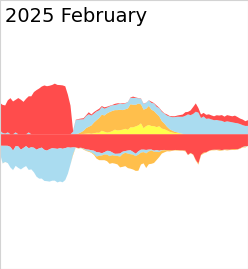
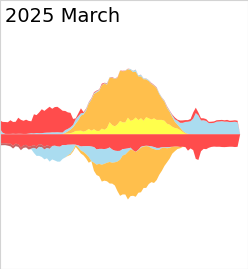
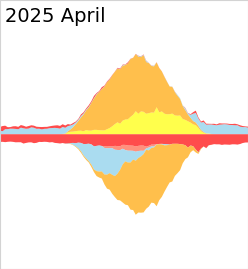
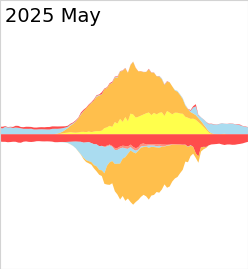
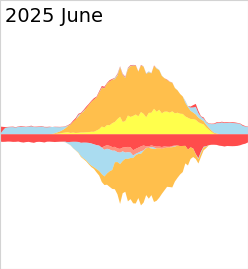
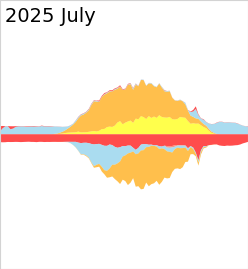
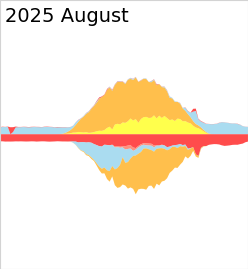
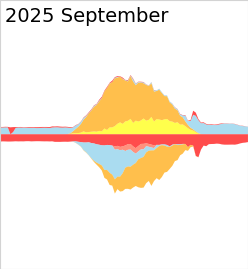
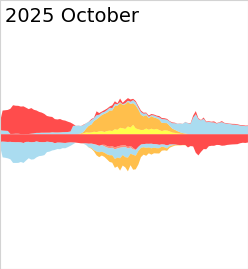
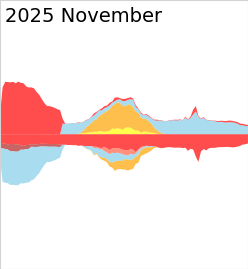
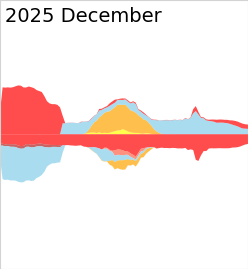
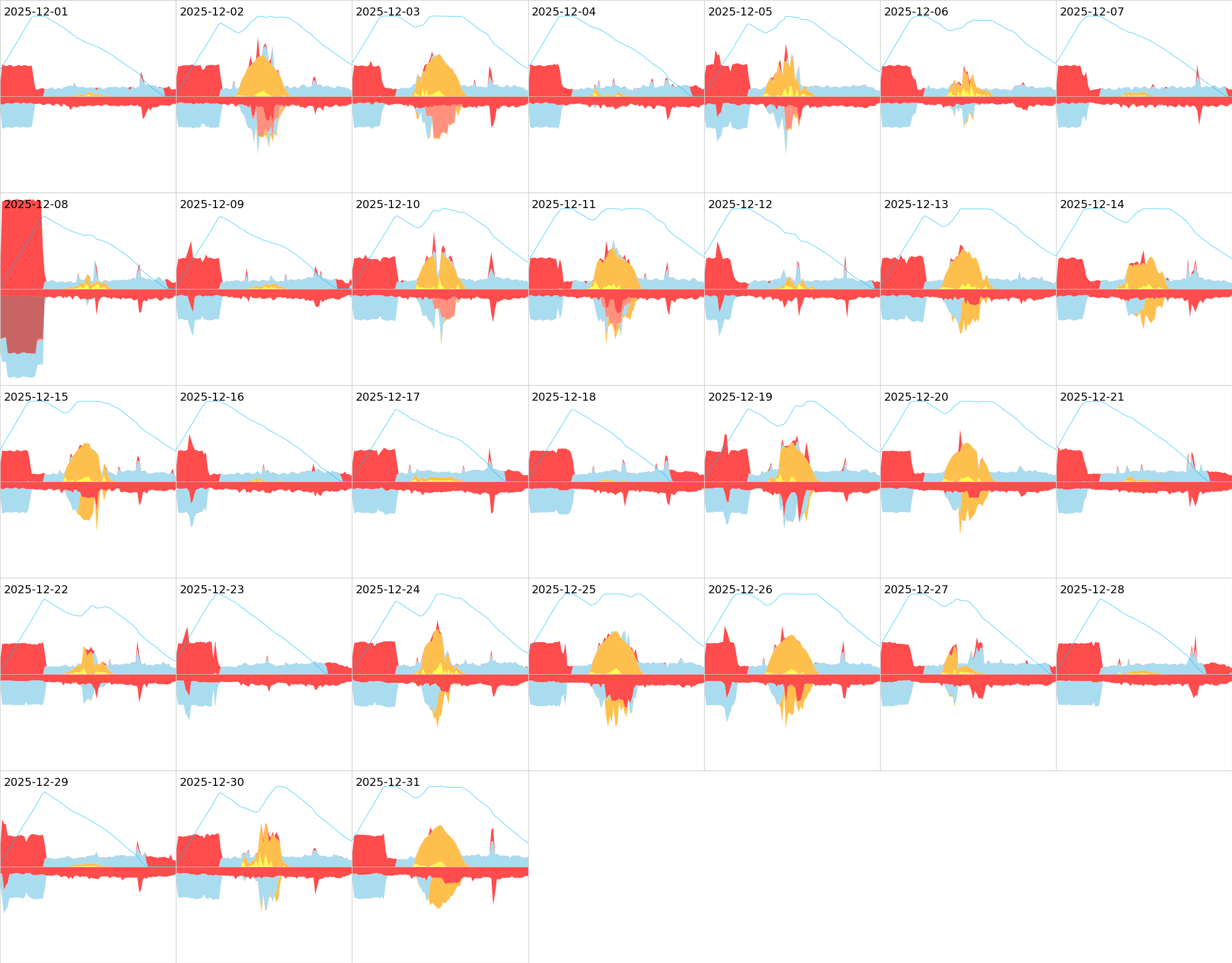
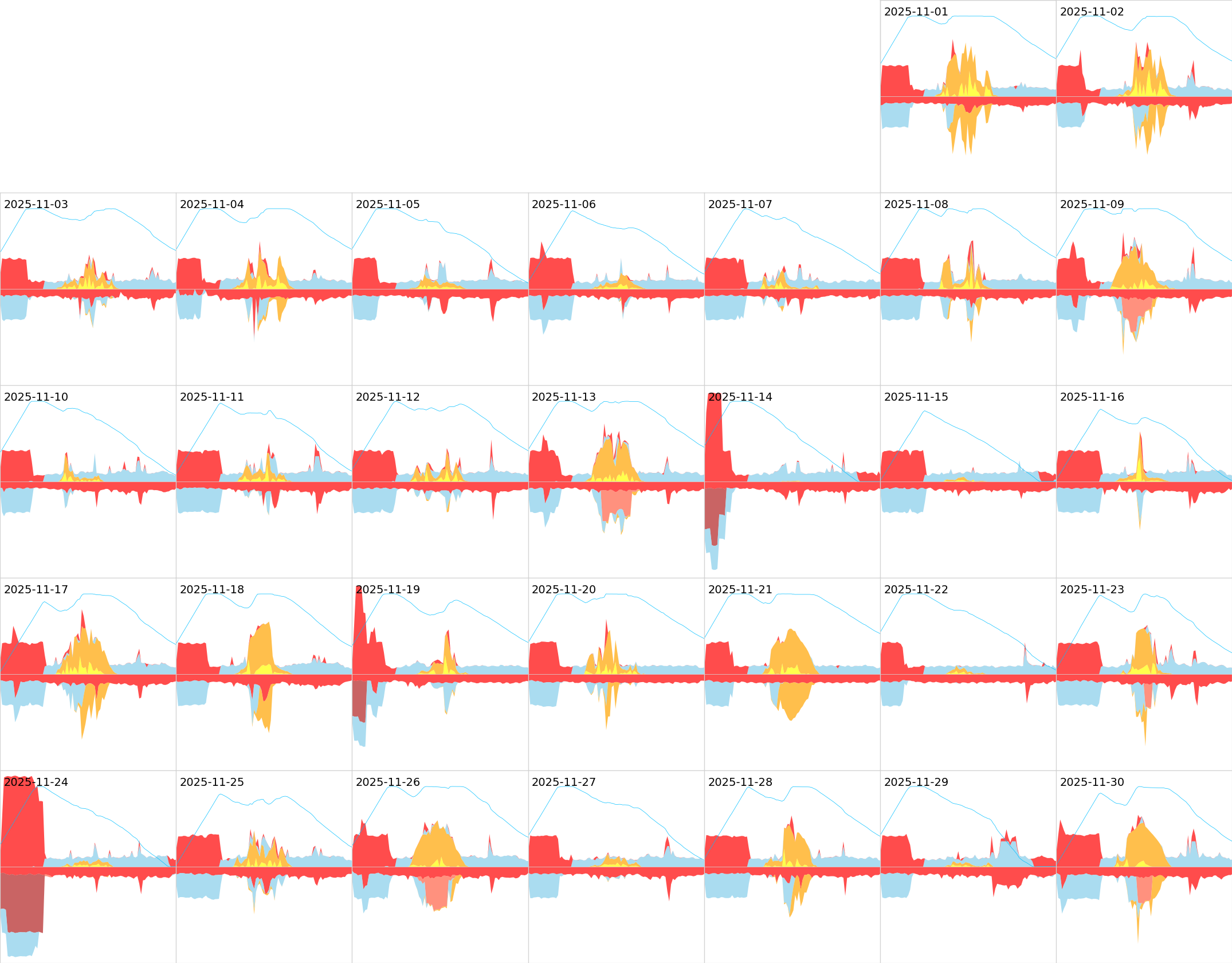
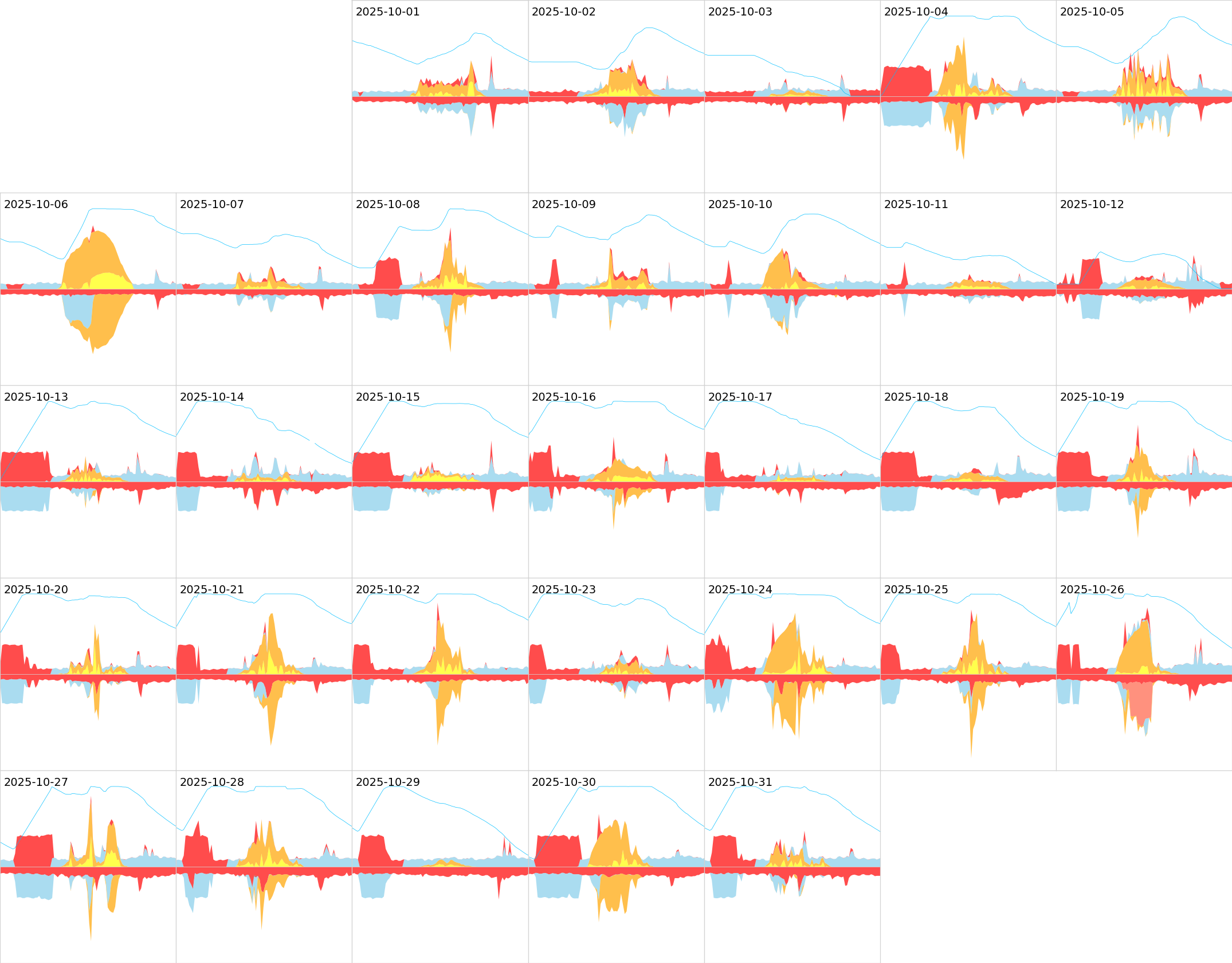
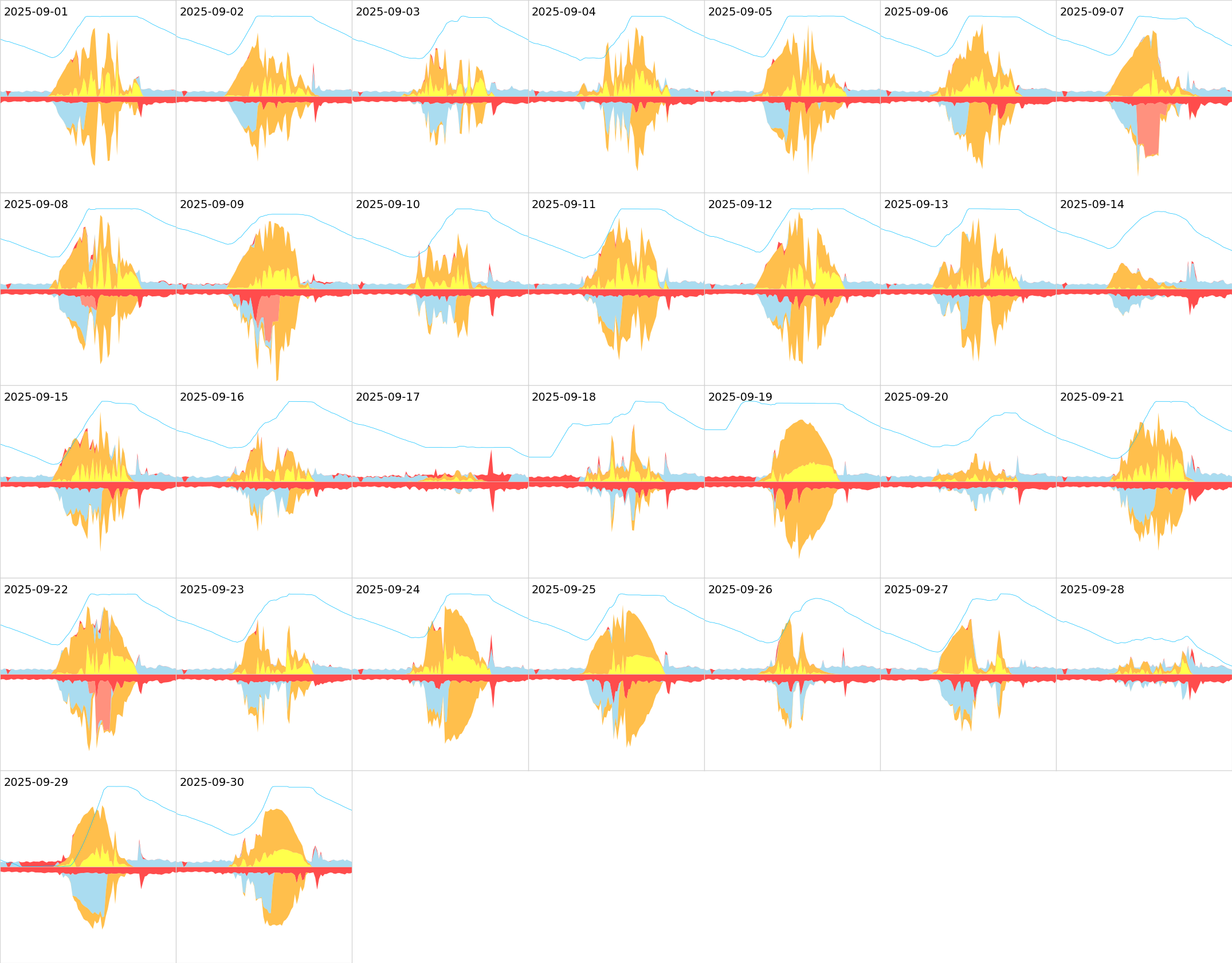
On 14 August the battery stopped discharging around midnight (when there might have been a power cut). We tried resetting the system, but it has not effect. It was remotely rebooted around noon, but only the house started working. We discovered that a fuse had tripped in the garage; when that was reset, all started working again.

On 18 July we had a very short power cut in the morning, at which point the battery stopped charging. It started discharging normally in the evening. On 28 July the power was off for about half an hour in the morning, as the PV engineers added two new magic boxes to the system to cure the problems with the battery not coming on during power cuts.
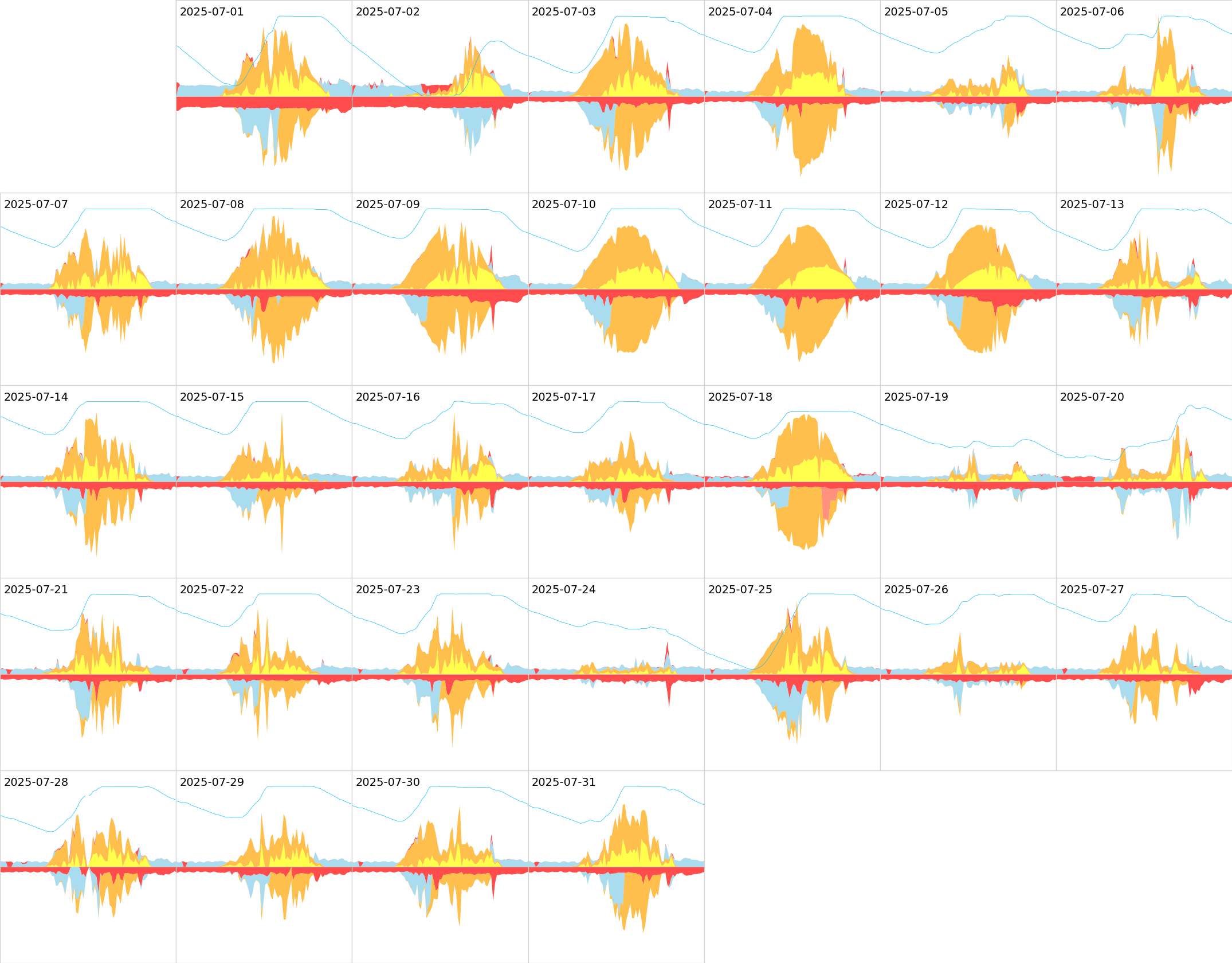
On 4 June, in the late evening, the reported battery level was very erratic; the battery eventually stopped discharging, or recharging, at all on 5 June. Then at about 11pm on the 5th, it started working normally again. On 12 June, we had a ~30min power cut at about 5am, but the battery did not come on as backup as it should; the reported battery level was then very erratic for the rest of the day. On 15 June we had a very short power cut around 10:30 am, at which point the battery stopped charging. It started discharging normally in the evening. On 18 June the power was off for about half an hour in the morning, as the PV engineers attempted to diagnose the problems with the battery. On 30 June, the pump on our rainwater recycling tank failed "on" in the evening (it didn’t auto-stop because there was a leak in the pipe), hence high usage, not spotted until the evening of 2 July.
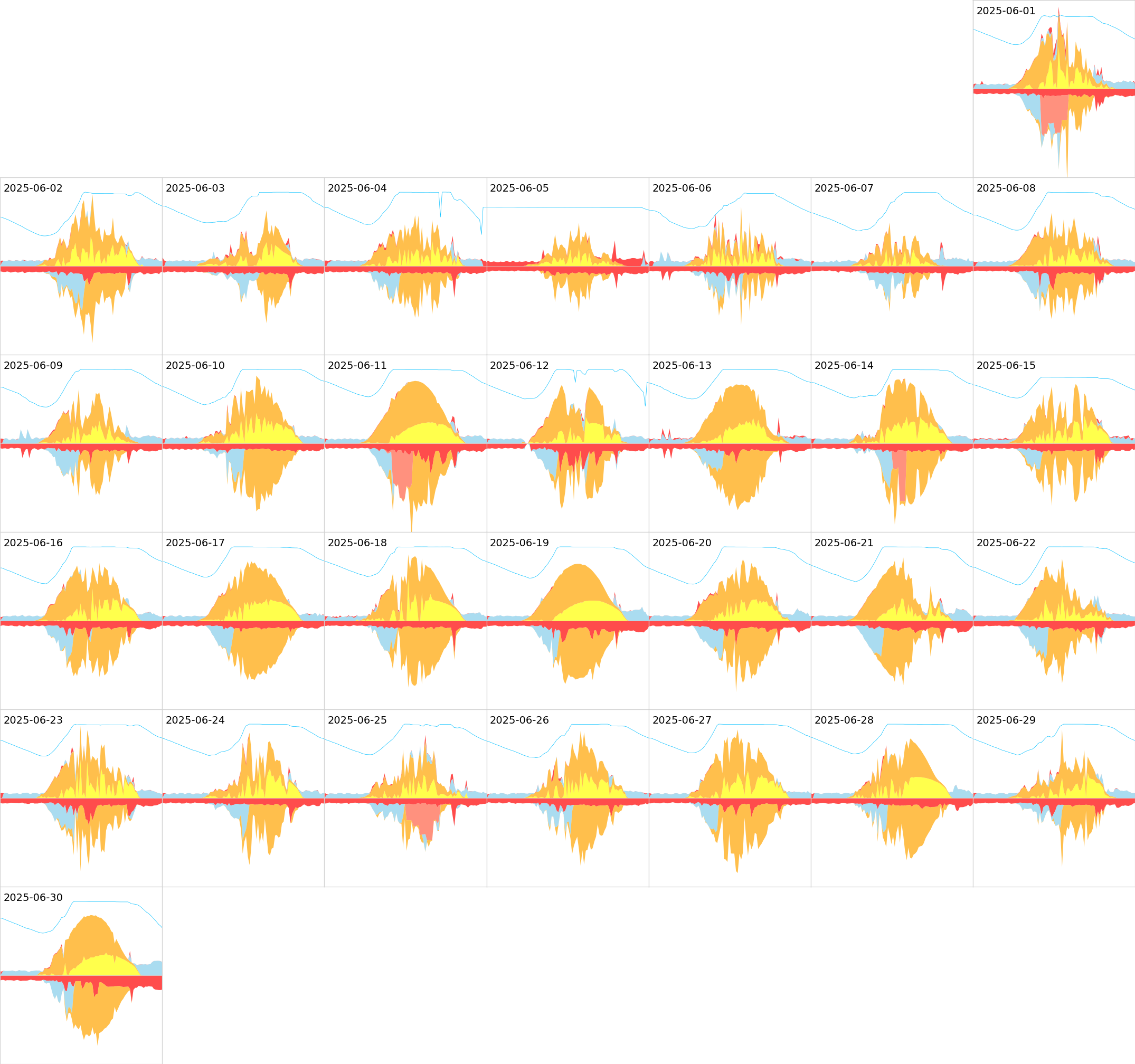
On 26 May the battery started charging around sunrise as expected. But it stopped charging ~8am, despite copious PV production. We switched the charging mode from "green" to "manual" at 9:40am; the battery immediately started charging. We've left it on manual since, which means we use the battery more overnight during the "cheap" rate tariff.
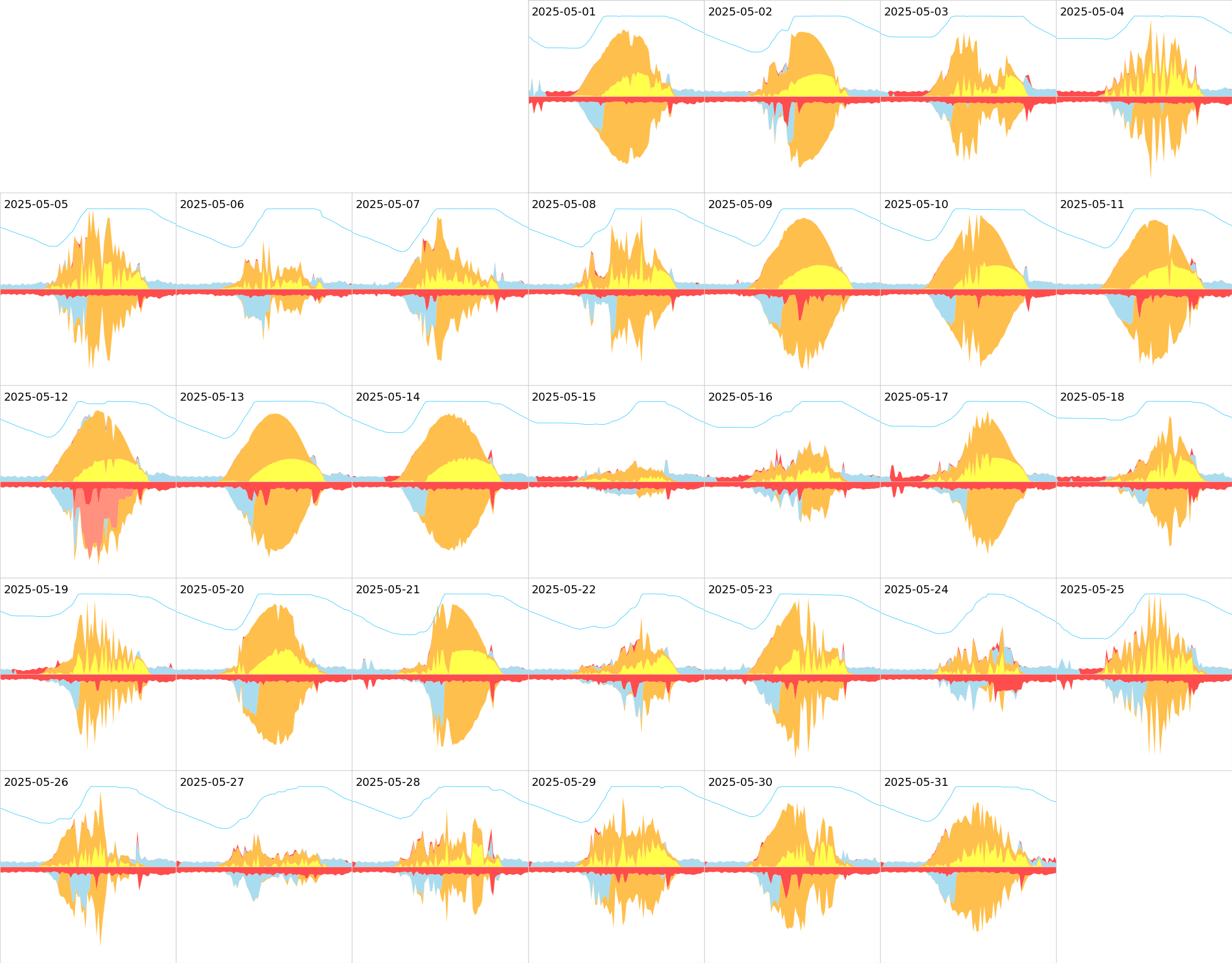
The battery charging wobblies seem to have gone away, but on the 5th and the 27th the system did not report the charge on the battery, and so the (blue) charge line is missing. However, the solid blue areas shows that the battery was being charged/discharged appropriately.
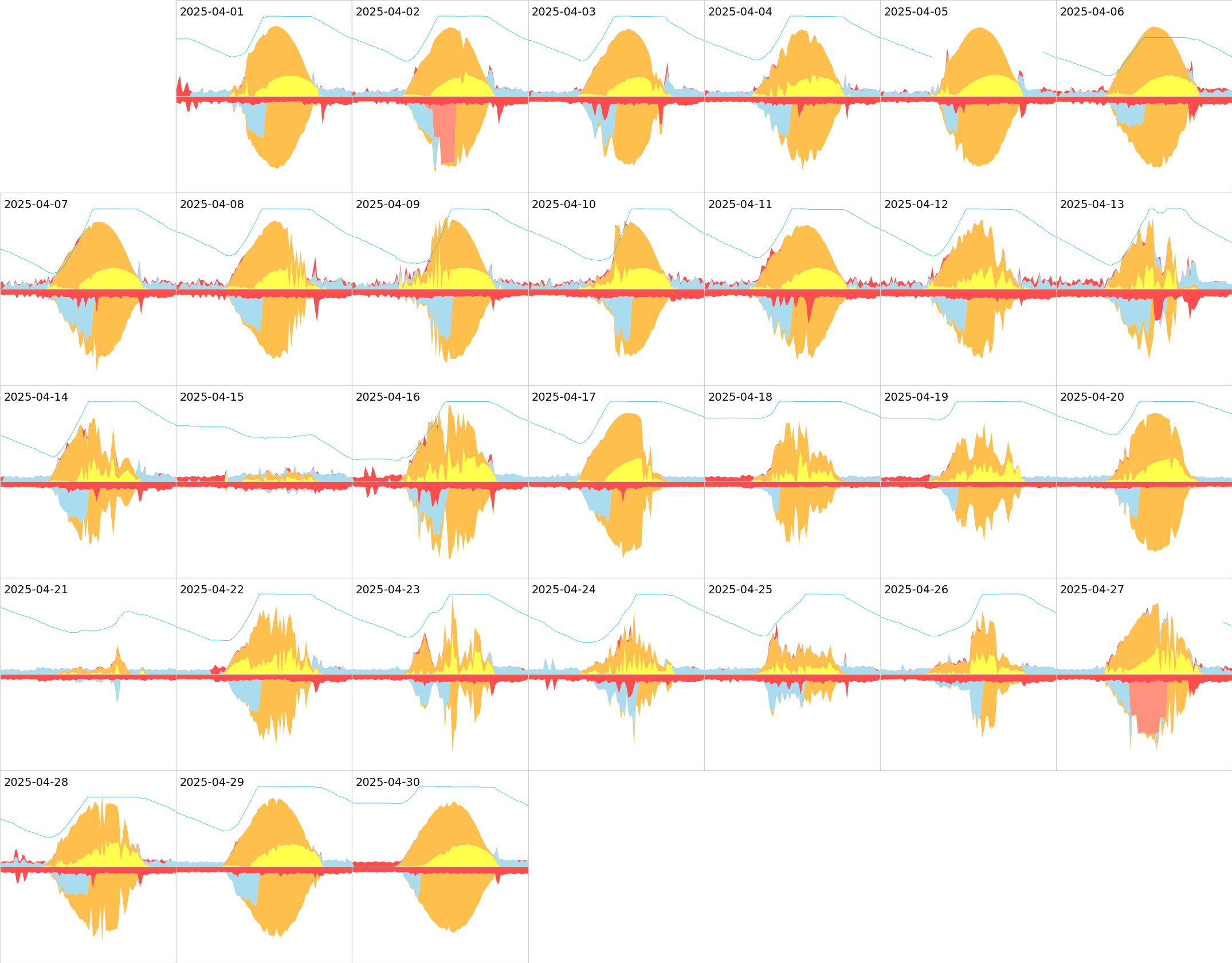
There were some wobblies with the battery charging. On the 9th, it stopped discharging at midnight, and didn't charge during the day; the garage PV also stopped generating. (Additionally, the import and export data are missing from the logs, hence the weird graph for that day.) On the 28th, it never started discharging once the PV generation dropped, and stayed at 100% until the 31st, when it started working again; again the garage PV also stopped generating. We have been told this was due to a “software problem”. The software has been upgraded, so the problem should not reappear. We shall see.
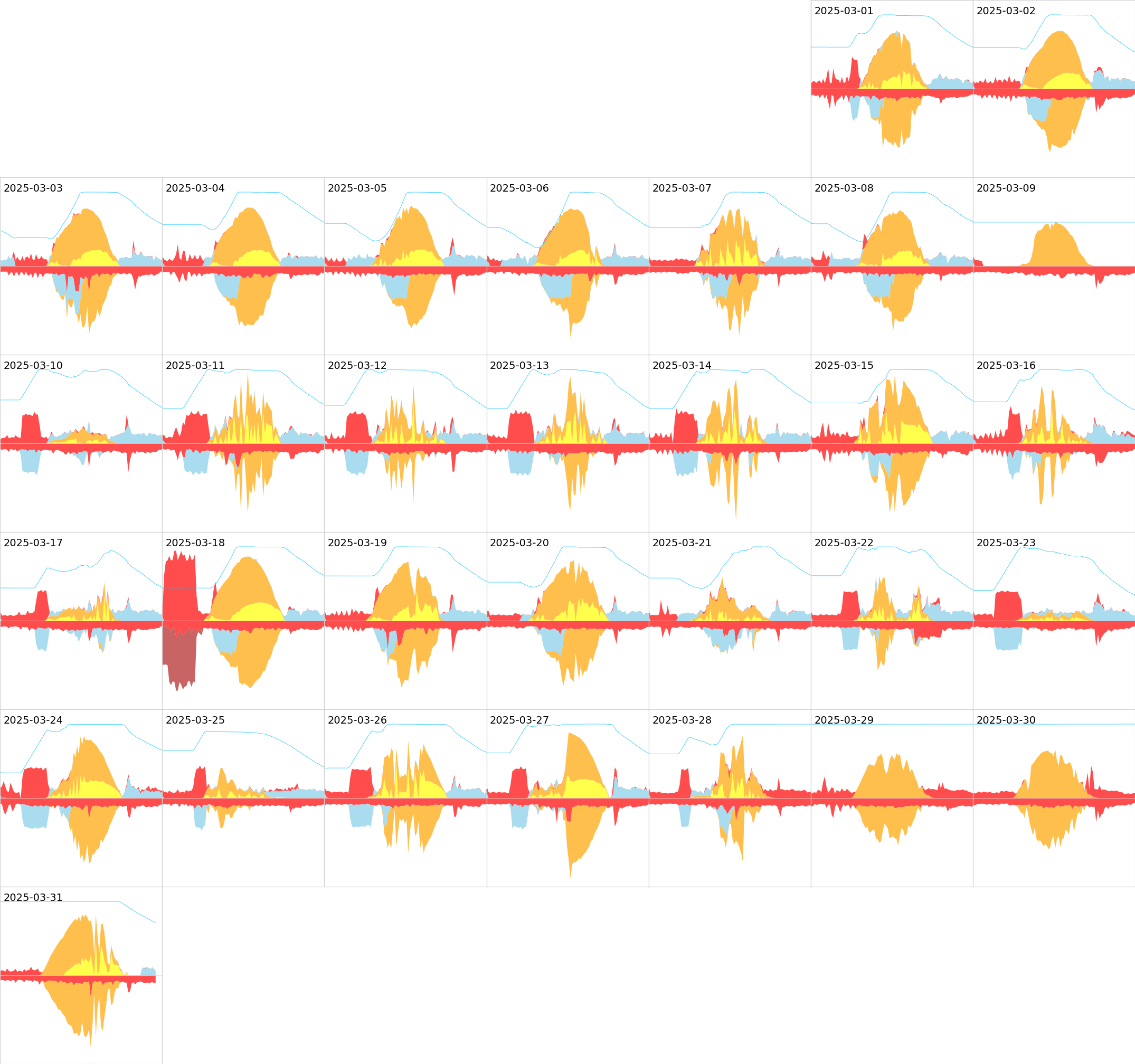
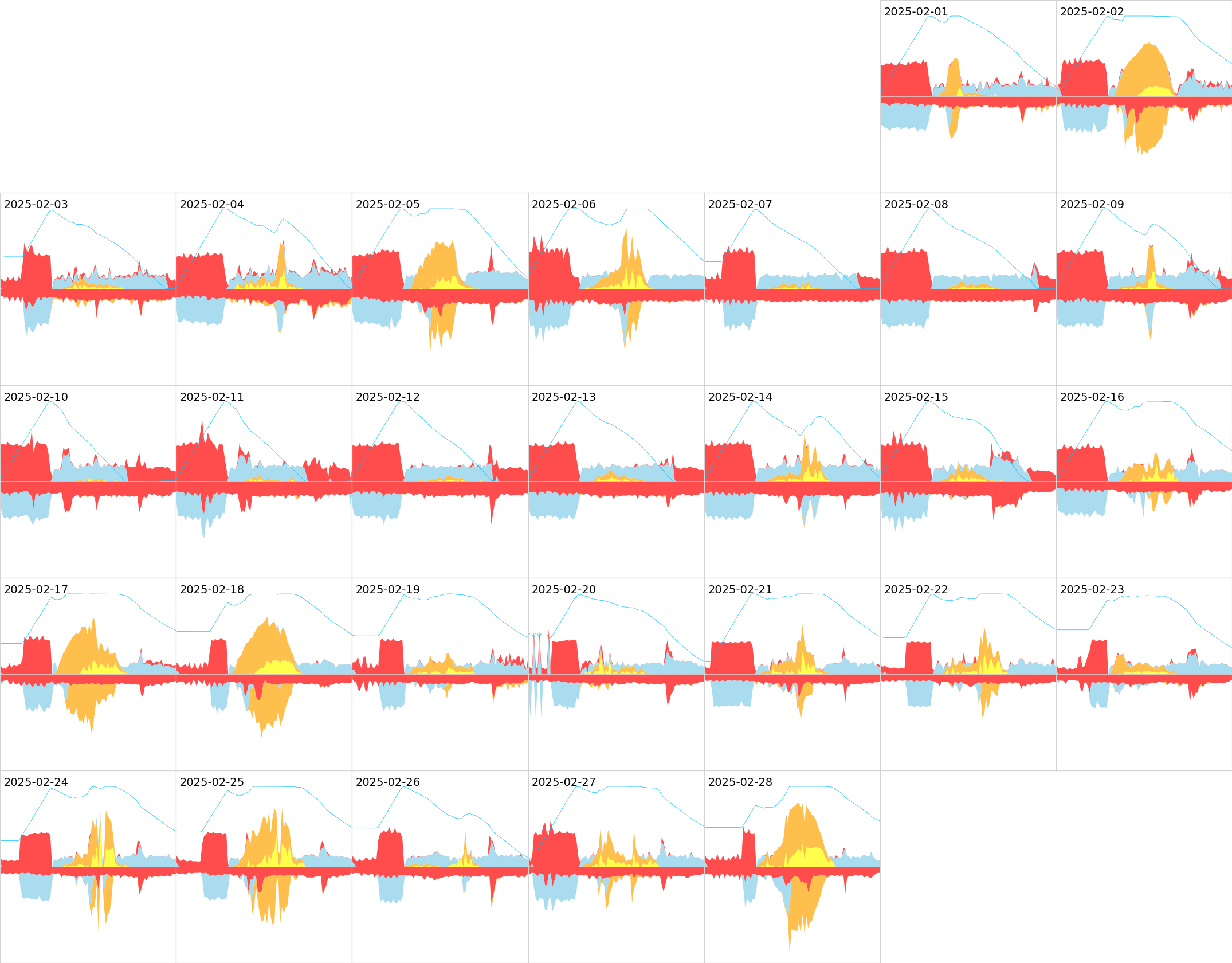
There is some mains usage data missing on the night of 10 Jan, which is why it looks strangely bumpy.

Overnight has seen a lot of battery charging, plus one car charge on 21 Dec. On 3 Dec and 4 Dec thean upgrade to the system was installed that allows us to keep using the battery/PV if there is a power cut. Not coincidentally, from 4 Dec midday to 7 Dec evening the domestic use (red area below the axis) was not being recorded, and has been set arbitrarily to 1kW. Also not coincidentally, from 4 Dec midday, the generation from garage PV (yellow area above the axis) has not been recorded, and is omitted (at this time of year it is very small anyway); we are hoping to get this issue fixed in the new year. On 23 Dec, the automatic charge scheduler didn't charge the battery overnight; since then we have been using a manually determined charge schedule.
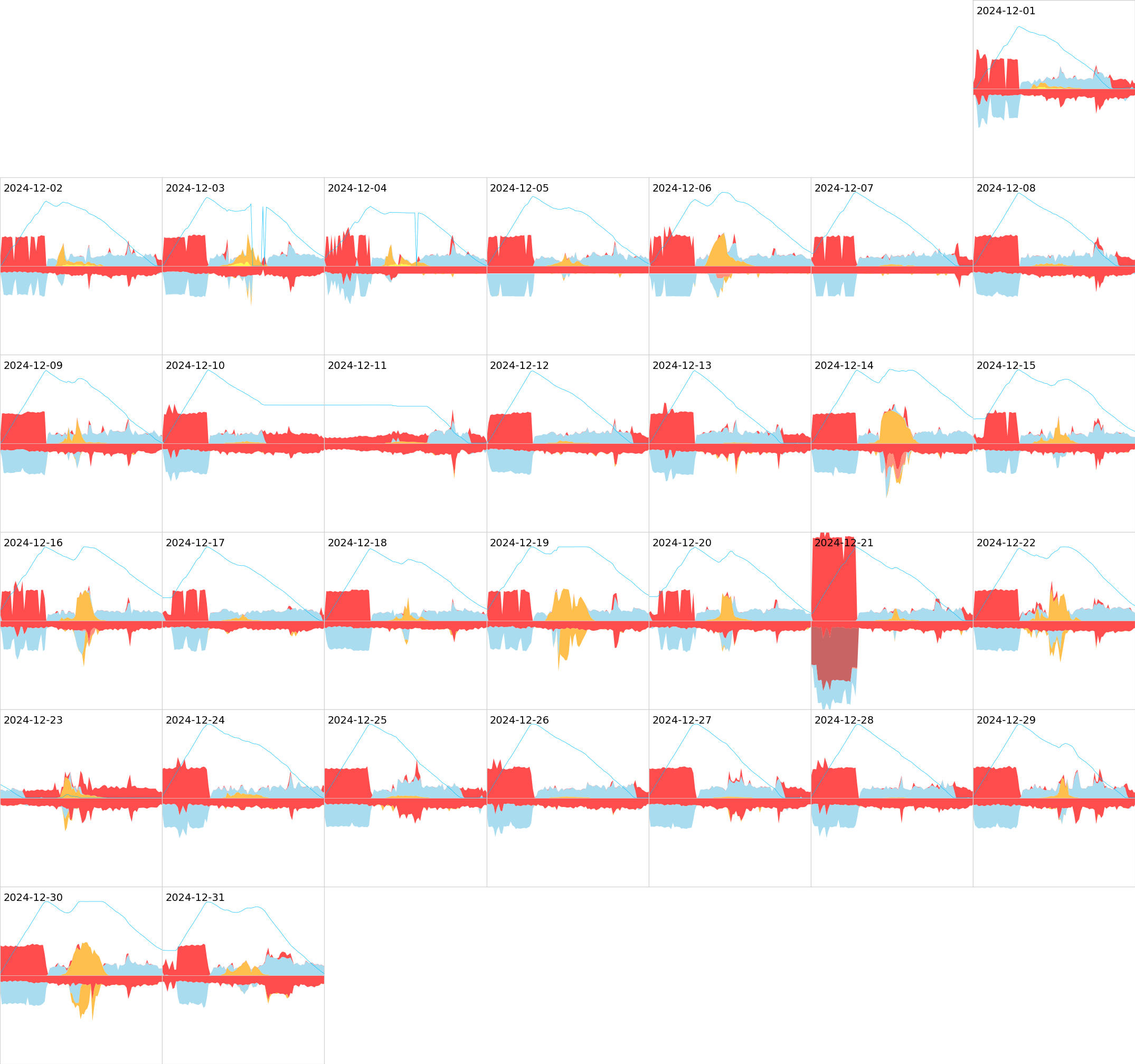
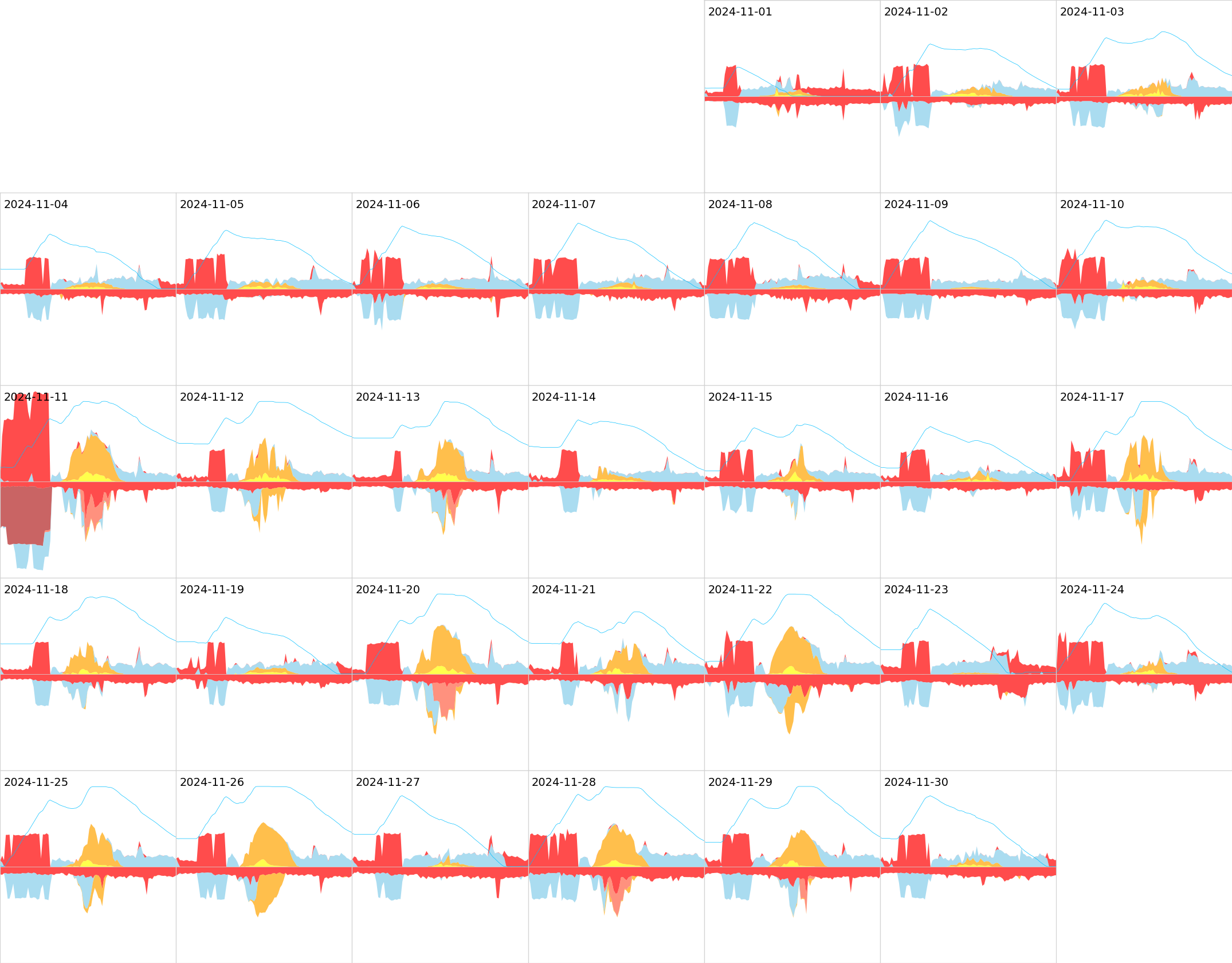
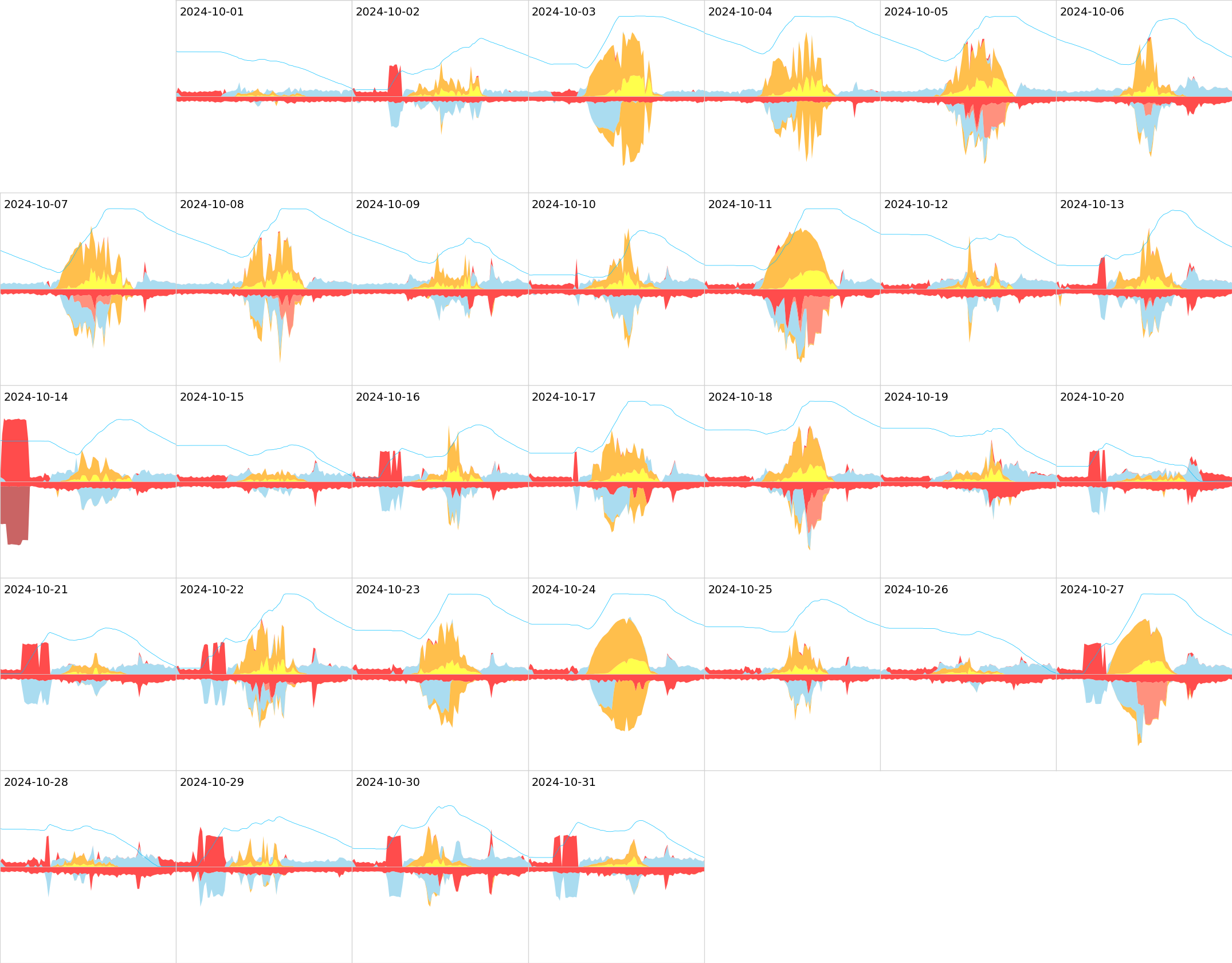
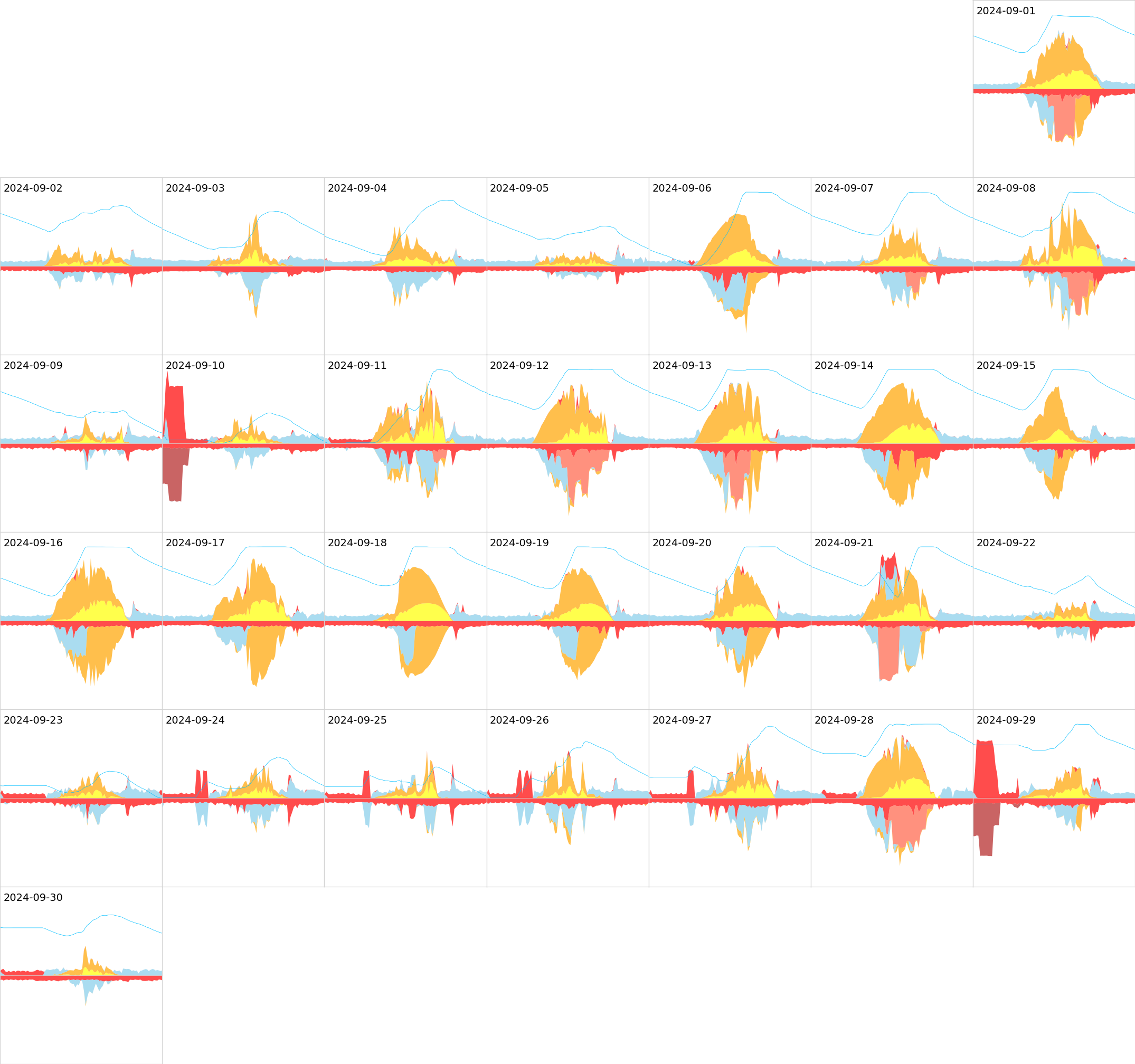
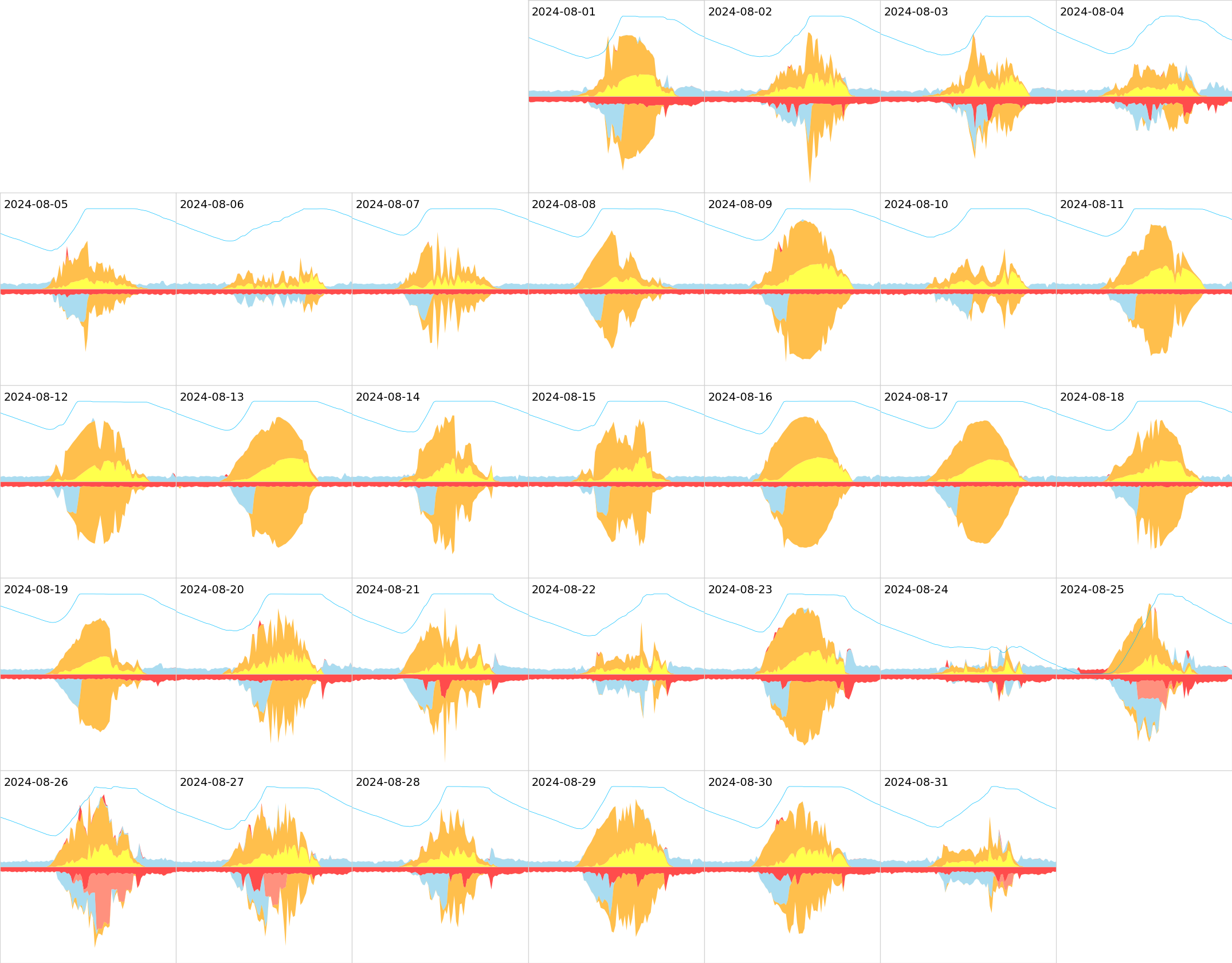
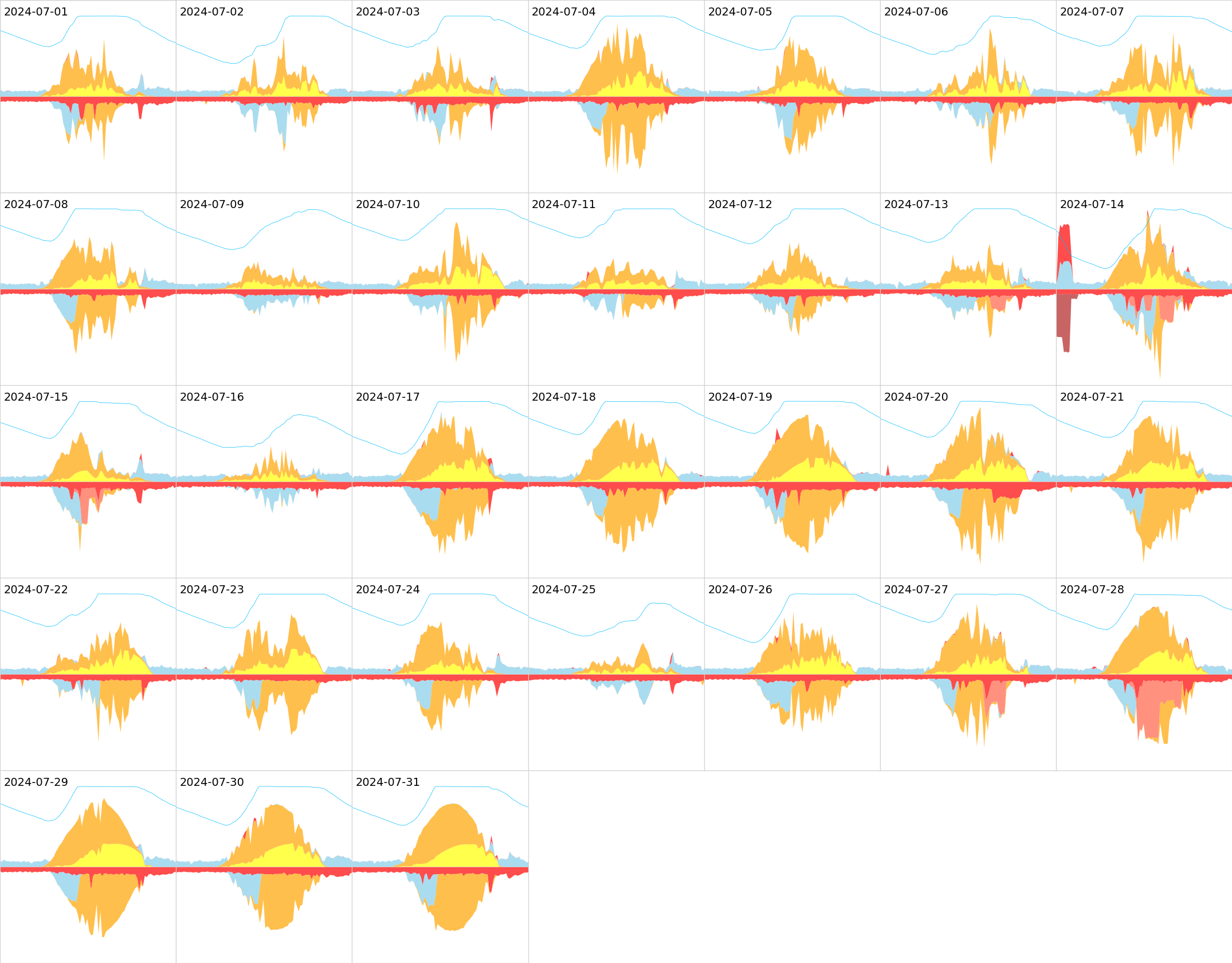
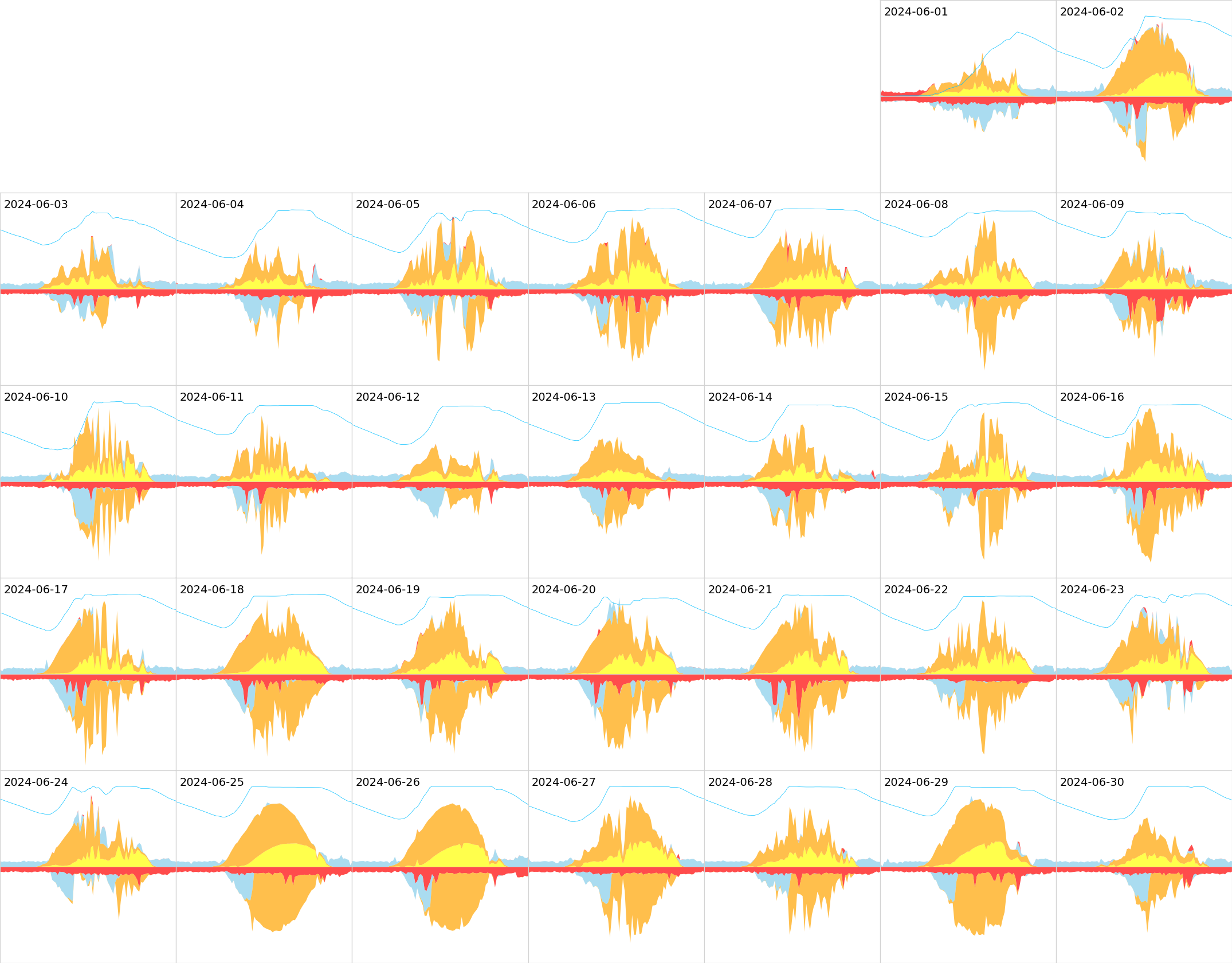
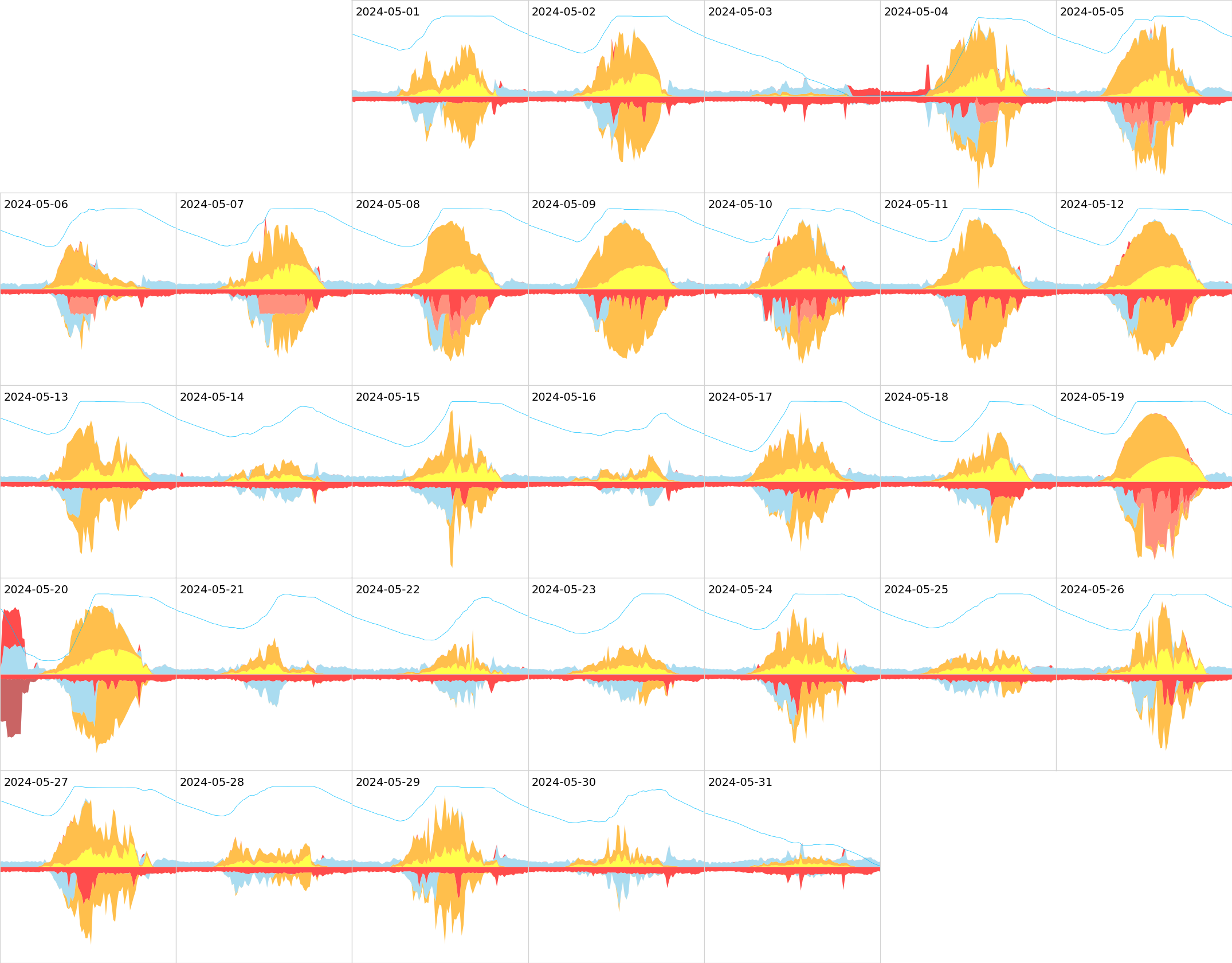
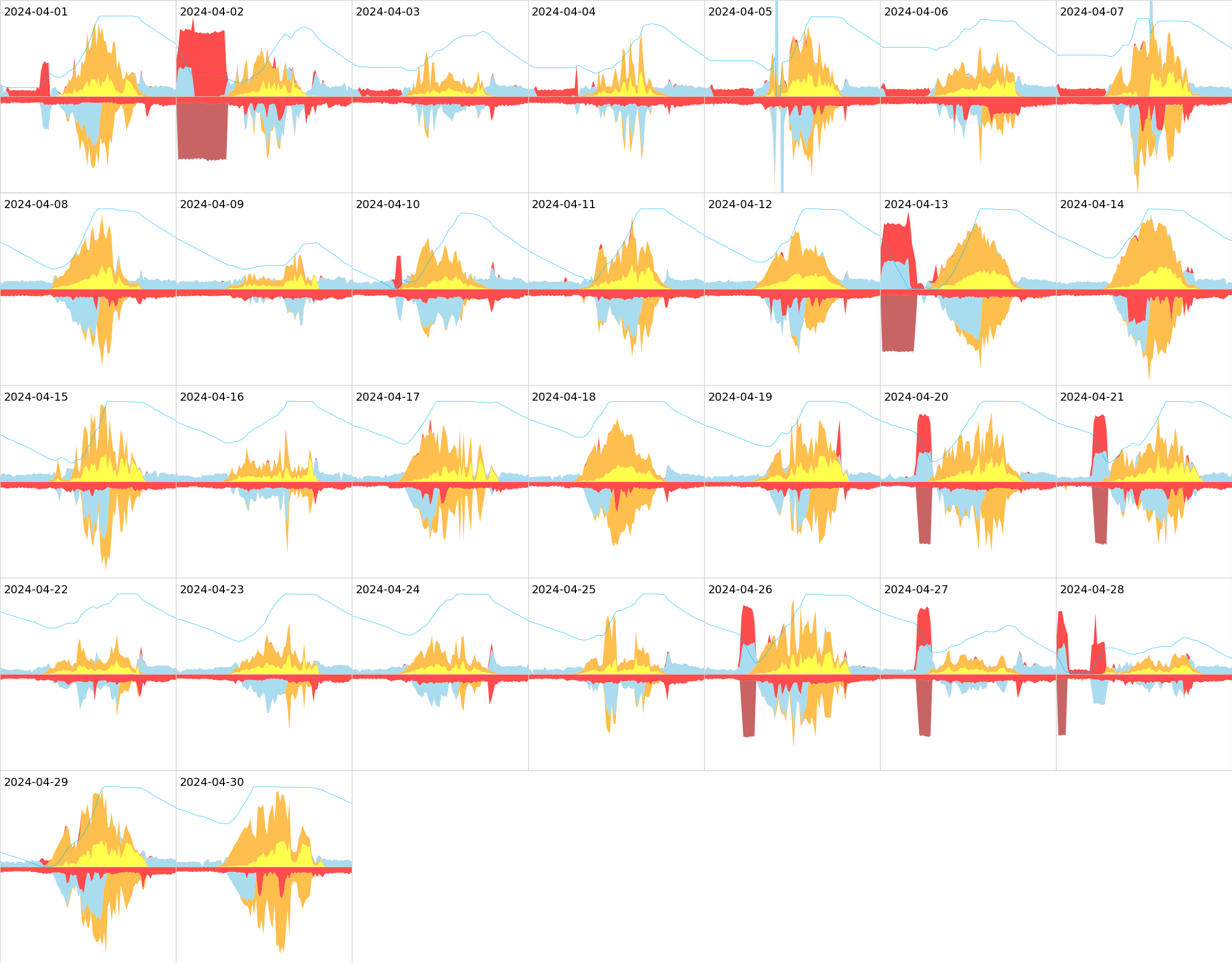
Our annual power imported (red), generated and used (orange), and generated and exported (green), in MWh (bars), with shading indicating the contribution of the respective months. The labels above the bars are the totals in MWh. The labels straddling two bars show: (left) our total usage, both imported and generated; (right) our total generation, both used and exported. (Data collection started on 8 March 2014; 2014 Jan and Feb contributions have been estimated as the 2015 values, to aid comparison.)

Our daily power used and export, in kWh. The region above the axis represents our usage: blue is “surplus” generated power used by the immersion heater (data on this started being collected from 1 Jan 2015); orange is the remaining ordinary generated usage (or the total generated usage in 2014); red is the extra imported from the grid. The green region below the line is surplus generation exported to the grid.
There are three days of immersion data missing in early April 2015: the (lighter) orange here represents the total generated usage. There is a week of usage data missing in May 2015: the blue is the immersion heater usage, so total generation was at least this. The immersion heater topup system stopped working on 10 Sept 2019, so the lack of blue after that is a genuine zero: instead of using this power to heat our water, we are exporting it.
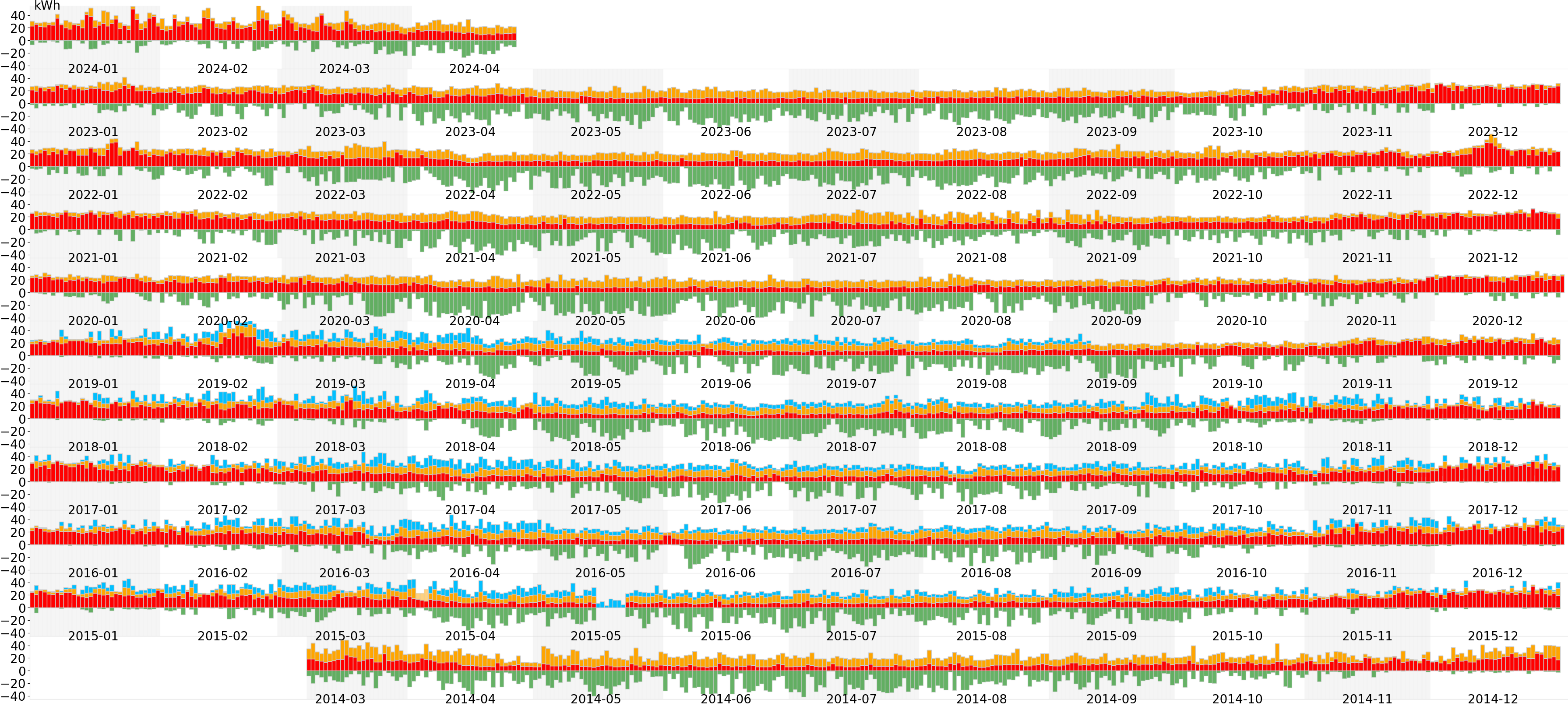
Our daily power used and export, in kWh, by month, using a jitter plot (some jitter is applied to the horizontal position, to prevent overlapping).
The region above the axis represents our usage: orange is generated usage, red is the extra imported from the grid. The green region below the line is surplus generation exported to the grid.

Our daily power used and export, in kWh, by month, using violin plots (a notched box and whisker plot—where the box shows the inter-quartile range, with 95% confidence interval notches; whiskers show data within 1.5*IQR—plus a kernel density plot). The final, partial, month tends to have larger notches, because it has less data.

Data is gathered at half minute intervals from the Wattson meter. The horizontal time axis runs from midnight to midnight GMT/BST. The vertical axis runs from -8kW to 8kW. The region above the axis represents our usage: orange is generated usage, red is imported from the grid. The green region below the line is surplus generation exported to the grid. Numbers are in kWh; #orange + #green = the total generated. This is slightly different from the other power generation totals, since it is being recorded by a separate, and less accurate, meter.
On the daily plots, you can see specific usage. The big early morning generated usage is from the immersion heater. The early evening spike at the weekends is dinner being cooked in the electric oven; during the week we usually use the gas hob.
On “green date” days, the green area is greater than the red area (#green > #red), meaning we export more than we import, so are nett generators. The rest are days where we import more than we export, taking more from the grid than giving back. On “orange date” days, we still generate more than we import, but use enough of it that we are not nett exporters. On “red date” days we import more than we generate; but even so, may still export a little during the day.
The situation is actually greener than this implies: some of that orange usage of generated power is being used to heat our water, thereby saving gas consumption, too. From 1 Nov 2015 we started collecting data on how much power is being sent to the immersion heater during the day: this is shown as blue on the plots. So after 1 Nov 2015, orange represents generated usage in all but the immersion heater.
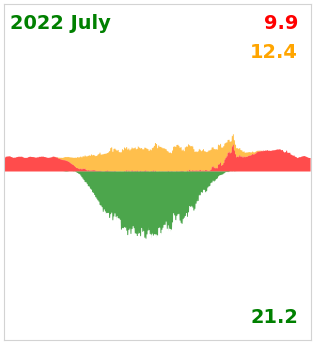
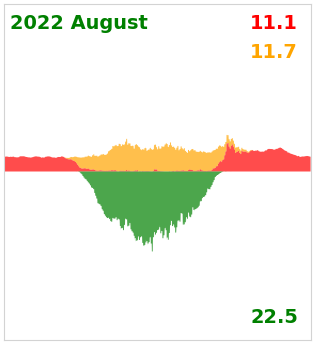
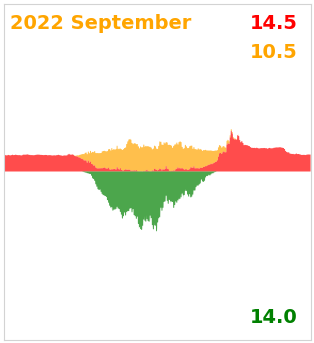
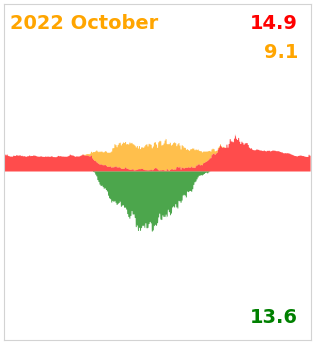
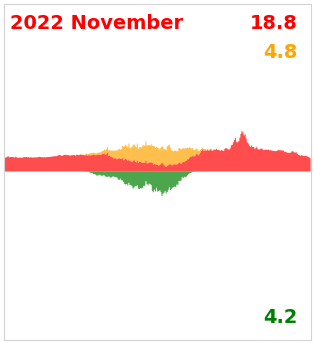
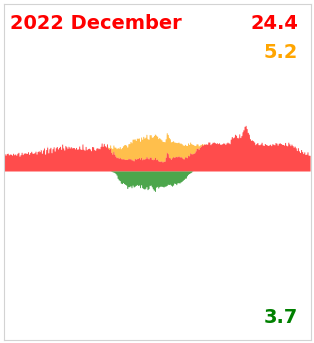
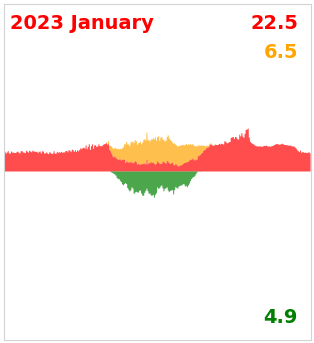
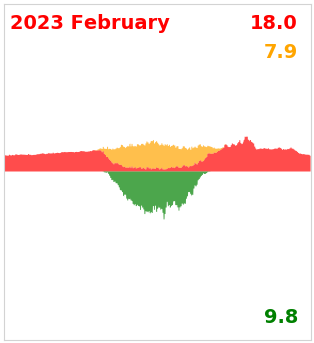
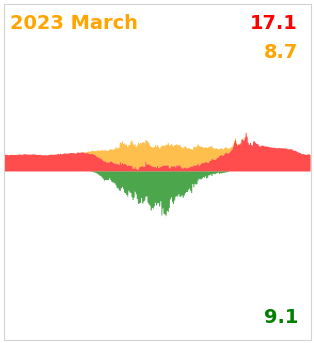
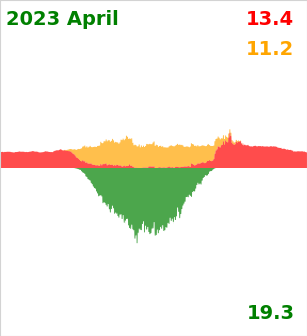
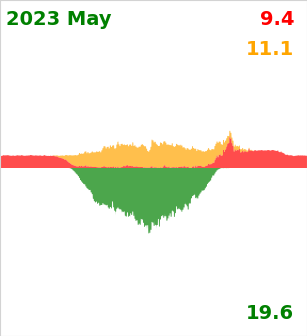
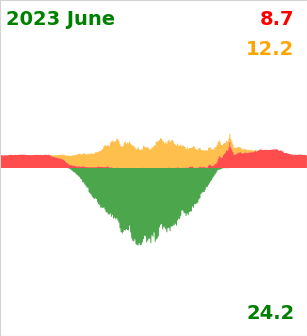
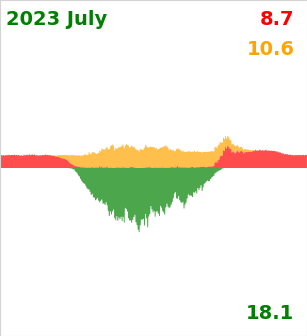
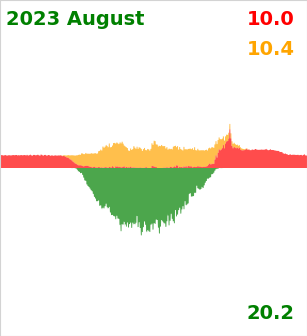
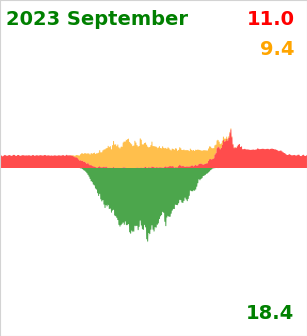
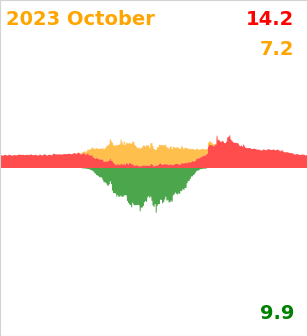
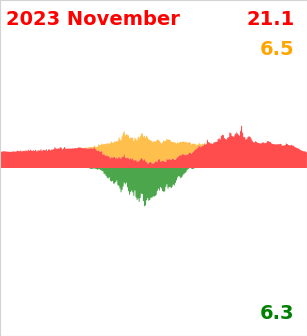
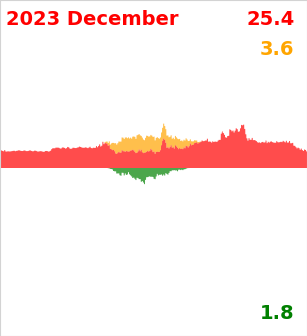
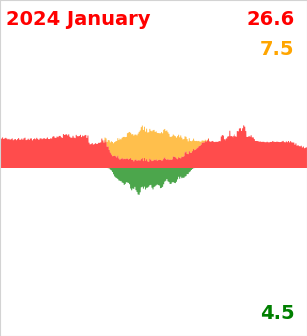
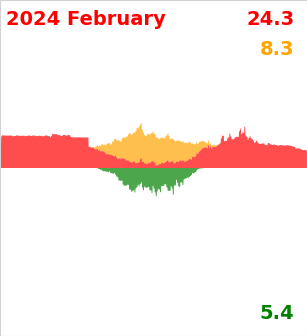
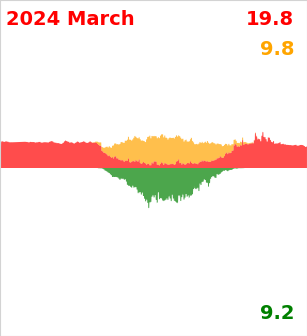
On the 18th the solar PV was switched off for about an hour, while the new secondary PV system was wired in. On the 22nd, all power was off for about half an hour while the new storage batteries and Zappi EV charger were wired in to the mains. This is the last month these charts are used, as the system no longer gathers the correct data. Se above from new charts.
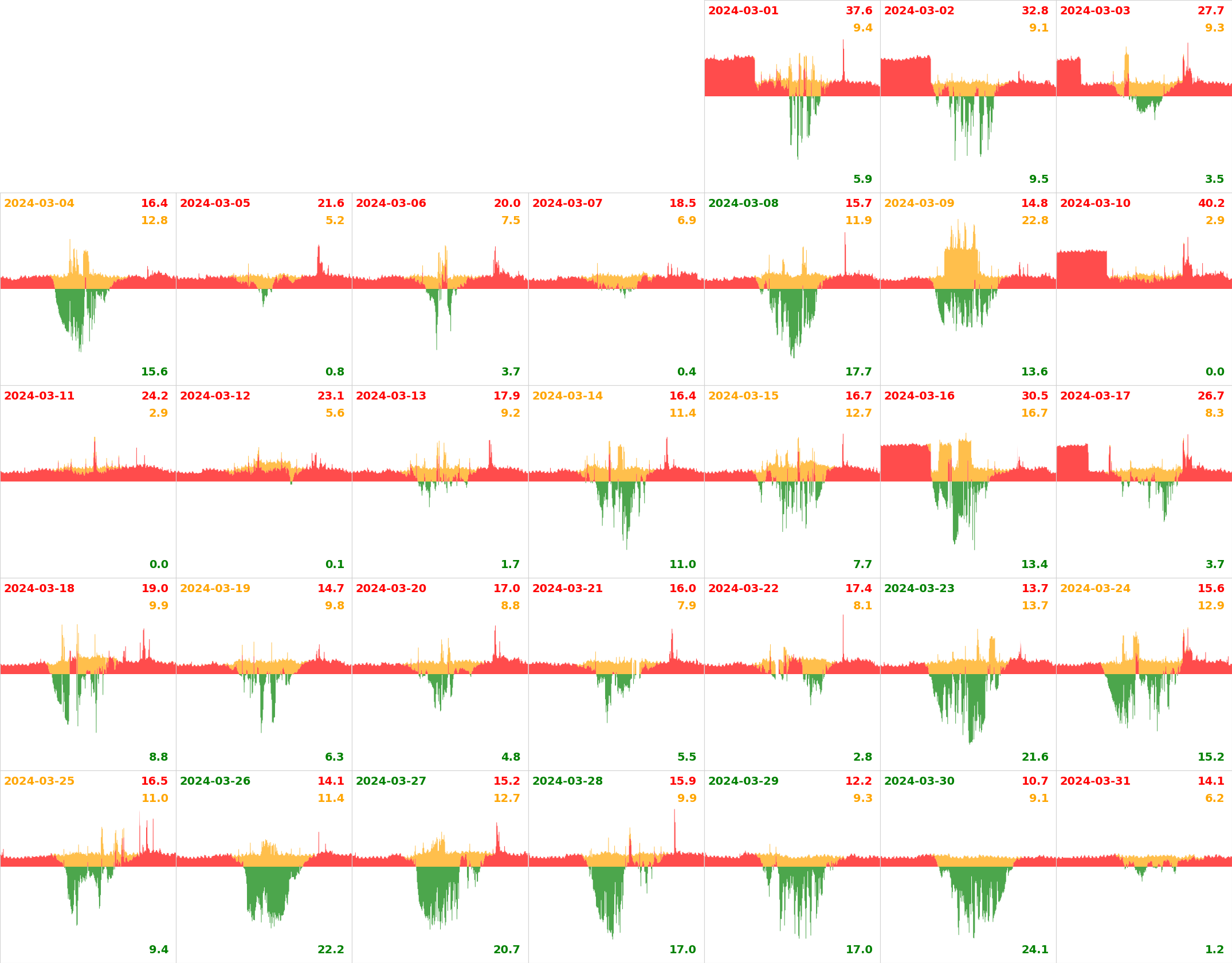
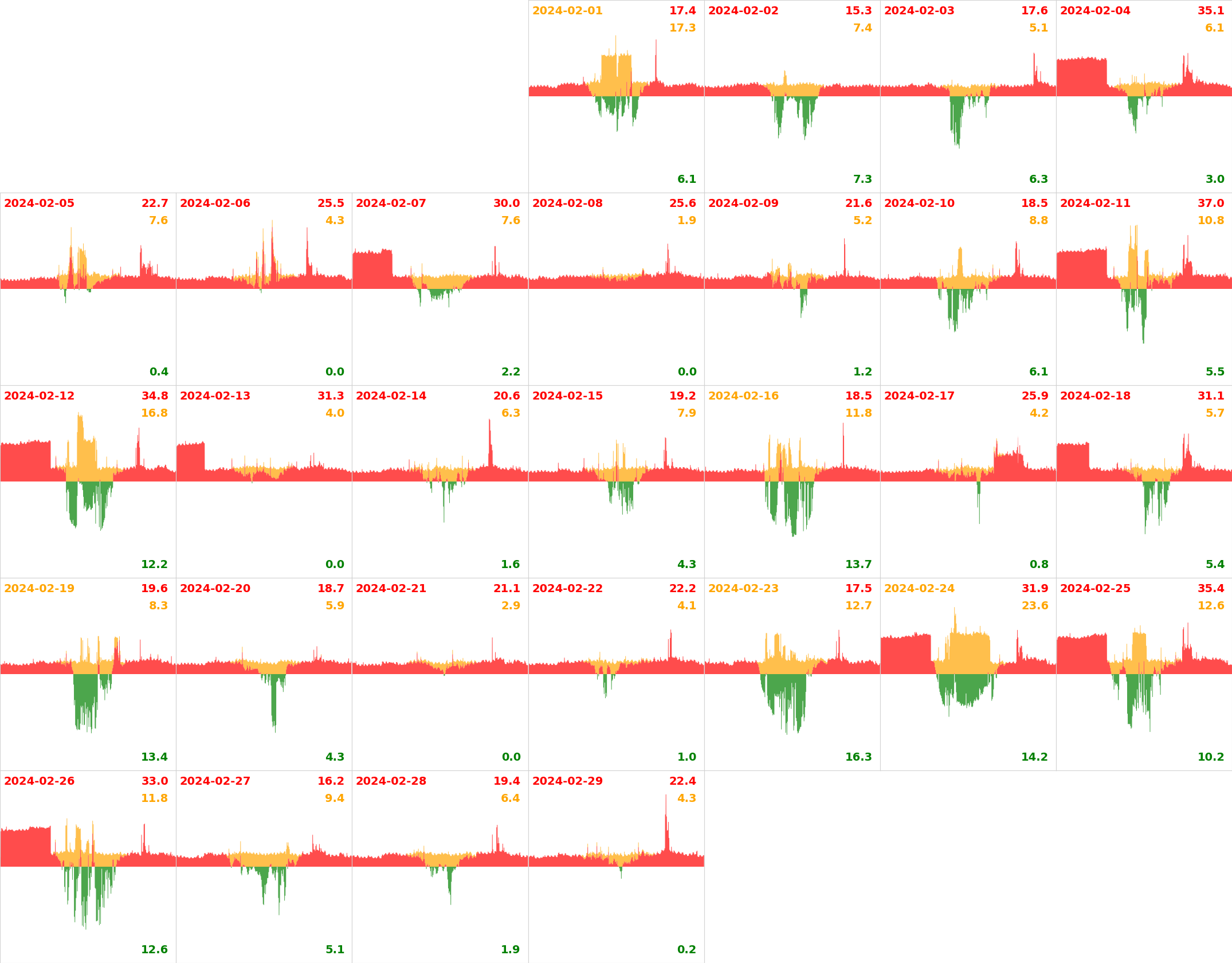
Early January 2024, we got an EV (electric car). We are still waiting for the 7kW Zappi charger to be installed, so we are currently charging slowly (about 2.3 kW) for 7 hours at a time overnight (on a cheap rate electric car tariff), and for shorter periods during the day when we are generating enough.
On 25 Jan 2024, the pump on our sewage tank failed "on" (it didn’t auto-stop after emptying the tank), but we didn’t notice until we saw the electricity usage the next morning. Ouch.
